- info@naturebylennart.com

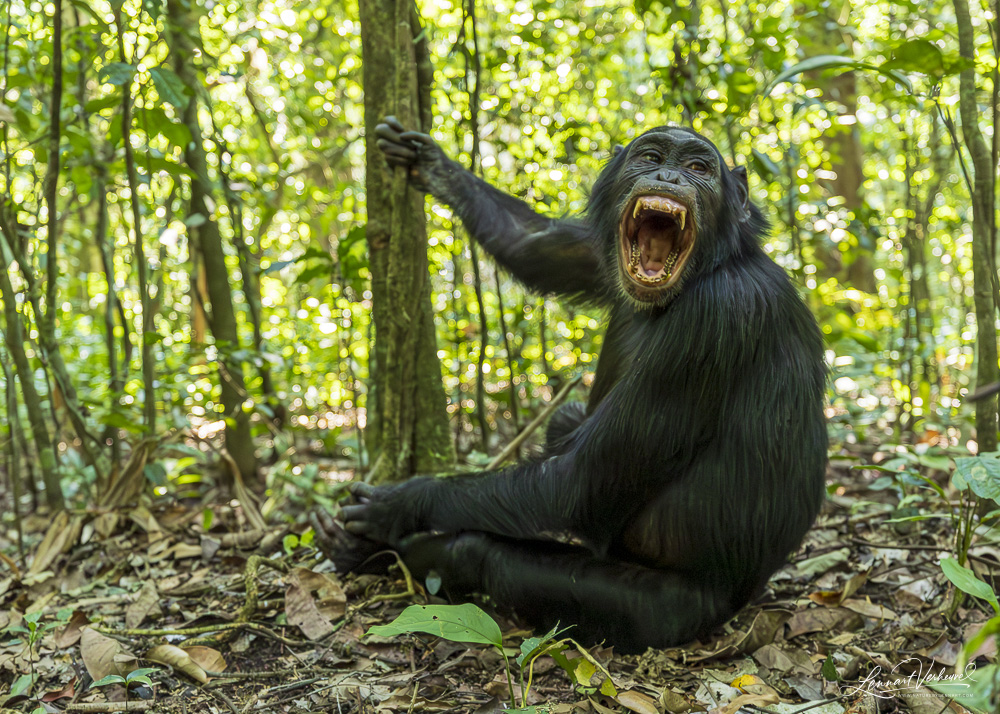
The Chimp Trek feels a bit like the natural counterpart to the Gorilla Trek in Uganda. The parallels are easy to see: both animals belong to the so-called great apes, and in both cases they are habituated to people. No binoculars required!
Still, at first I was far less excited about the Chimp Trek than the Gorilla Trek. That had a lot to do with reputation. While gorillas are known as the “gentle giants” and are mostly vegetarian, chimpanzees are a different story. They don’t mind a bit of meat, and they’re not above hatching sinister plots to stalk and kill young gorillas or chimpanzees from rival groups—sometimes even using tools as weapons. All of this sounds eerily human. I’ve also learned that wild chimpanzee groups are treated with more fear and awe by local people than gorillas are (though gorillas aren’t exactly cuddly either).
So who would want to spend time among such killers? Of course, that label is an exaggeration, since chimpanzees are ultimately just animals behaving like many others. They need food to survive, and because of their higher intelligence and ability to cooperate, their behavior can feel uncomfortably close to our own. Not for nothing are chimpanzees genetically our closest relatives, which makes their behavior a cause for reflection: is their primitive aggression really so far removed from us?
But chimpanzees are far more than cunning hunters. What really stands out is their intelligence. Their ability to cooperate and form complex social structures is extraordinary. Entire books and films have been based on the life of a single chimpanzee. That makes these groups a fascinating subject of study, and I didn’t want to miss the chance to be a “fly on the wall.” In fact, I was looking forward to it!
At first I thought the animals stayed mostly in the trees, making photo opportunities less rewarding than with gorillas. Later I learned that chimps are often approachable and regularly come down to the ground to forage. Wildlife sightings are never predictable, but I was hopeful—and ready to make the most of it.
A Different Target First: the Green-breasted Pitta
Before it was time for the chimps, we had to focus on another species. And not just any species: the Green-breasted Pitta. This bird was decribed in the early 1900’s, but was rediscovered for the birding community in 2005, actually during a Chimp Trek. I first heard the story on the Mammalwatching podcast. At that point, Africa was thought to actively host only one pitta species anymore, so the rediscovery of the second was a real shock. It also raises the question: how many species are still waiting to be found in little-visited countries like the Democratic Republic of Congo?
In any case, the pitta’s existence was certain, and Kibale Forest has since become a must-visit destination for birders. For us it was one of the main targets. We had two mornings to try. The species is considered relatively reliable, though people do miss it sometimes.
The key was timing. To have the best chance, you need to be in the forest at first light—ideally even earlier, since the bird often displays only in the early morning. So we insisted on an early breakfast and hurried to be in place on time. Despite some unavoidable delays, we managed fairly well, entering the forest at dawn.
We were glad that it didn’t take long before we heard the bird’s distinctive display sound! The bird makes this sound with it’s wings by shortly flying up from it’s perch. Our local guide quickly spotted it, and we were able to add it to our list as a visual sighting. Yes! It was still very dark, leaving us wanting better views.
Not long after, the bird disappeared, and silence followed. Clearly, the early start had paid off. Luckily, that wasn’t the end: half an hour later we heard it again and managed to find it in a better position. For a brief moment it perched beautifully on a branch, though it didn’t stay long.
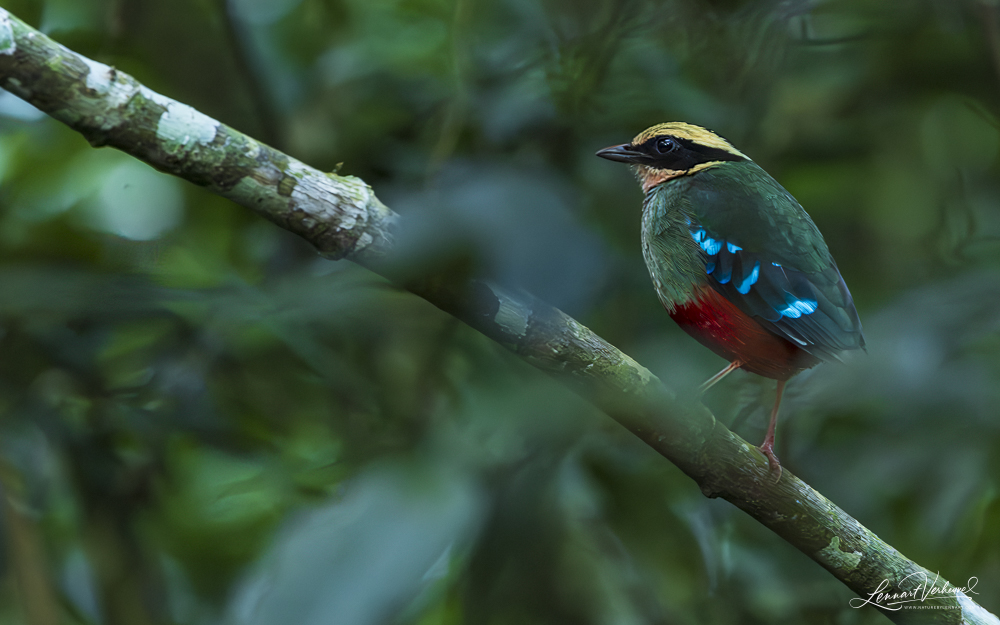
Green-breasted Pitta
Soon after, the bird chose another perch where it stayed much longer. We could fully enjoy the display, and I managed plenty of photos and even some video.
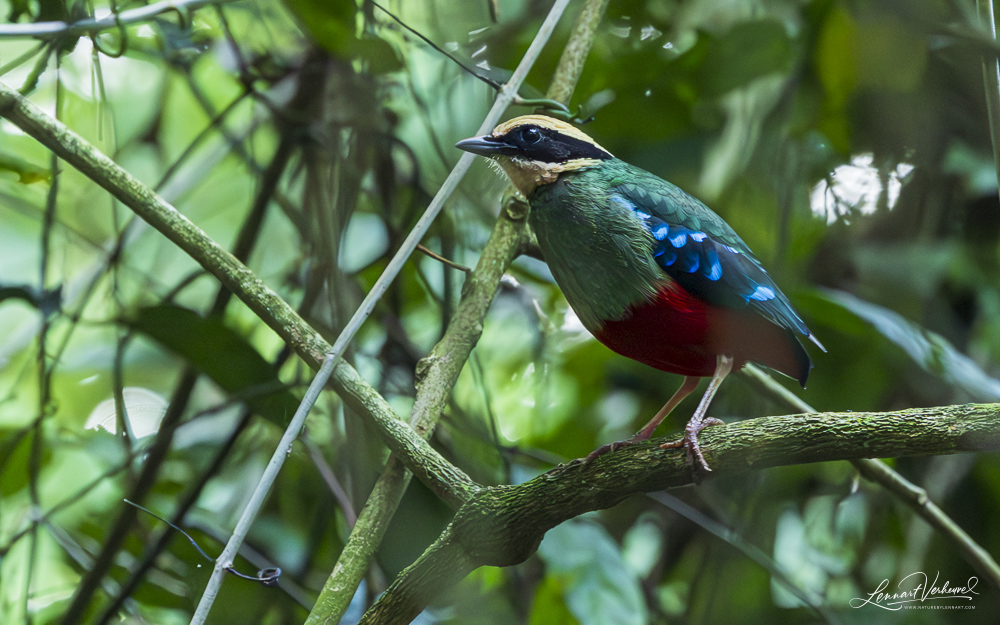
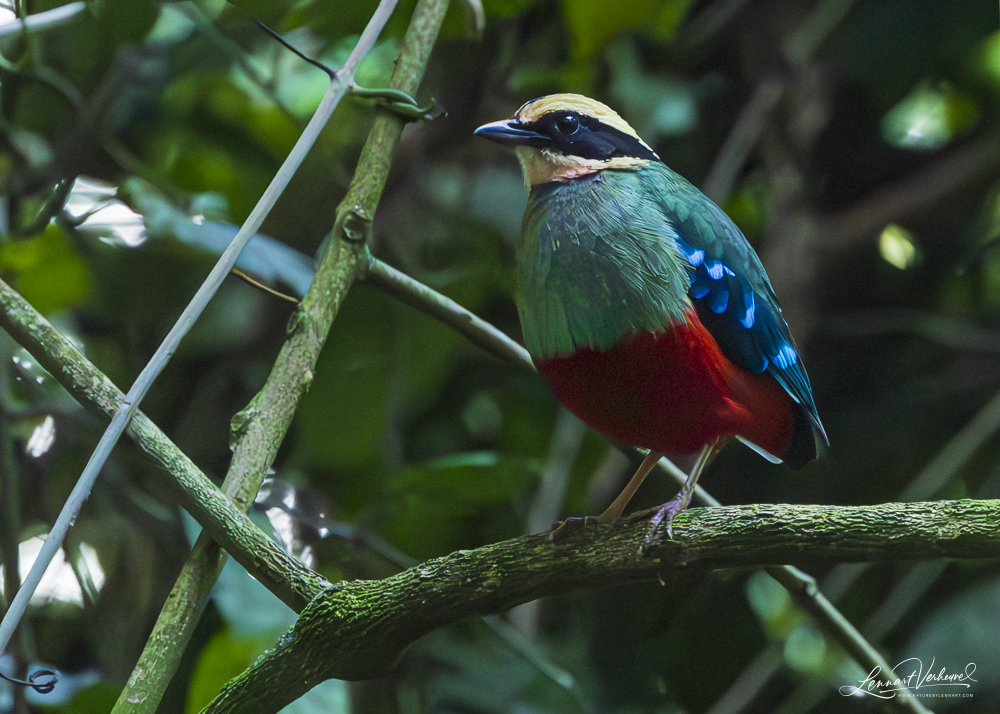
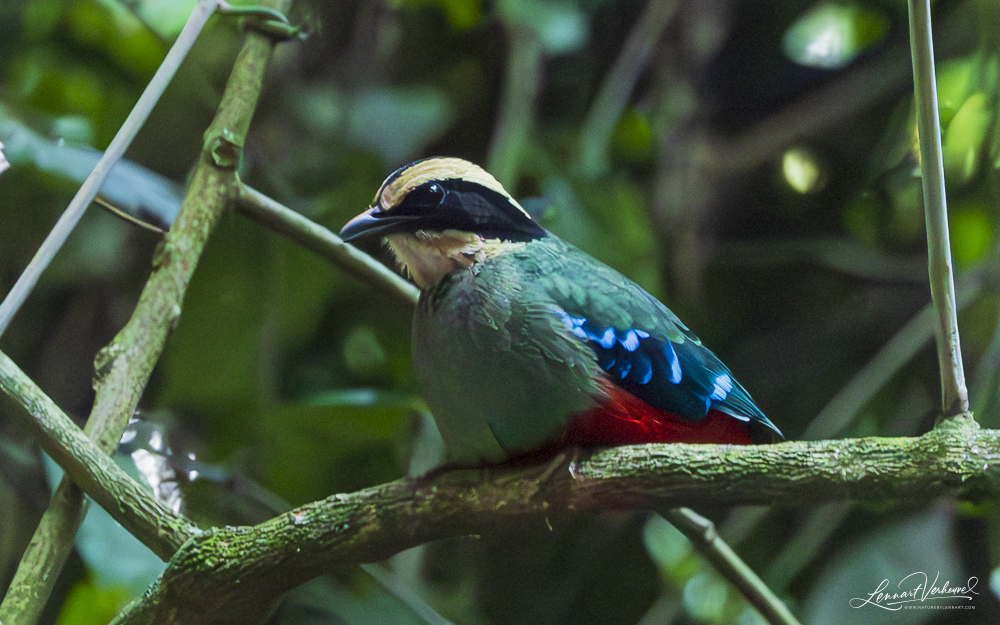
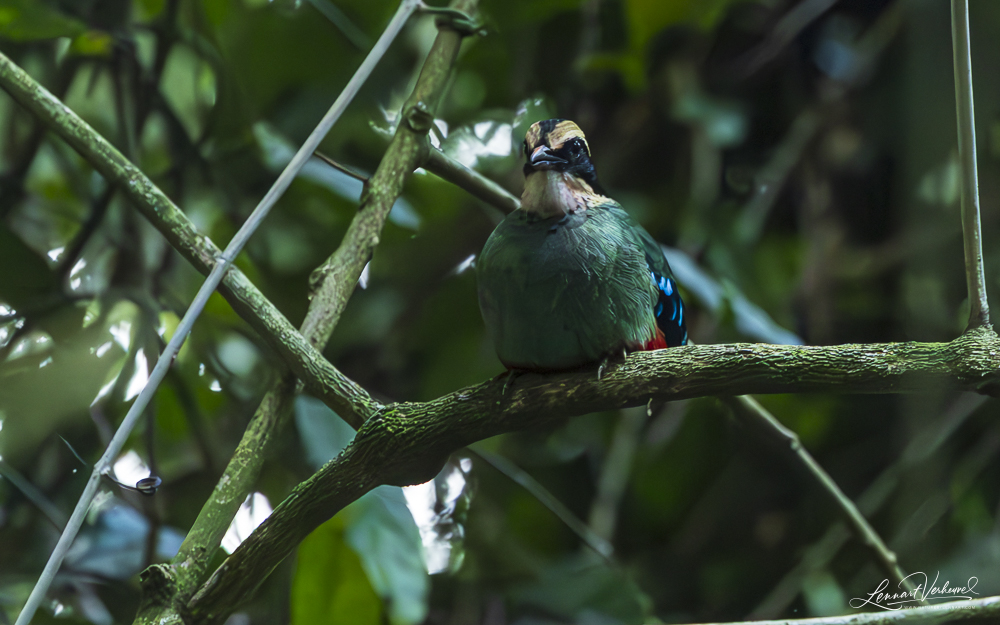
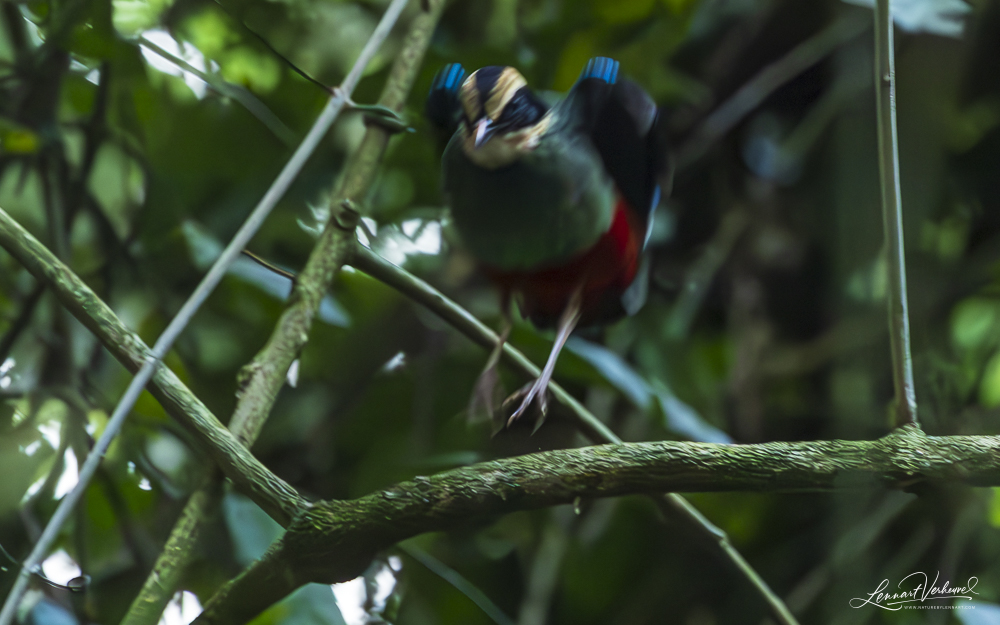
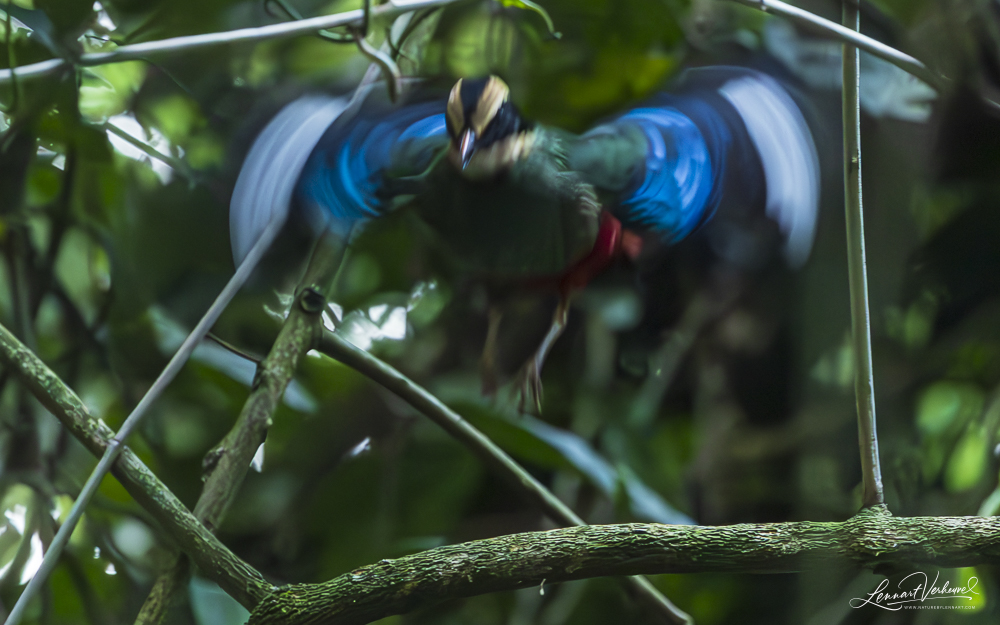
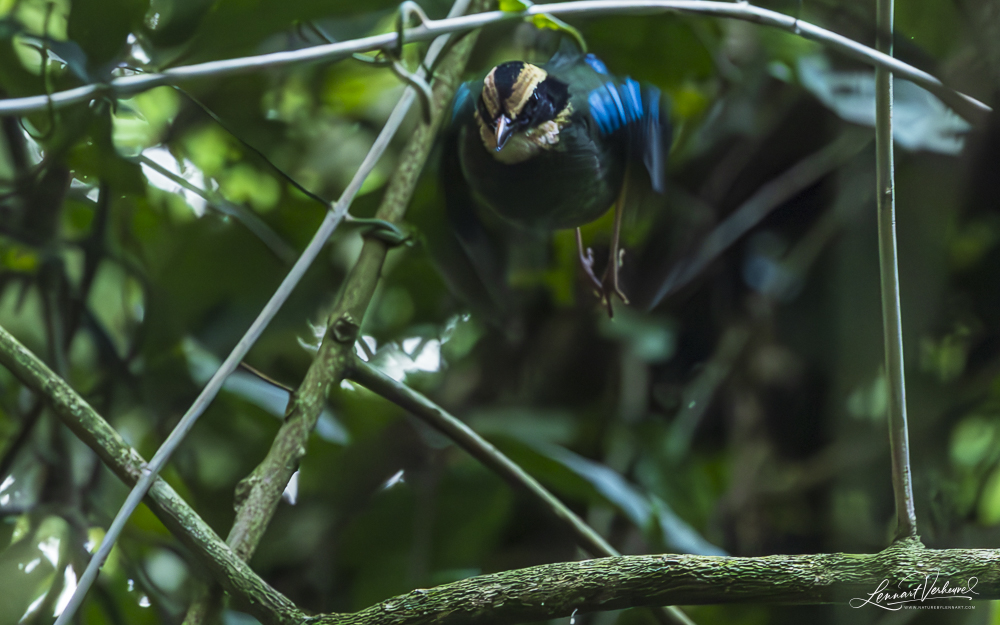
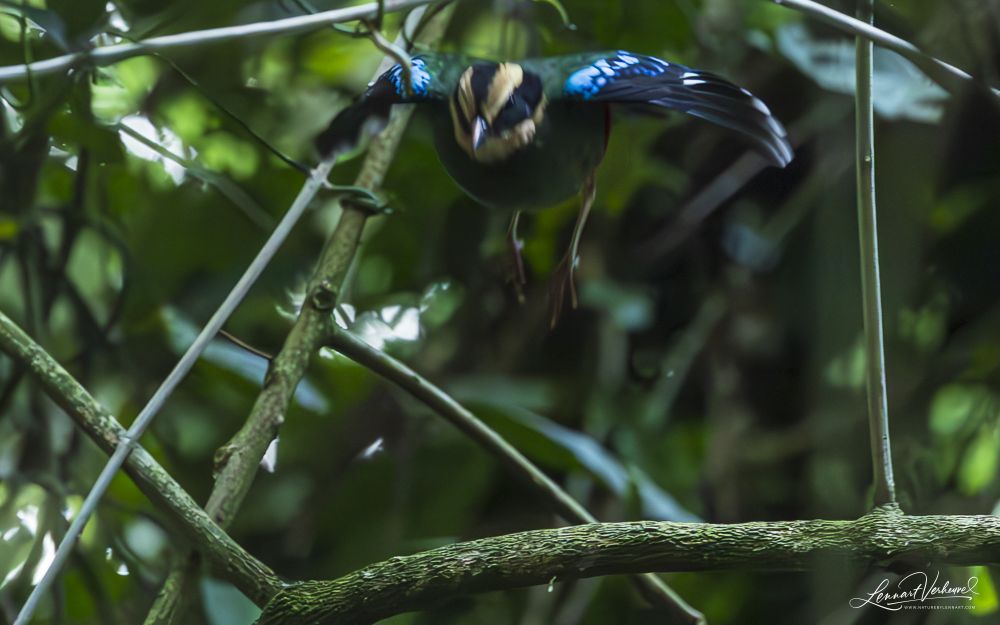
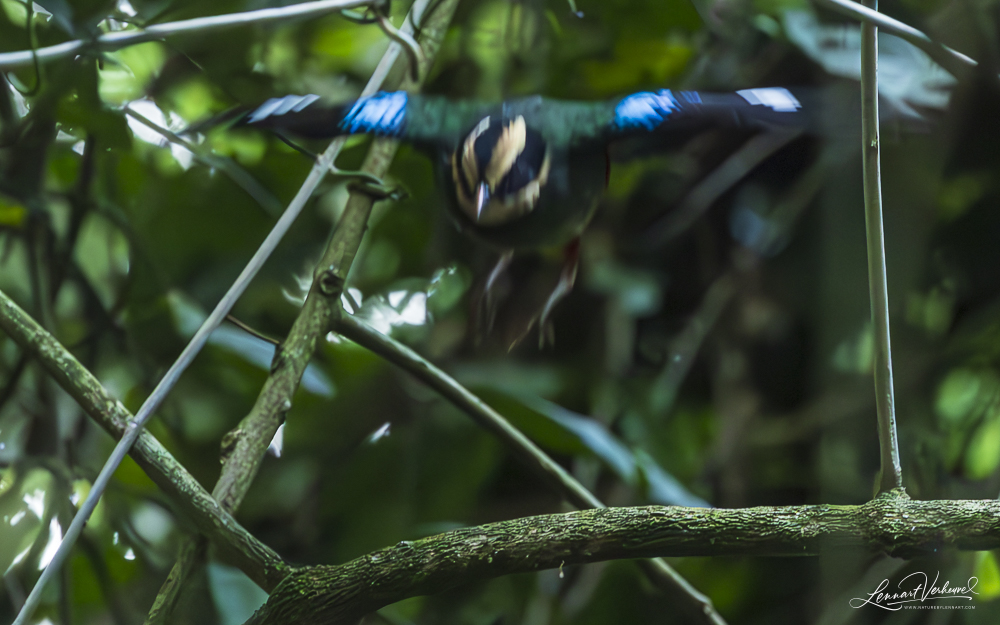
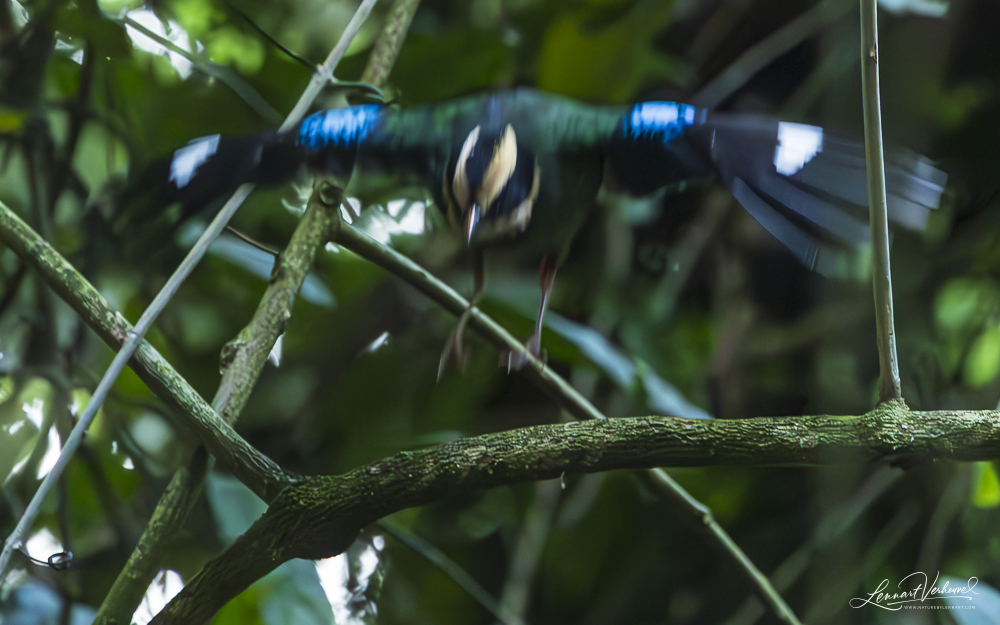
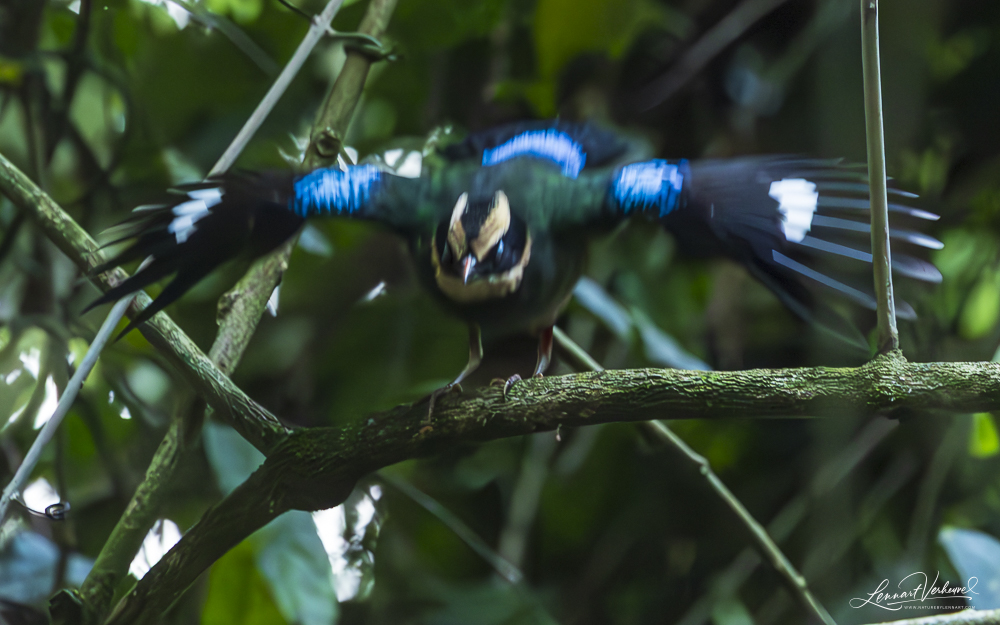
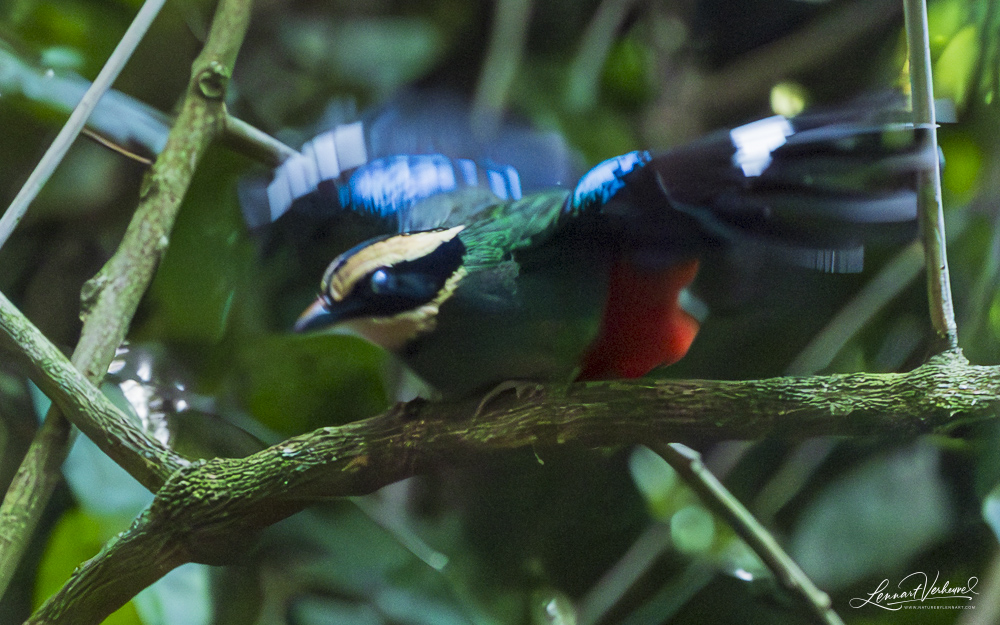
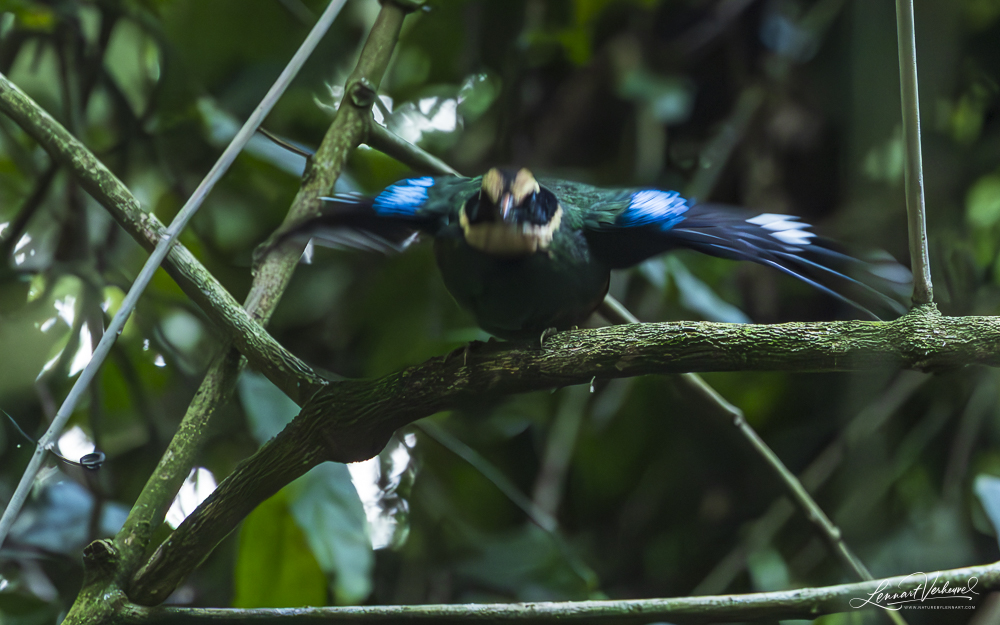
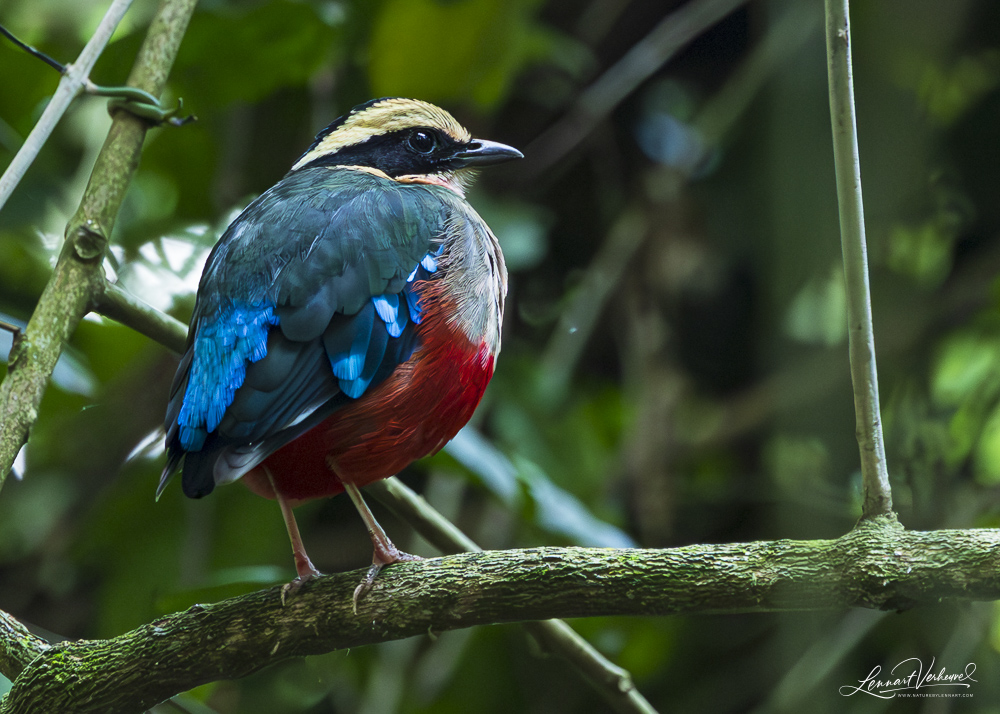
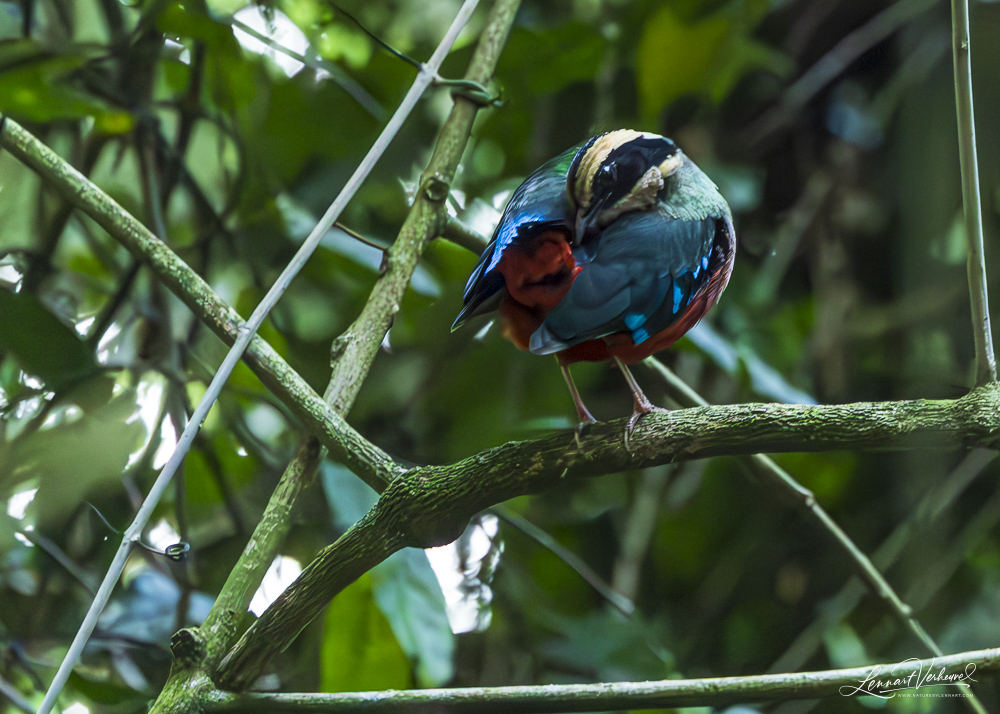
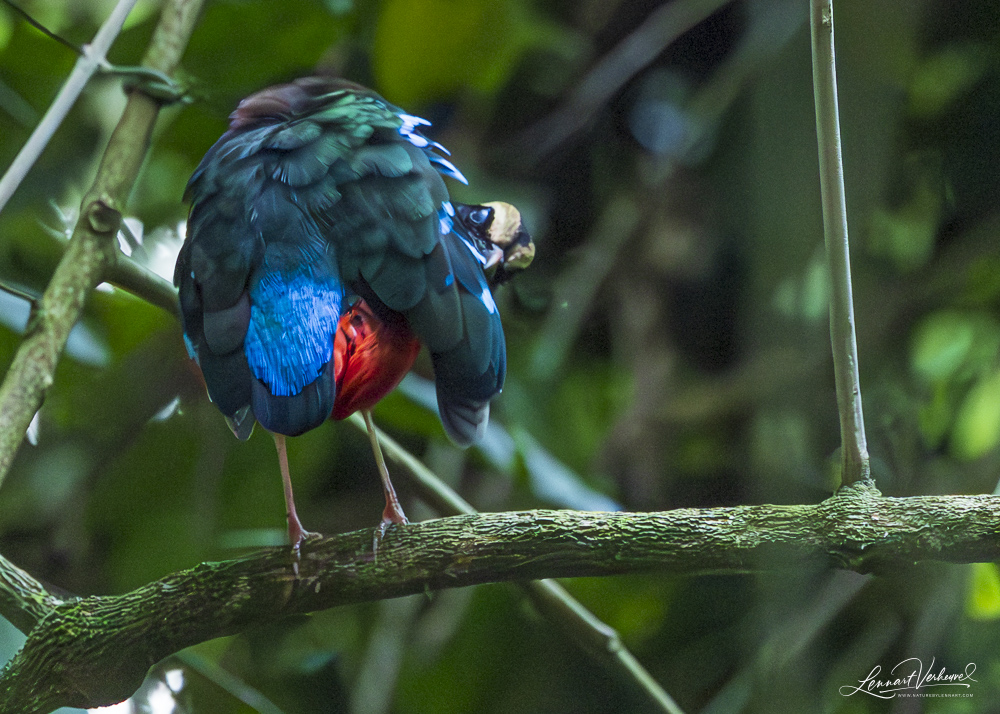
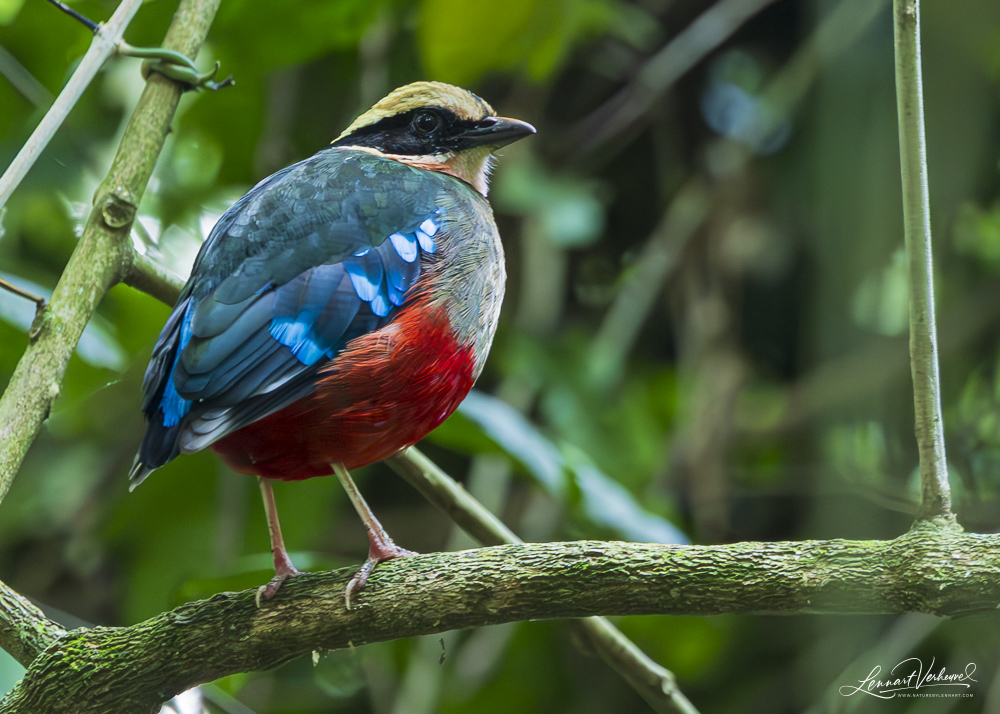
Green-breasted Pitta
Below you can find a short video as well.
We spent a few more hours in the forest, adding some new species. One highlight was the Narina Trogon, though I didn’t get good photos. By late morning, it was time for the chimpanzees!
Into the Forest with the Chimps
Following our guide, we entered the forest. Walks in Uganda are always accompanied by armed rangers (sometimes several), due to the risk of forest elephants. This time we had a large group: two guides and two rangers. It soon became clear that the Chimp Trek is a less “serene” experience than the Gorilla Trek.
Chimps can live in groups of up to 500 individuals and constantly keep in vocal contact. They are loud! On top of that, more tourists are allowed to visit the chimps at once. We found ourselves in a somewhat chaotic situation, with chimps screaming from the trees and others sitting on the ground next to groups of tourists. Fortunately, our guide had a clear plan and led us to an interesting section of the group.
First, we had a brief but wonderful encounter with a mother and a young chimp.
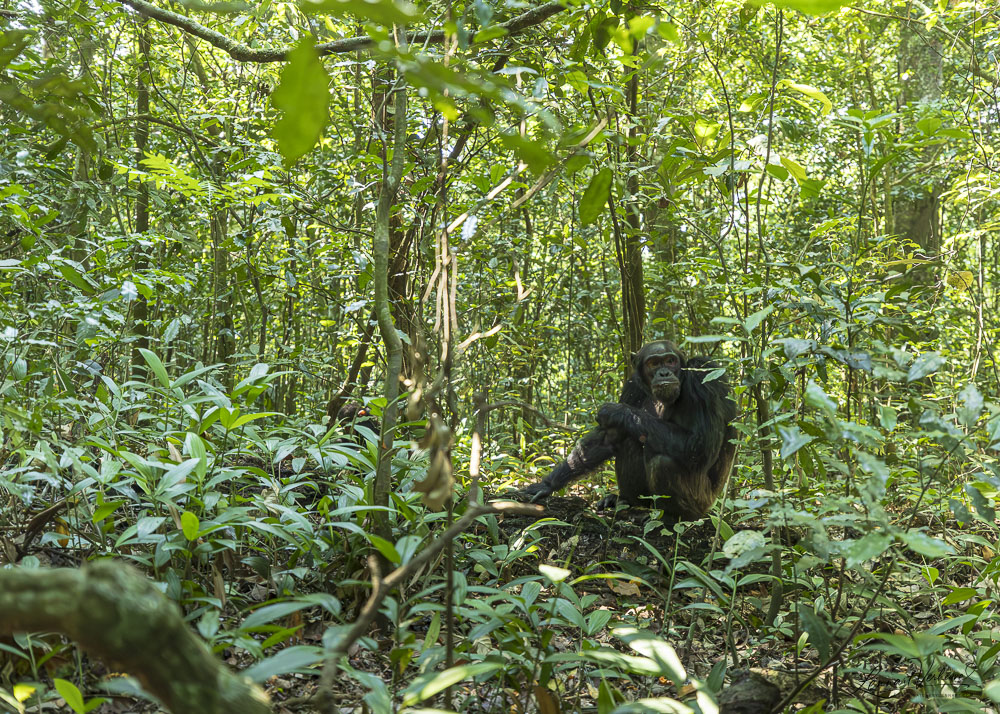
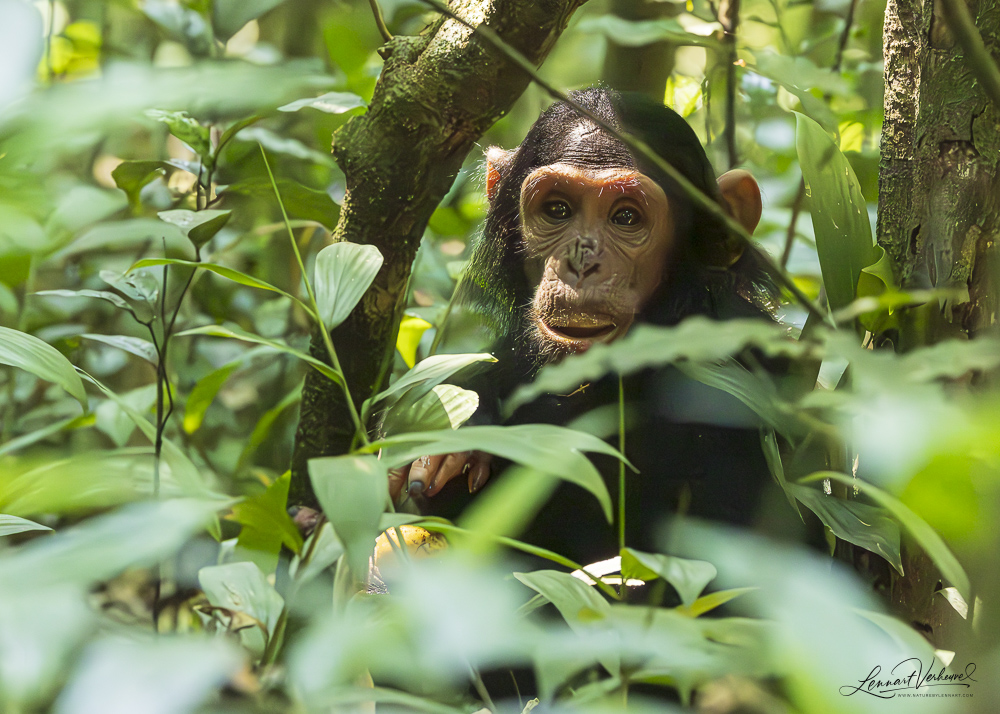
Chimpanzee
Then, a little further along, we met two adults right on the trail—great for photos. When one chimp approached us, I managed a few wide-angle shots.
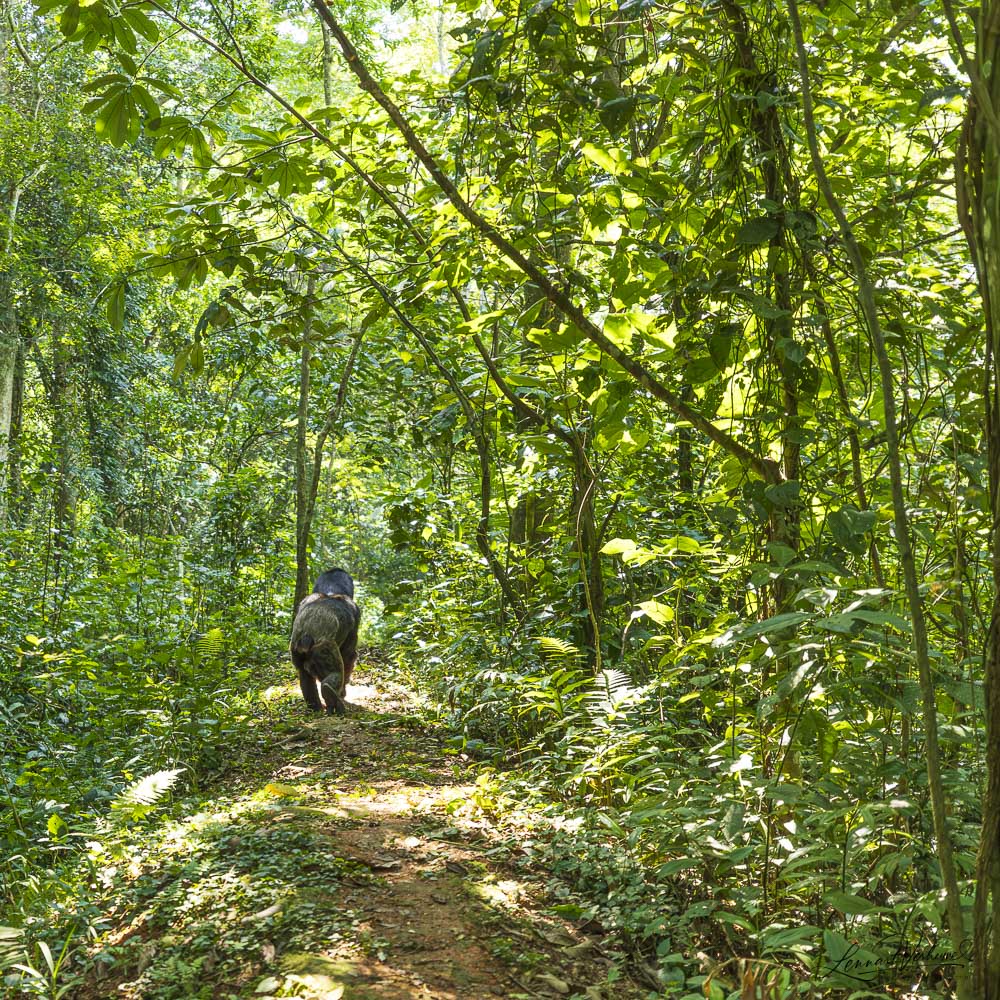
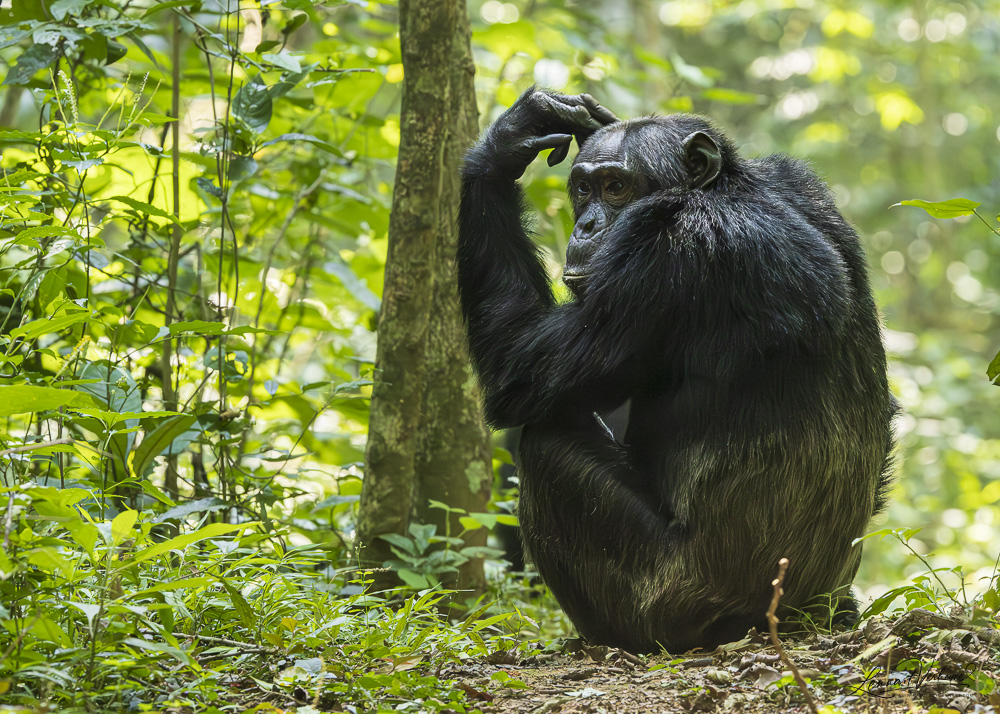
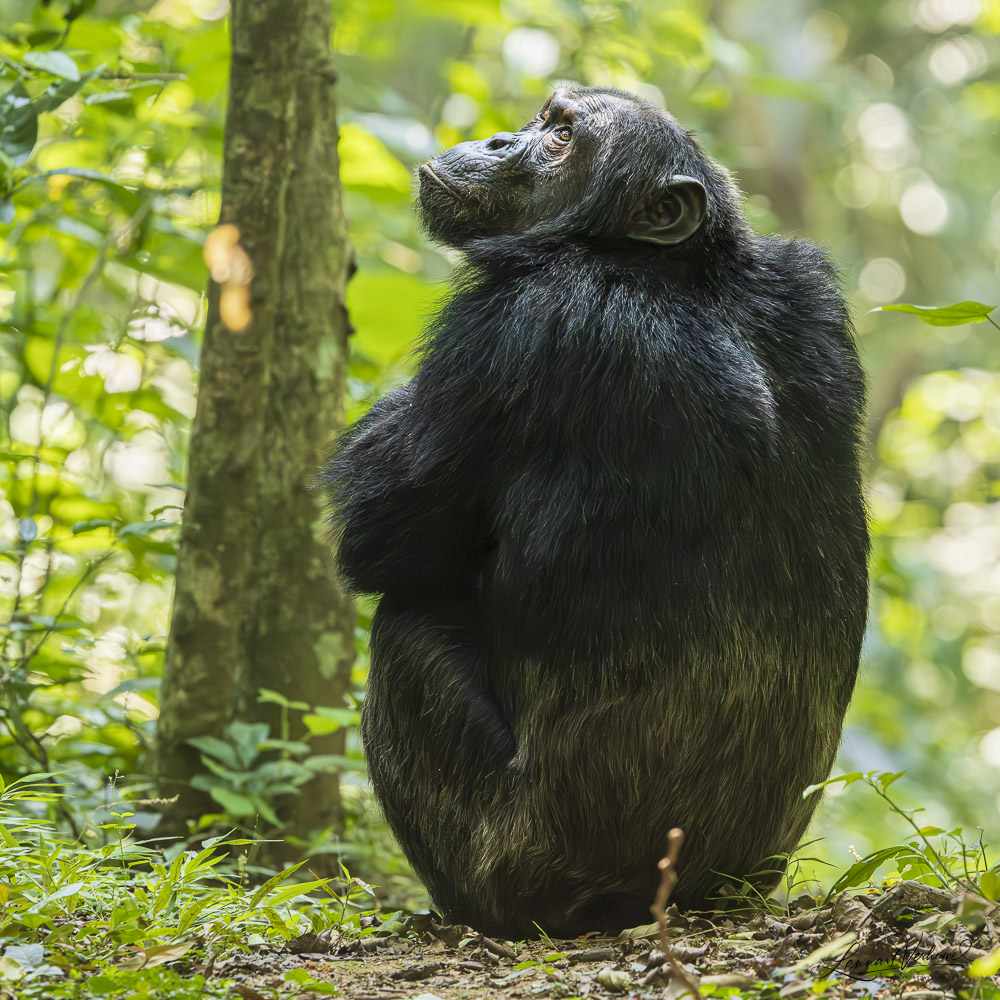
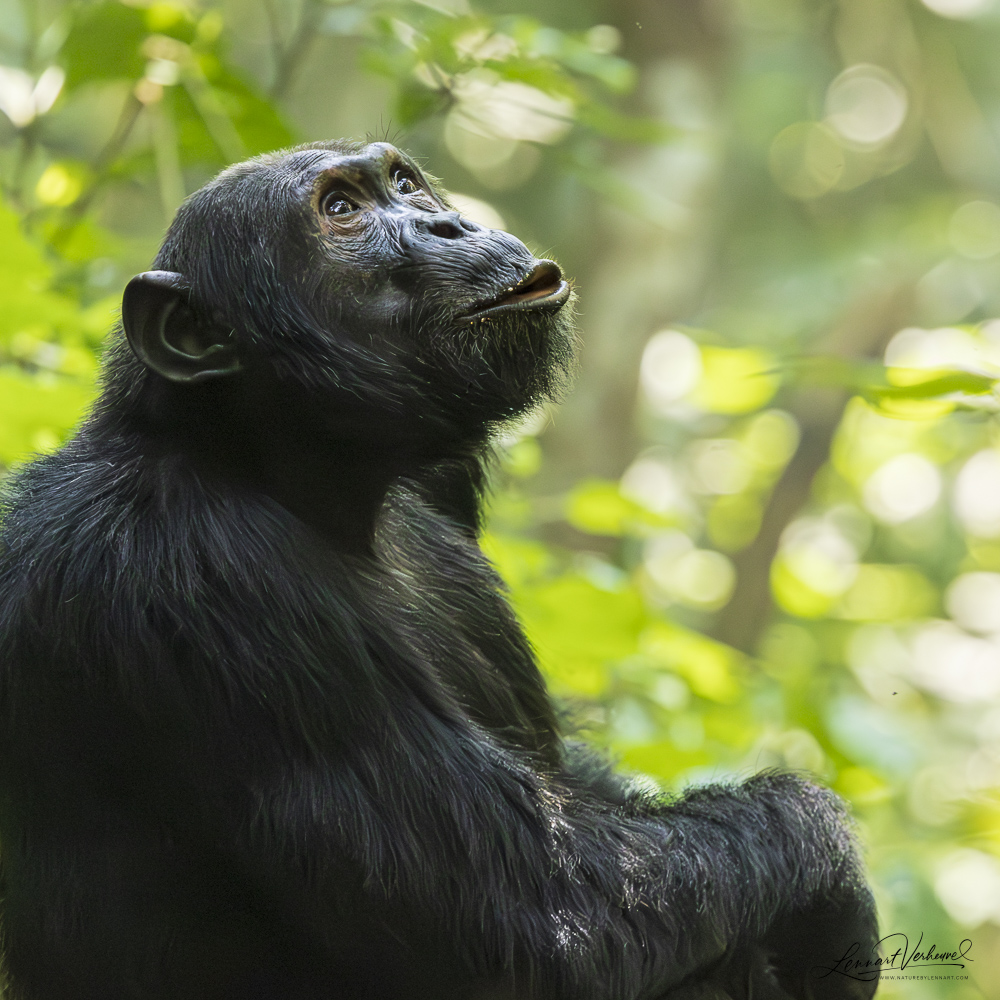
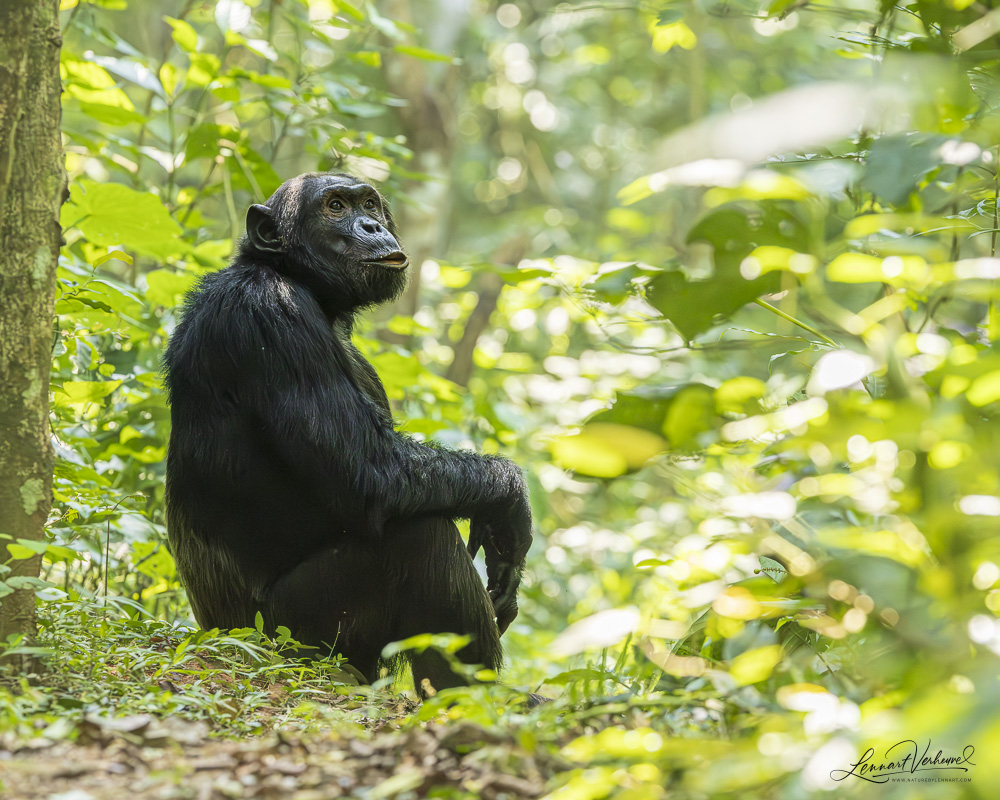
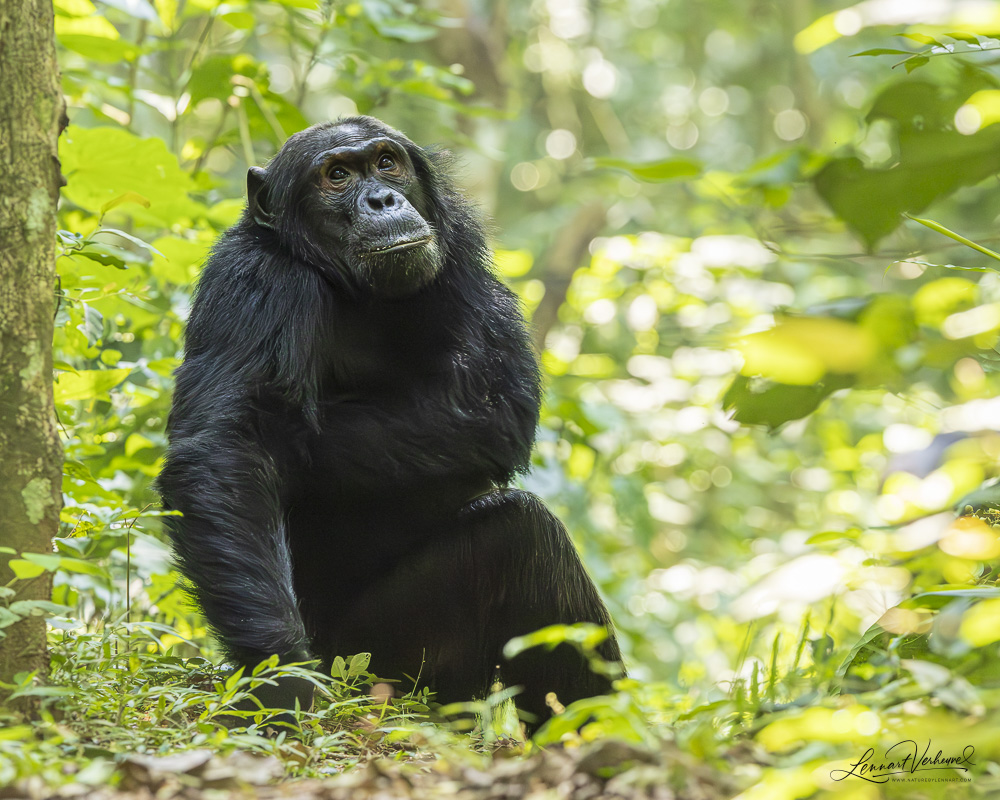
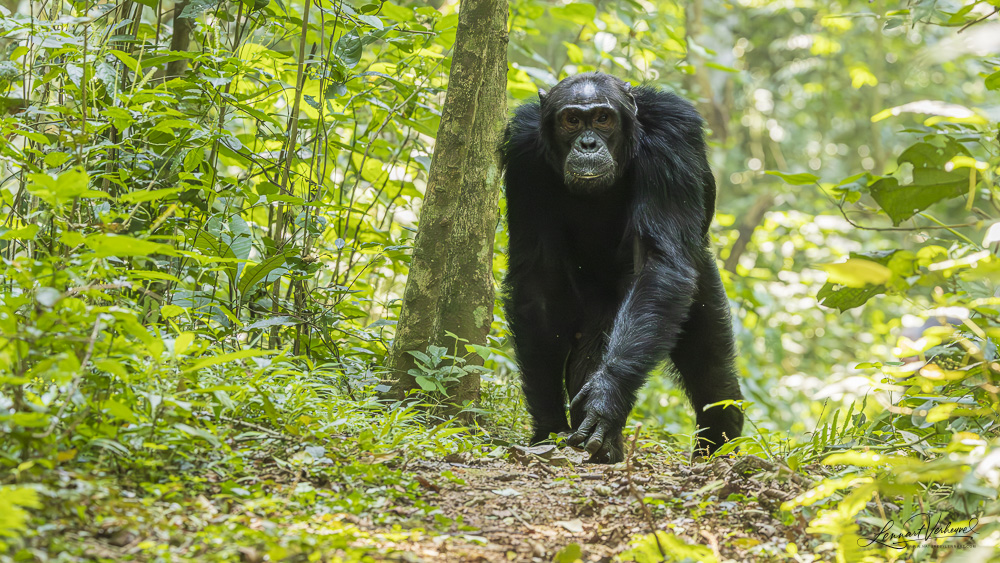
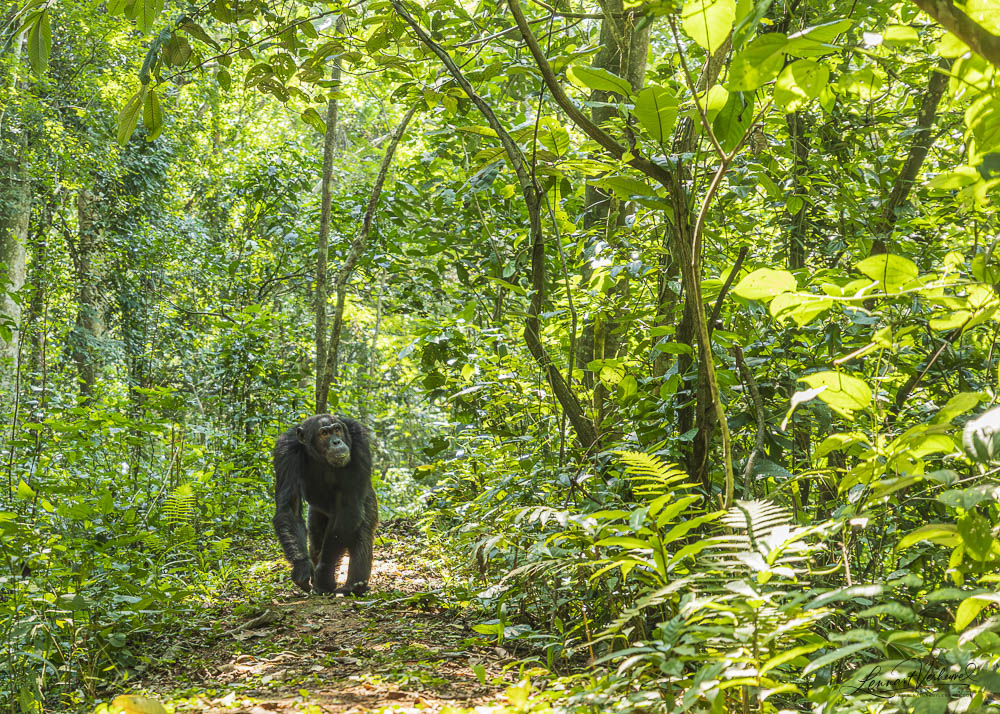
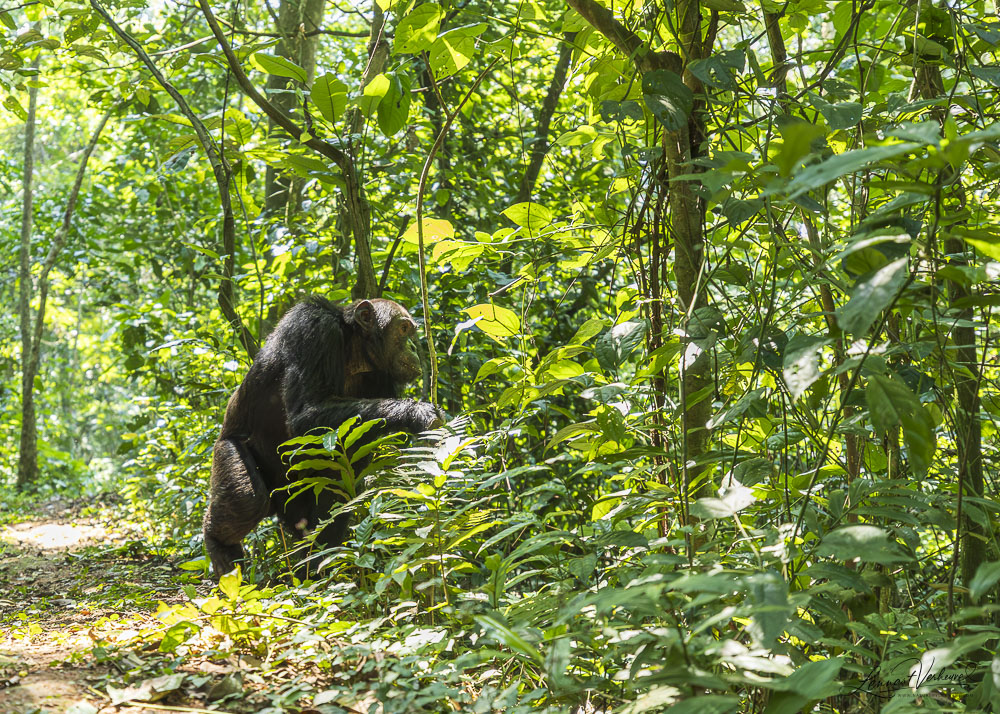
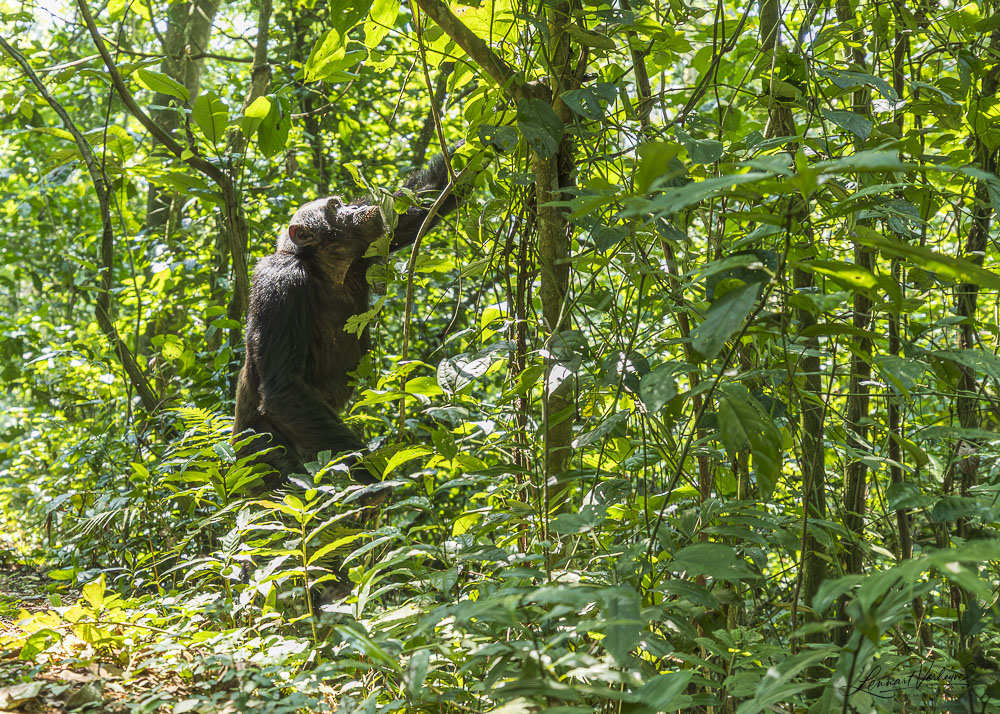
Chimpanzee
Most of the others were high up in the trees. We were shown the alpha male, who was taking things easy.
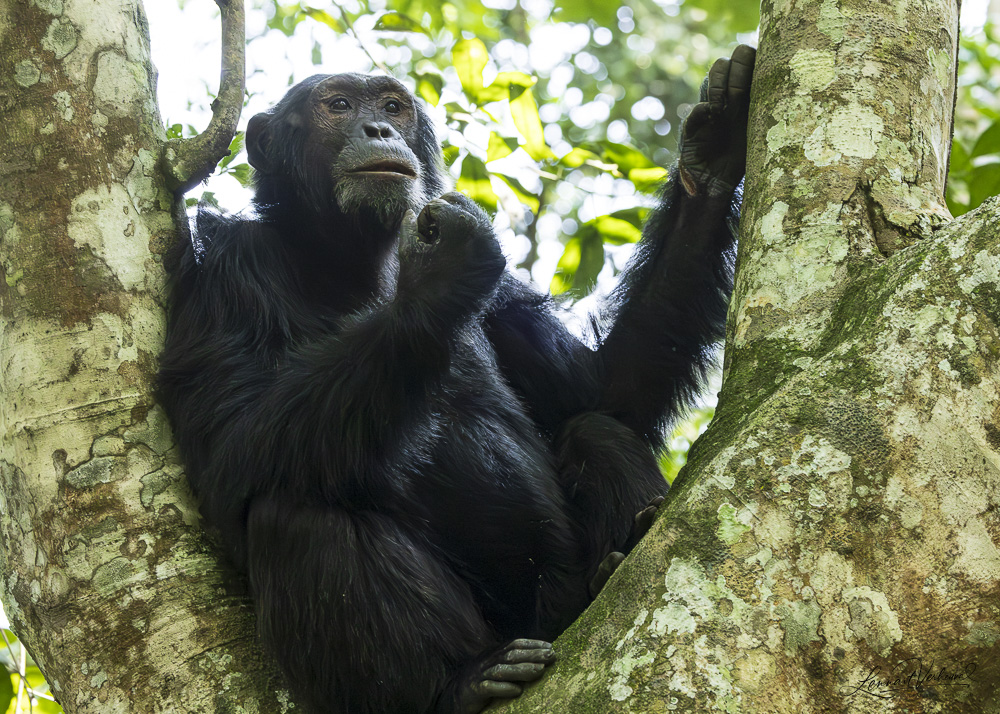
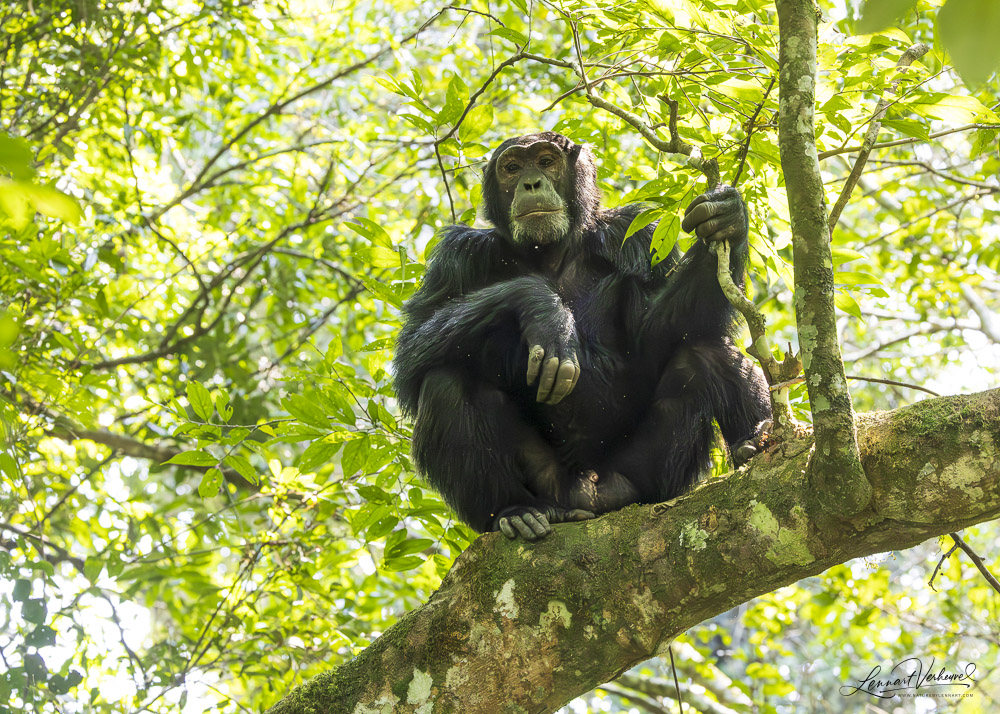
Chimpanzee
A younger chimp, on the other hand, seemed quite curious about us.
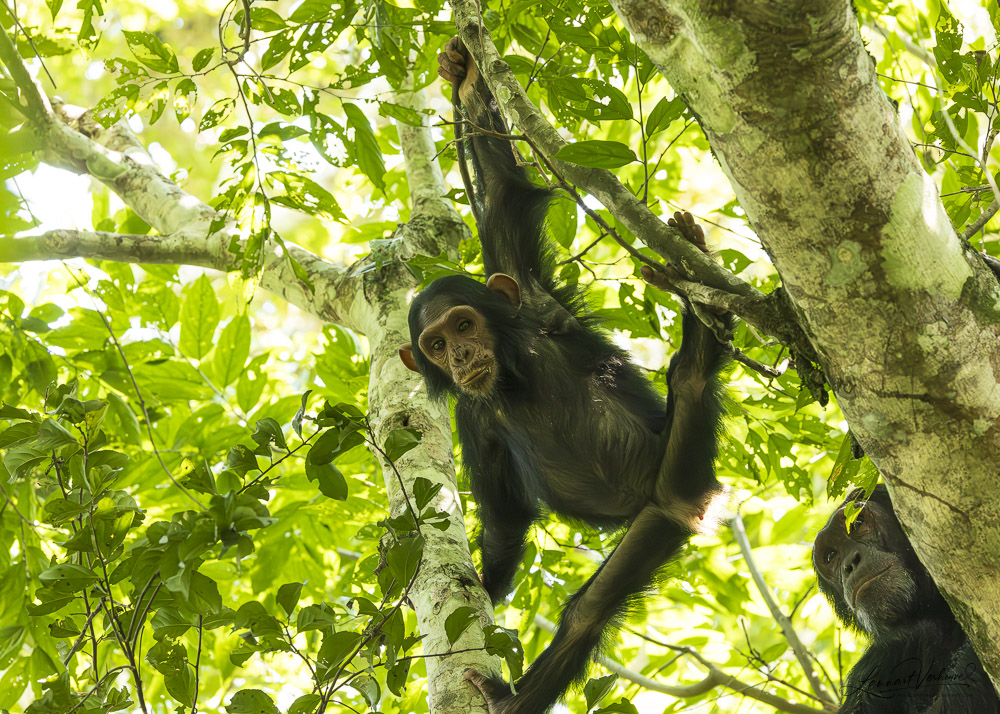
Chimpanzee
The group was anything but still—at one point two chimps suddenly came crashing down, chasing each other. A Chimp Trek is definitely not boring!
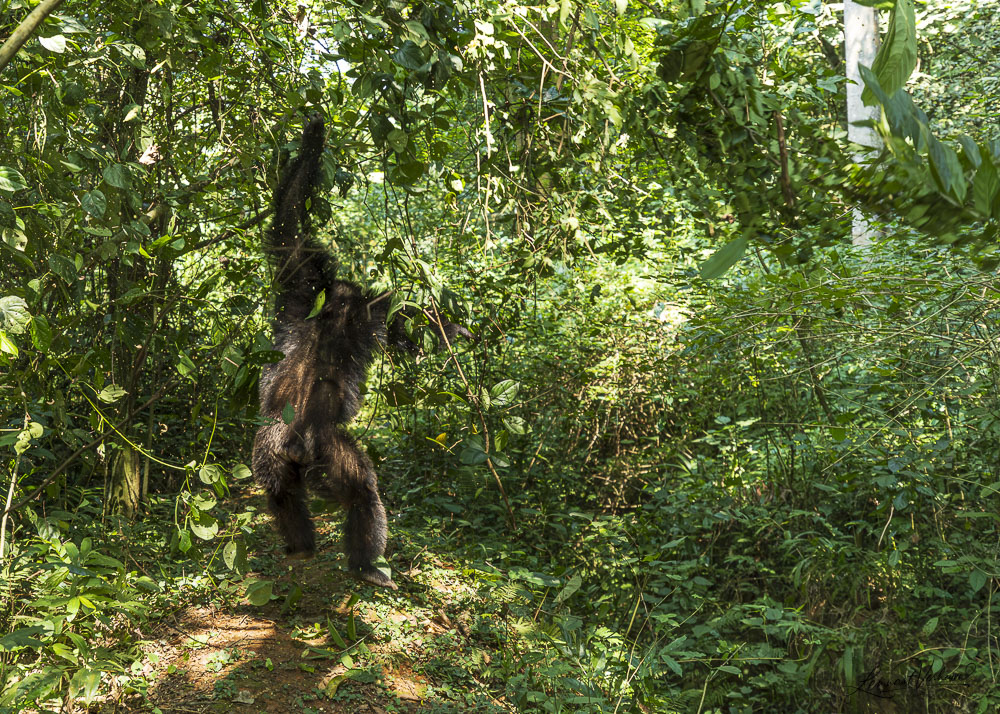
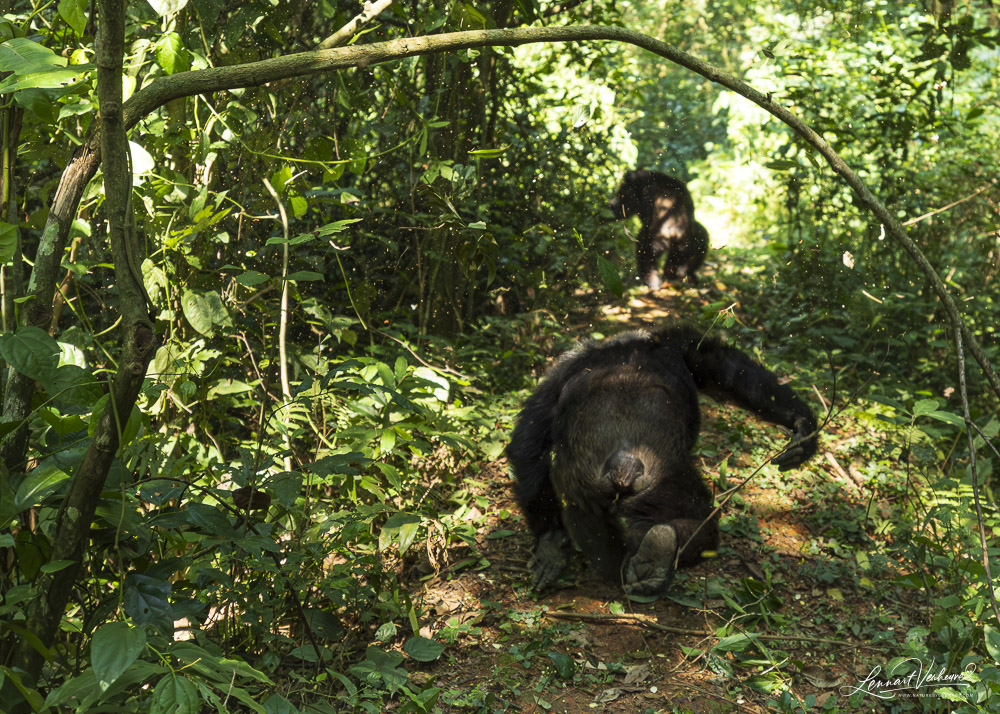
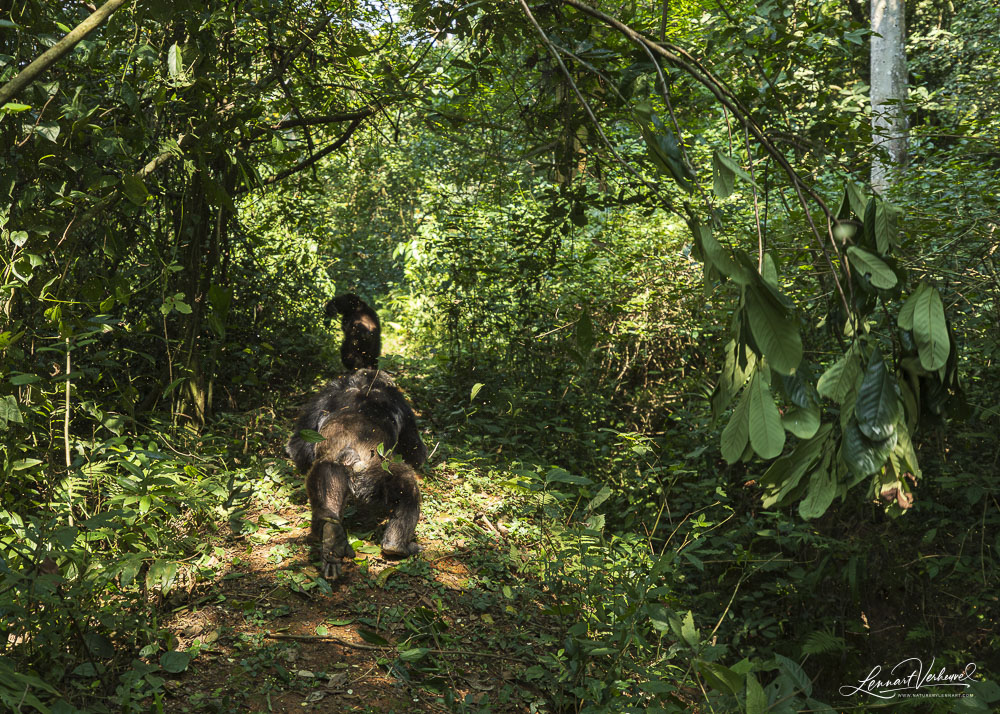
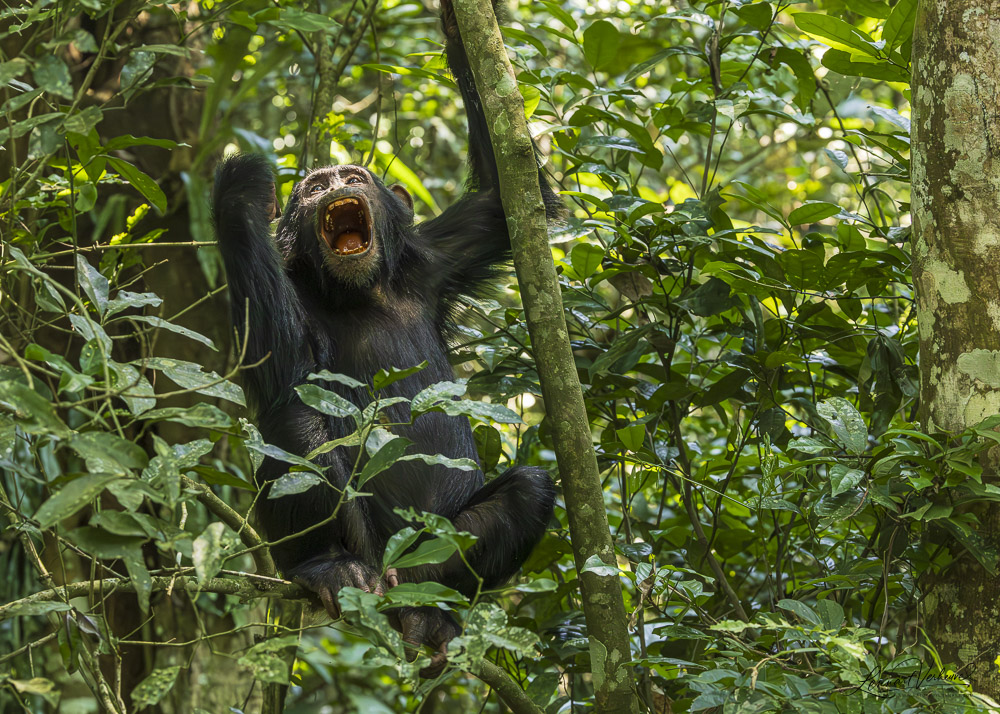
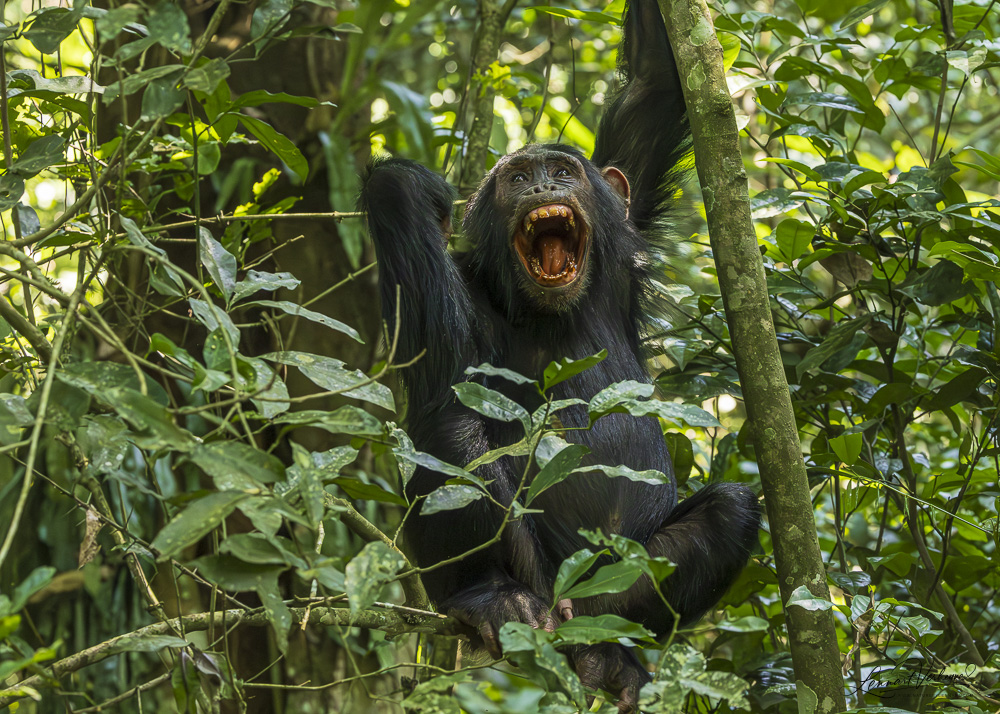
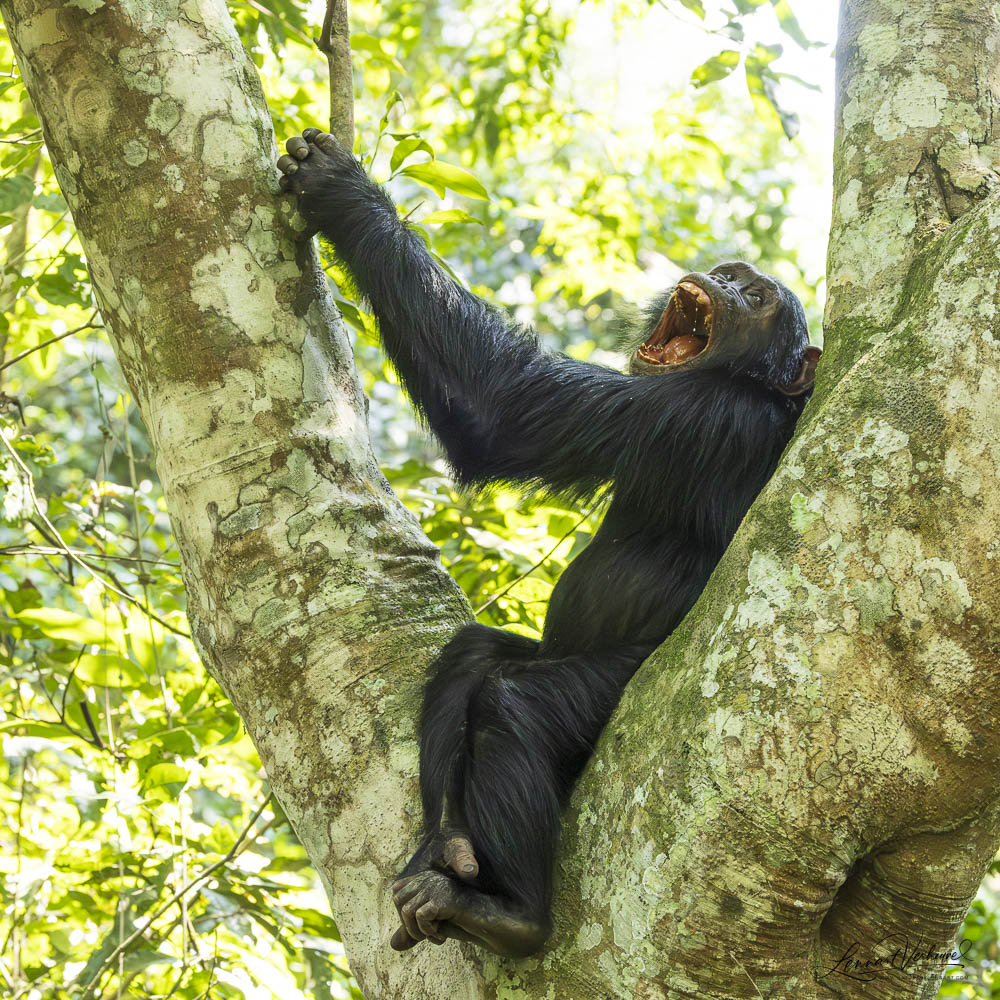
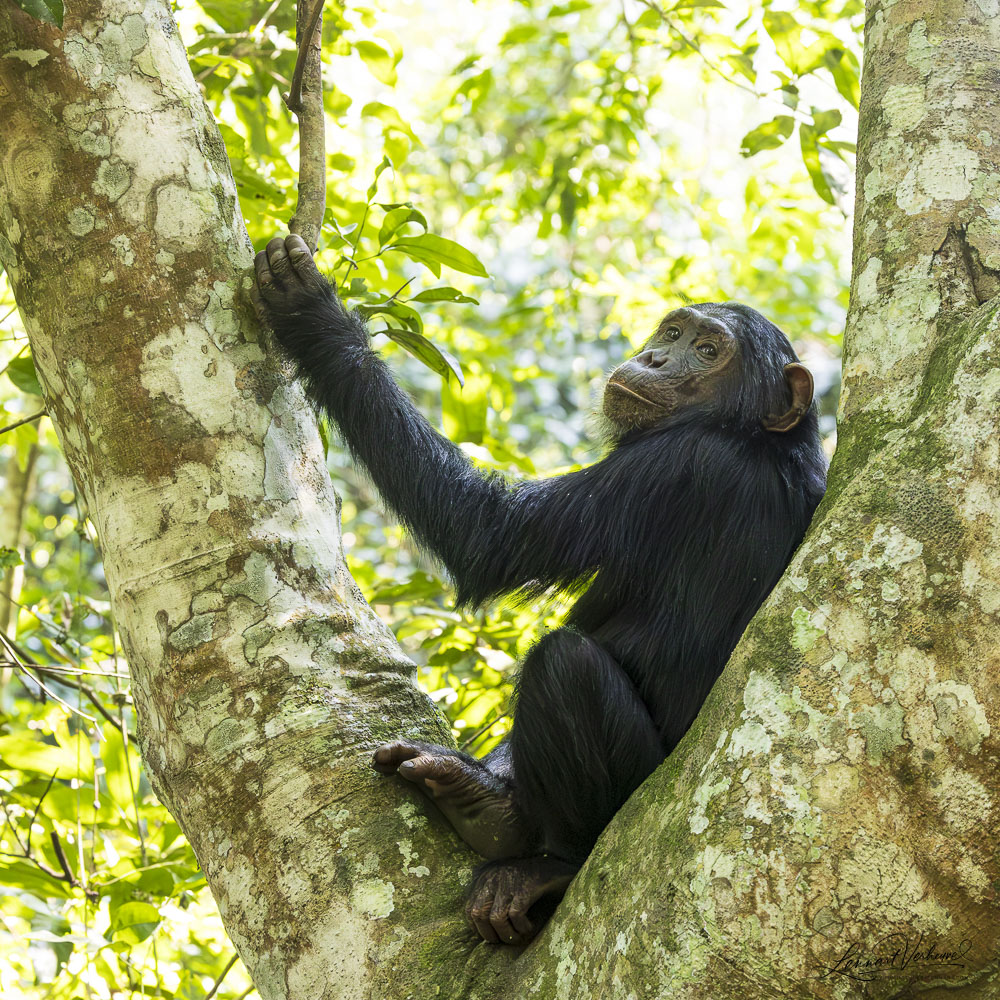
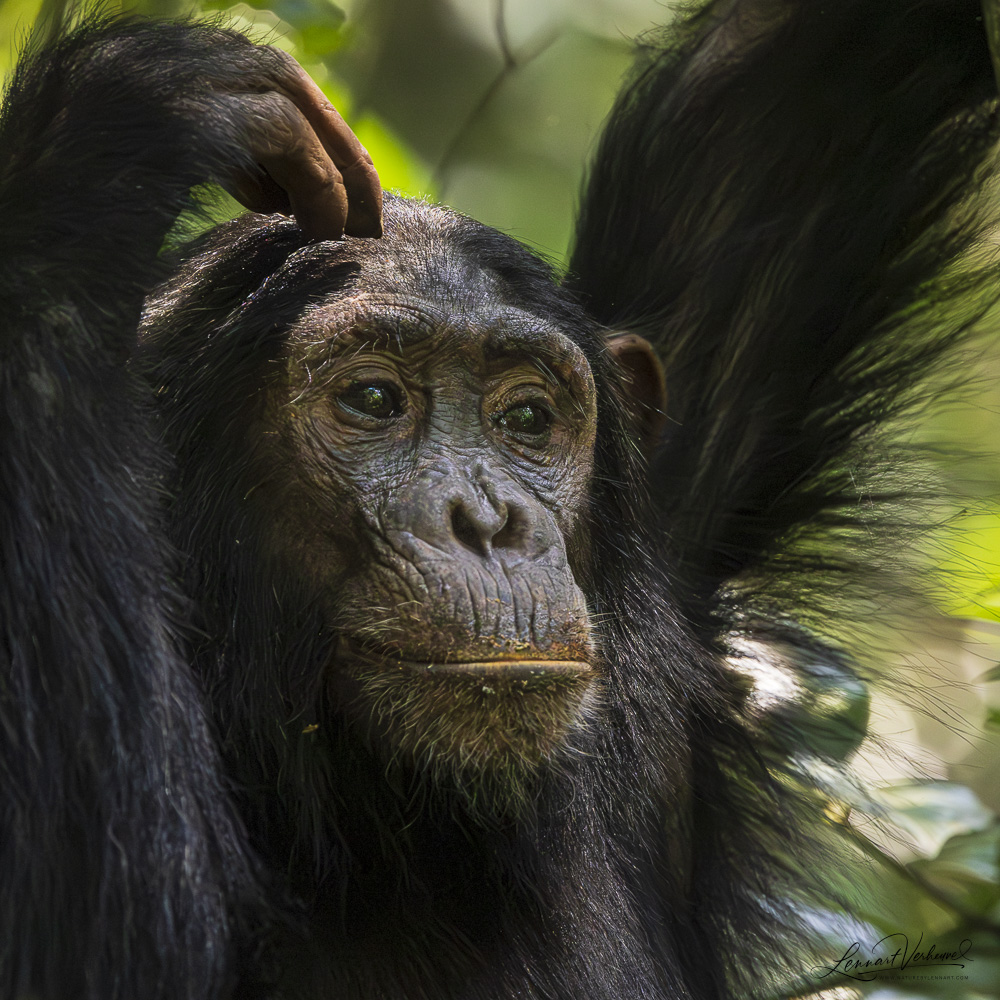
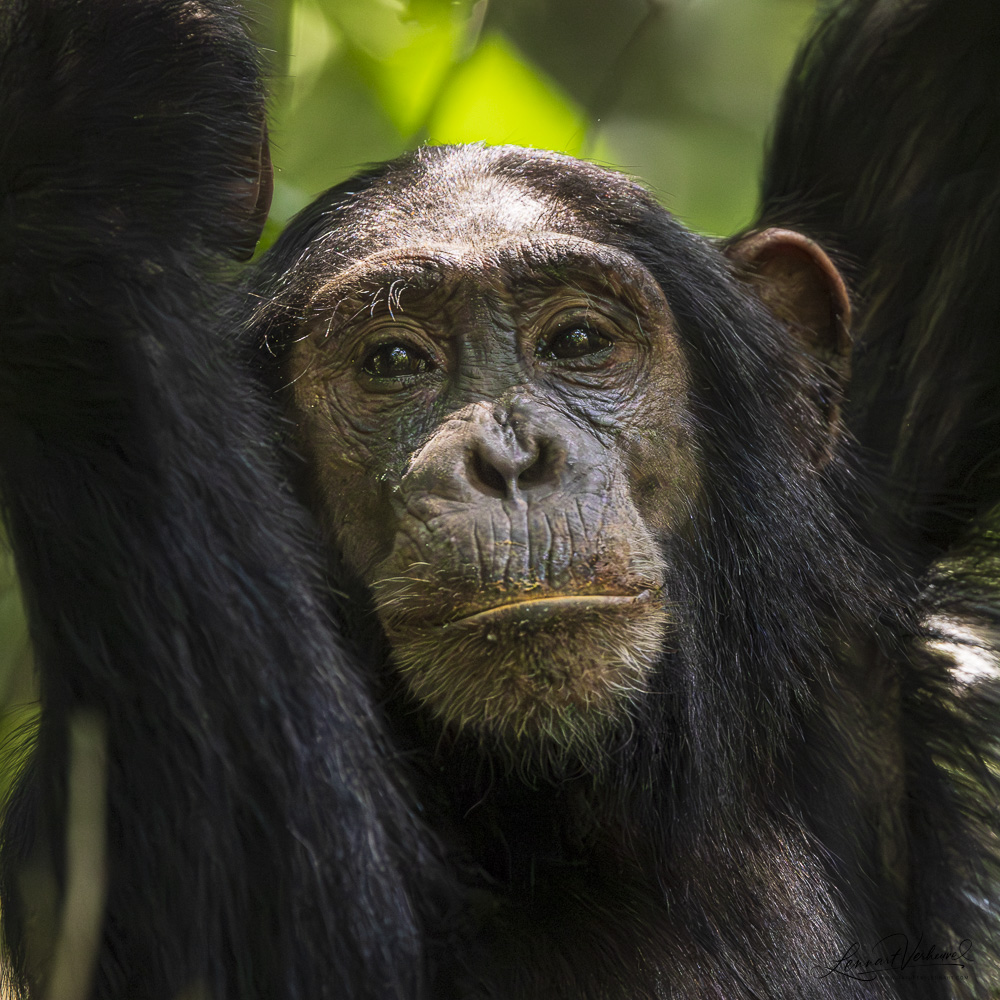
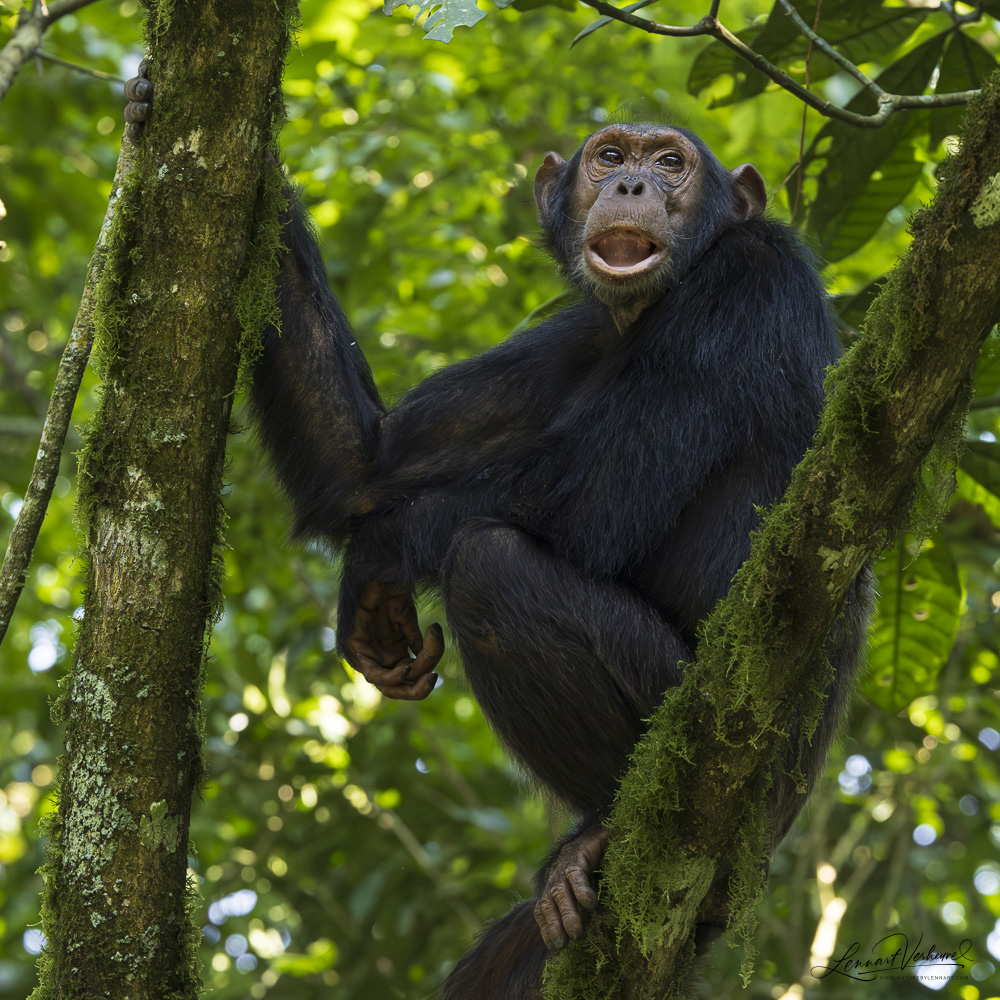
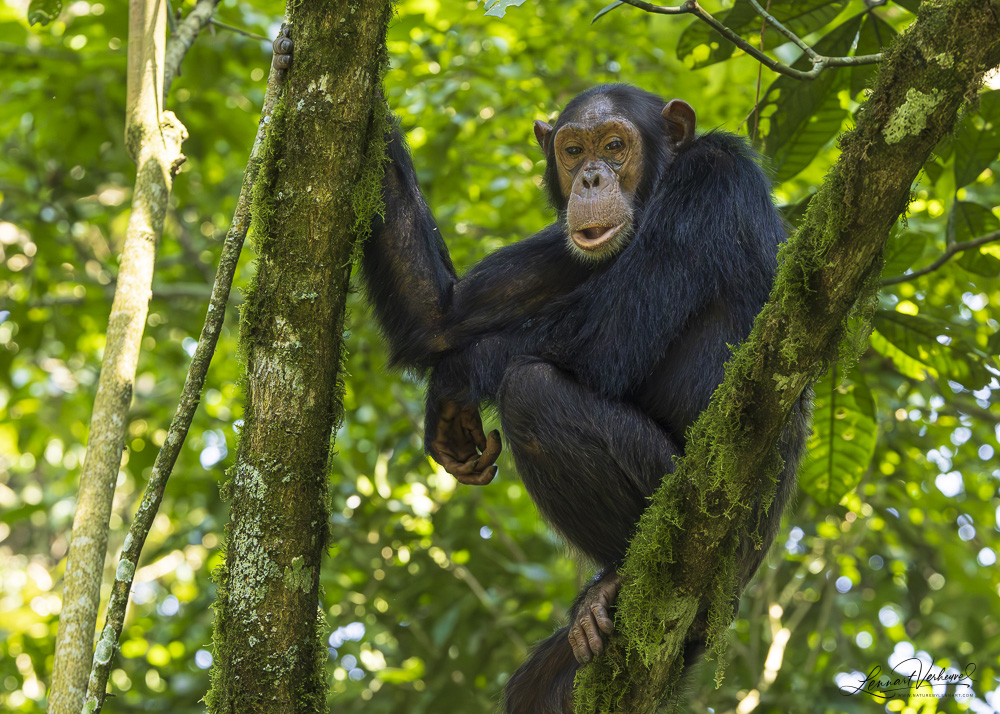
Chimpanzee
Since I wanted more wide-angle shots, I asked our guide if there were chimps on the ground nearby. Soon enough, I was brought to a cooperative adult at close range—perfect for photos. The chimp still involved himself from the ground with things happening around him, looking rather intimidating.
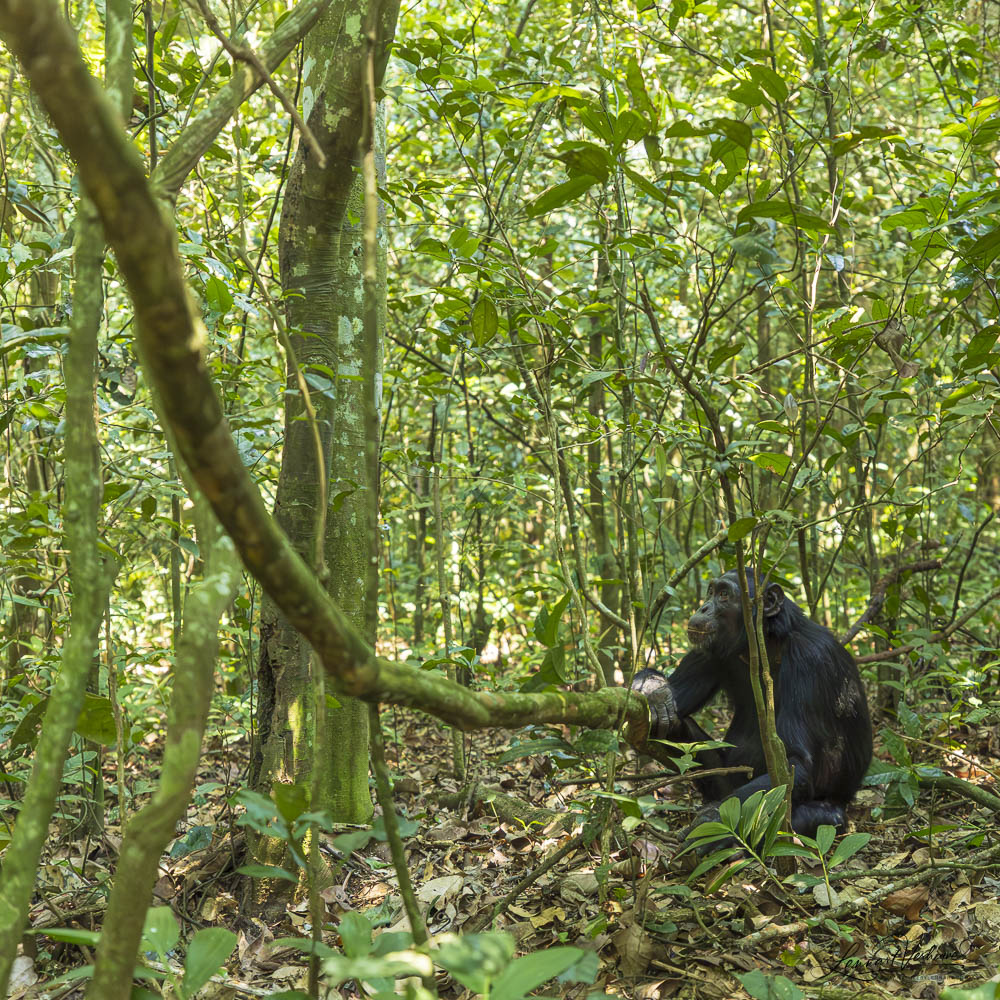
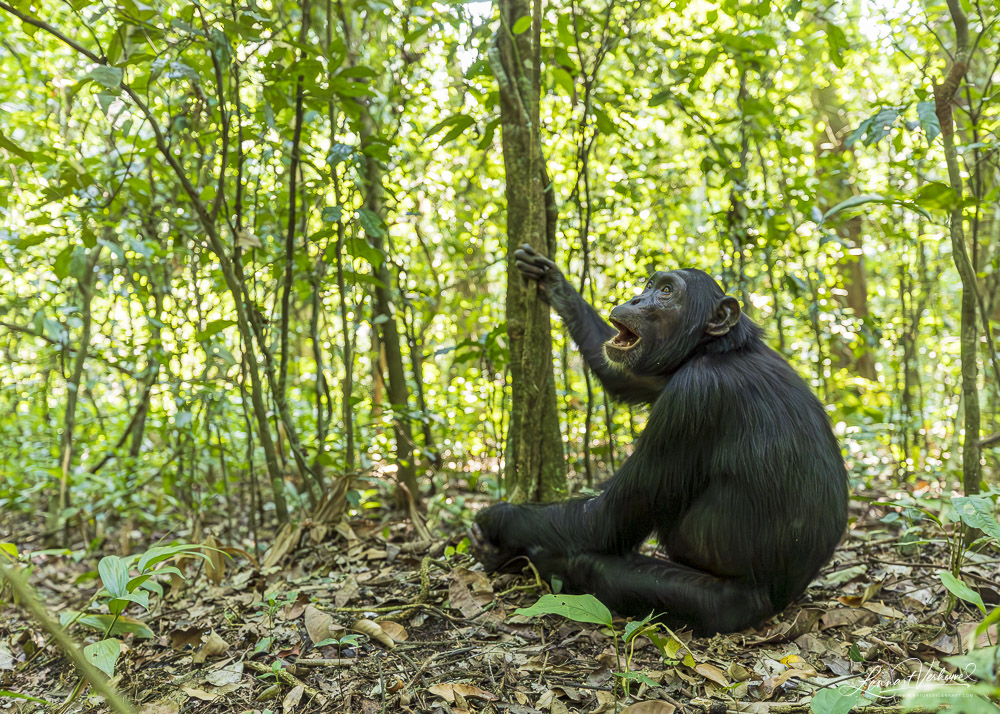
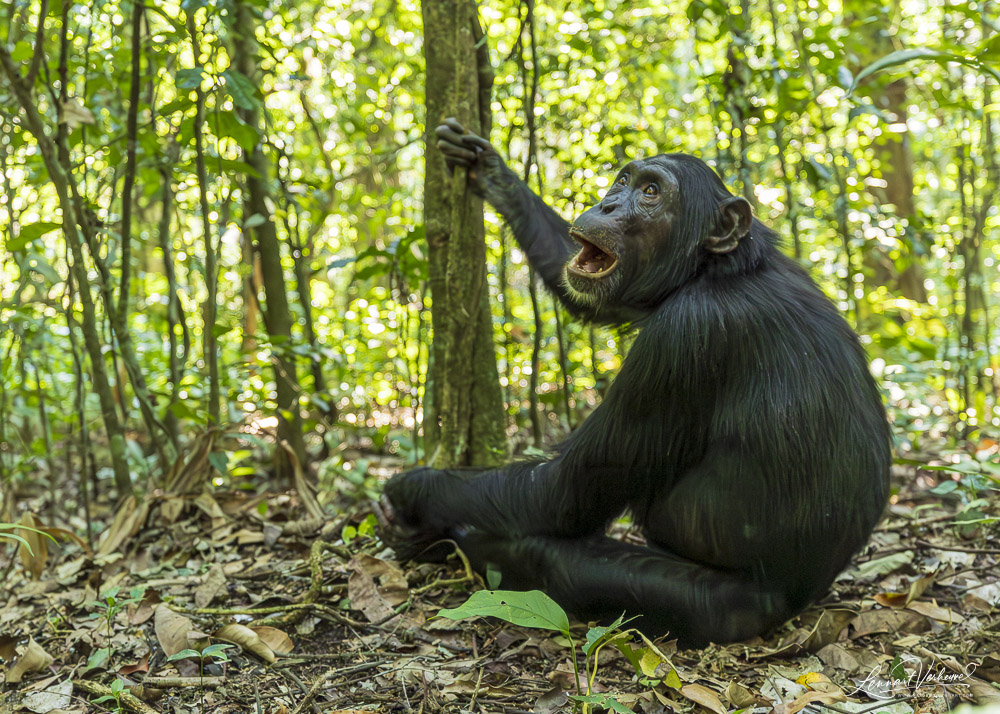
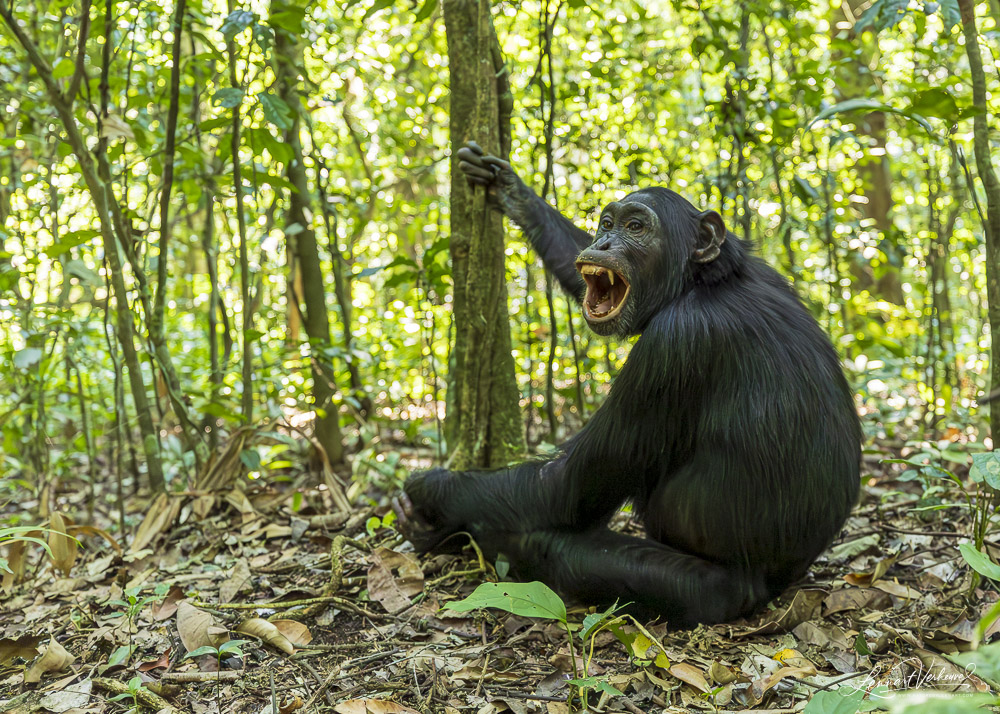
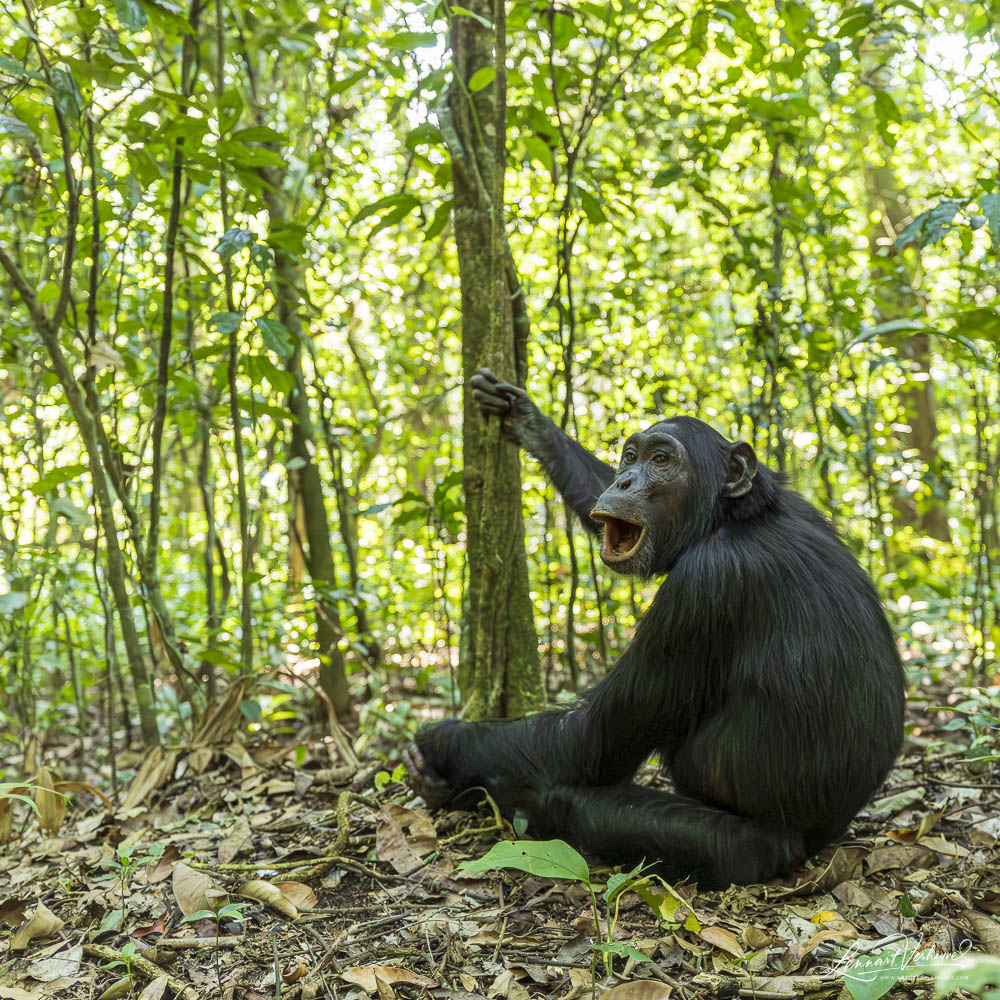
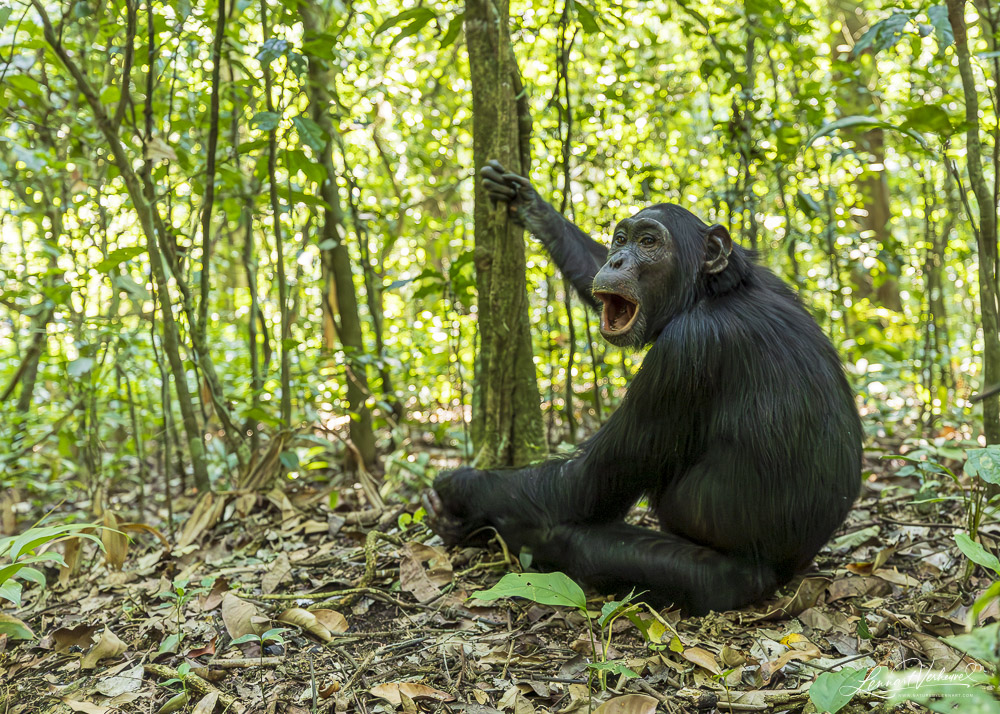
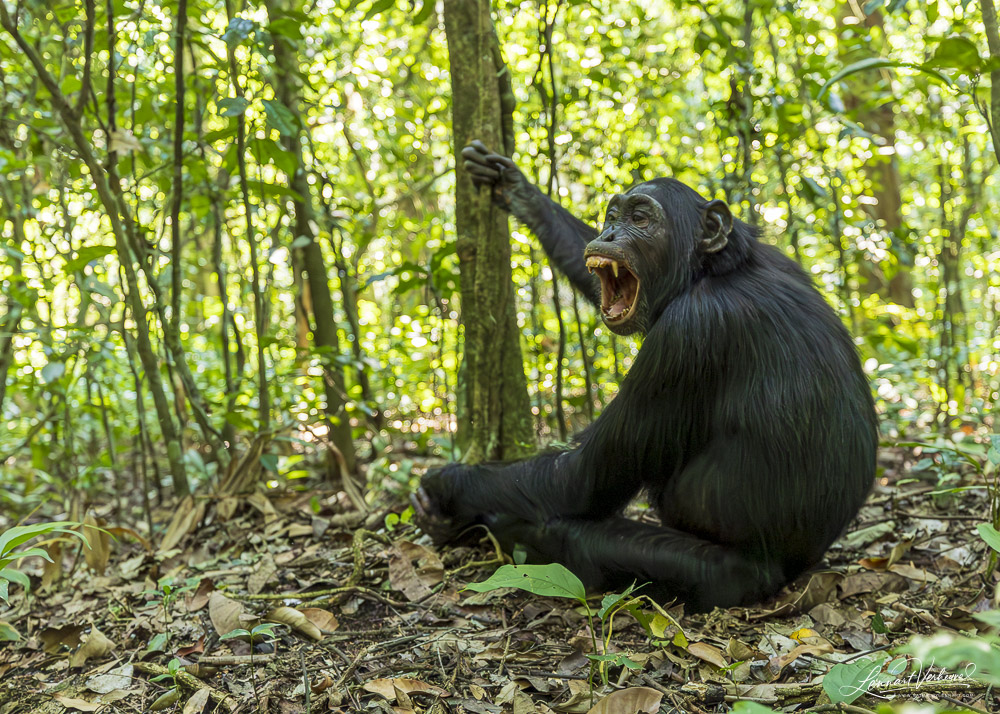
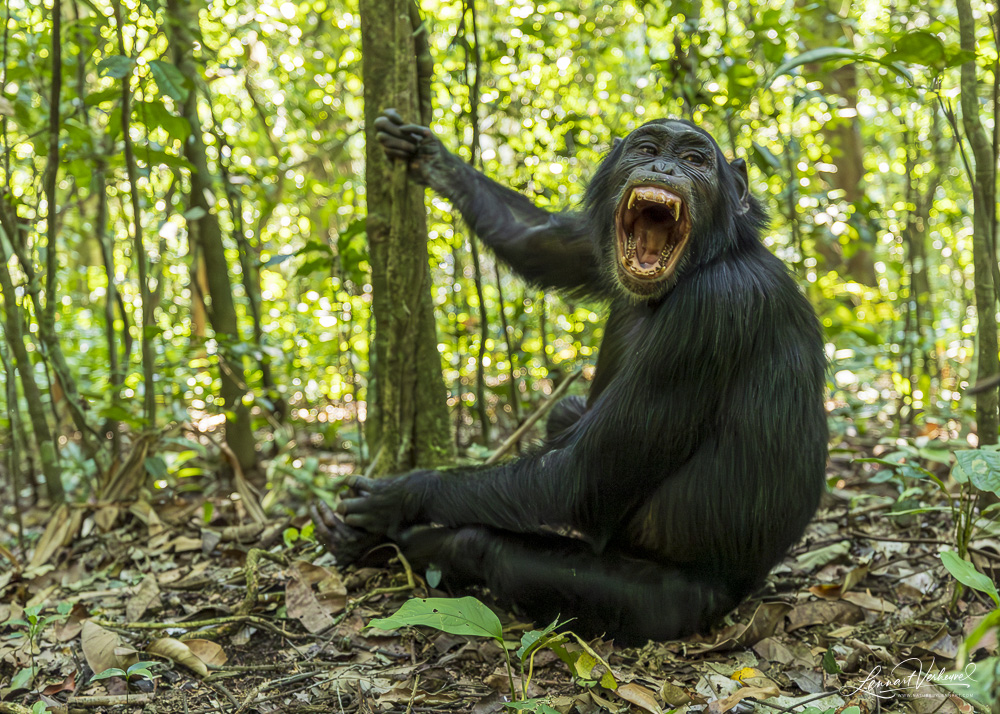
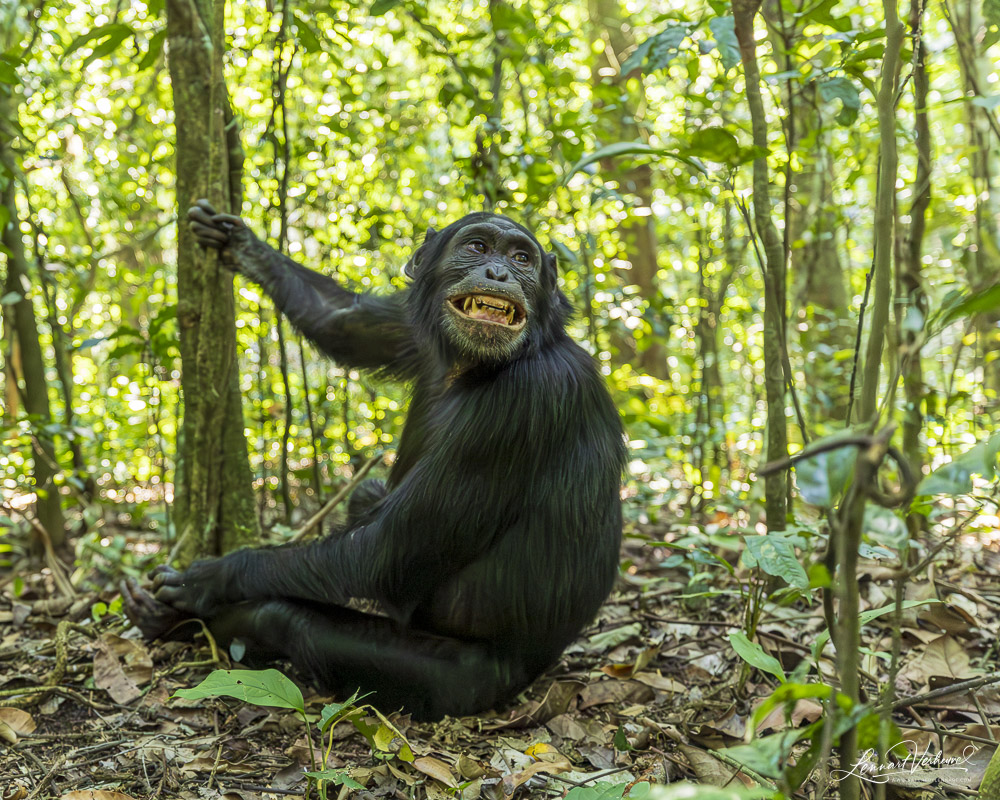
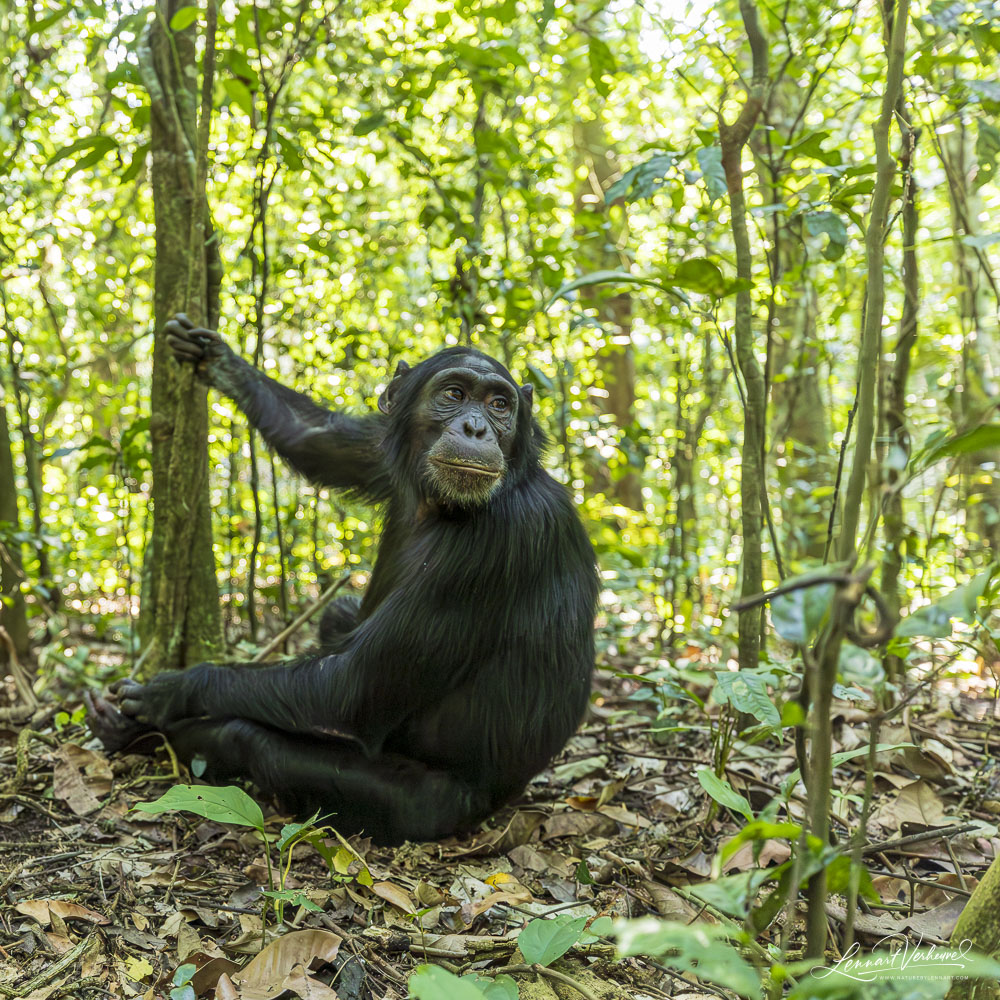
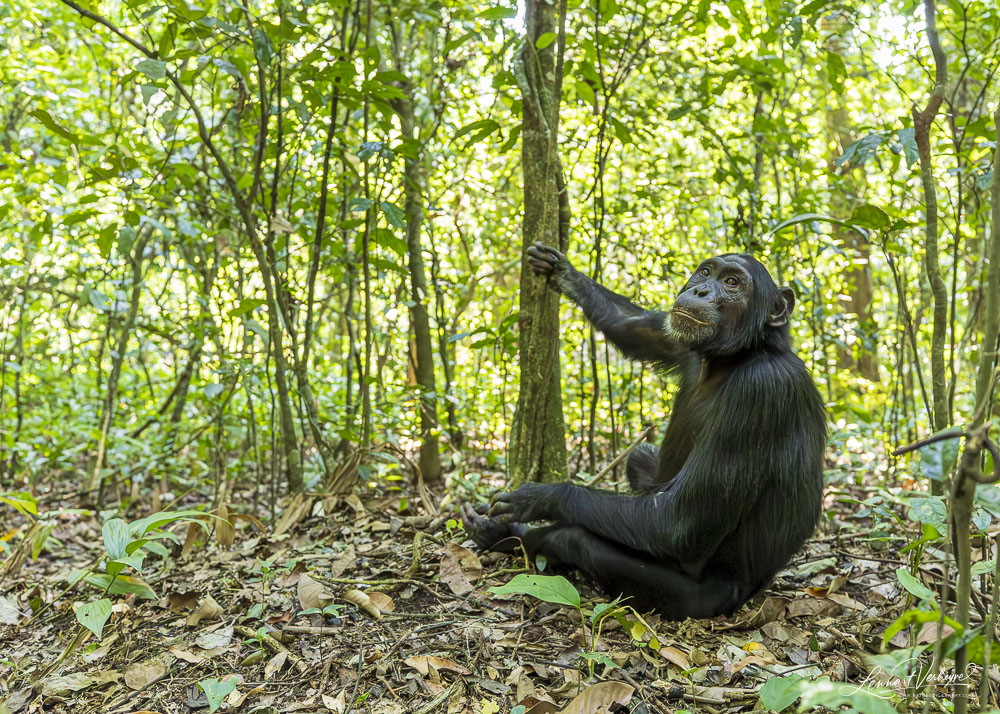
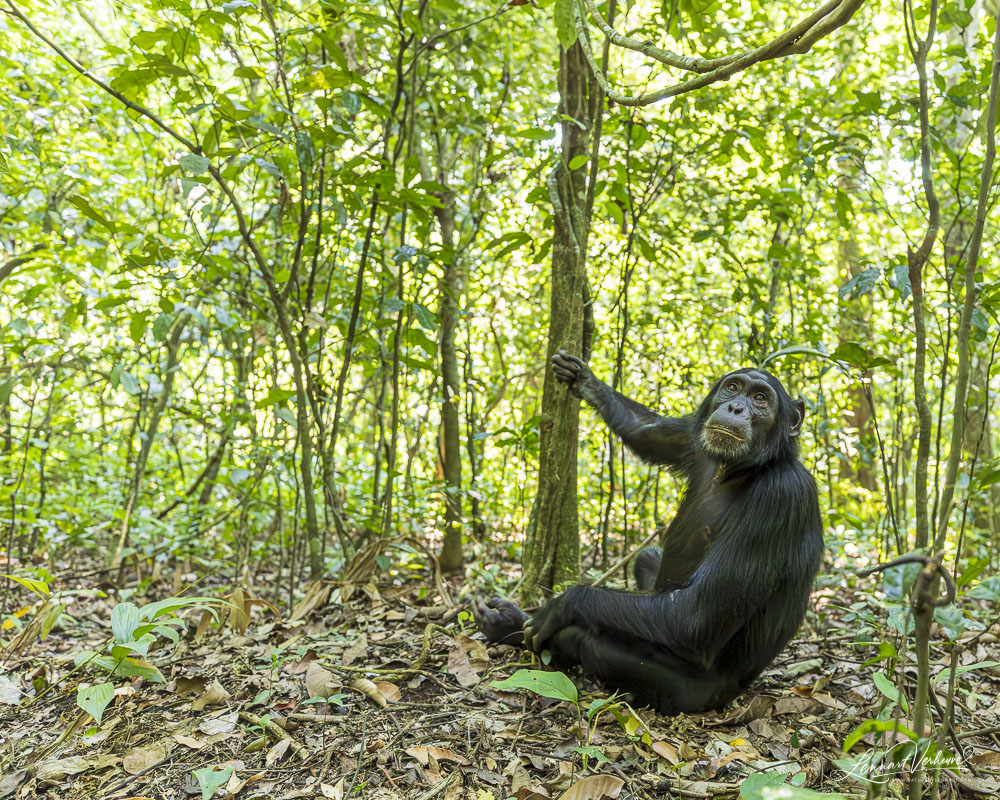
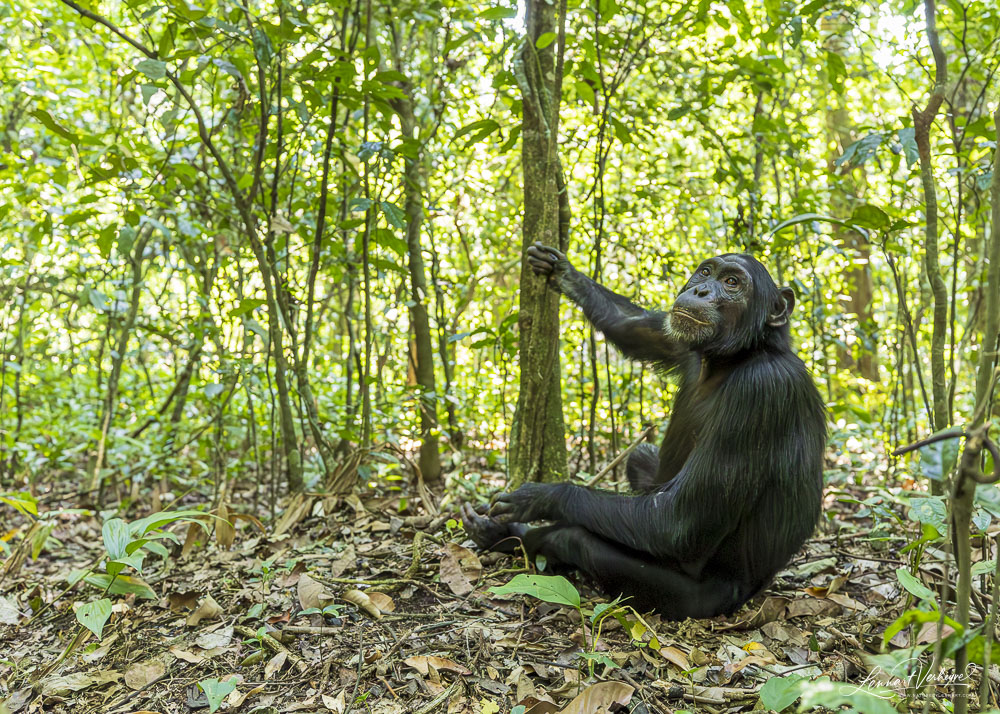
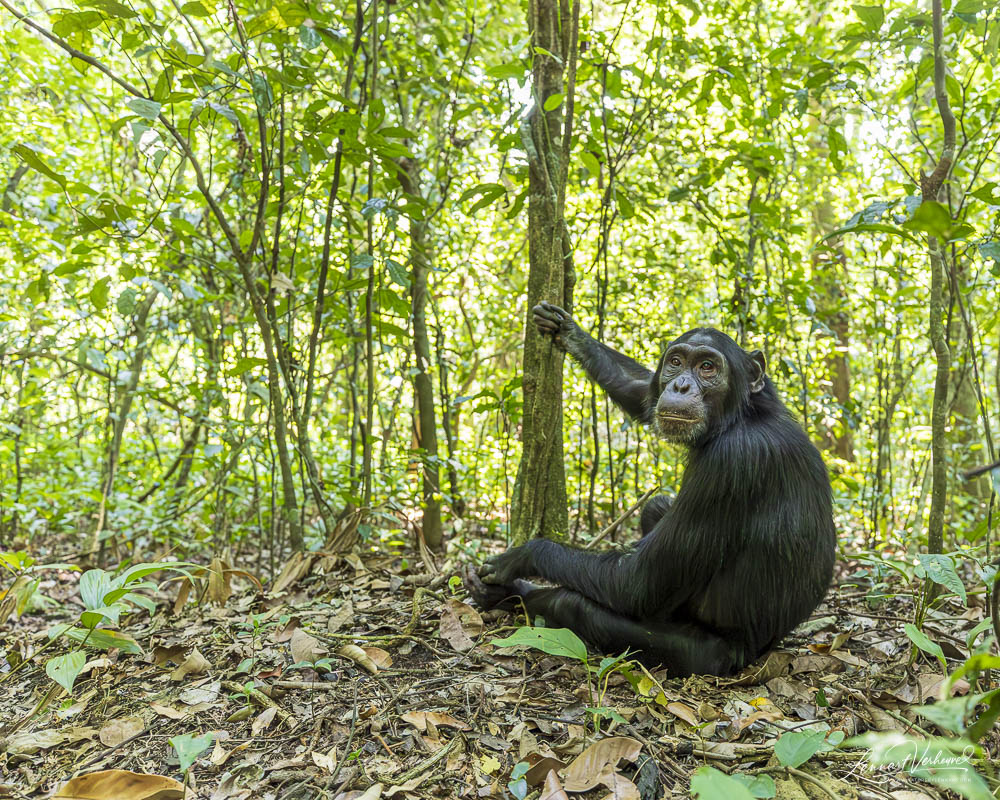
Chimpanzee
After a long time in the forest, our guide gave us a final treat: a group of chimps feeding in the grass at the forest edge. A completely different sight than the usual image of chimps in the forest. I switched between wide-angle and telephoto lenses and was able to get some nice shots.
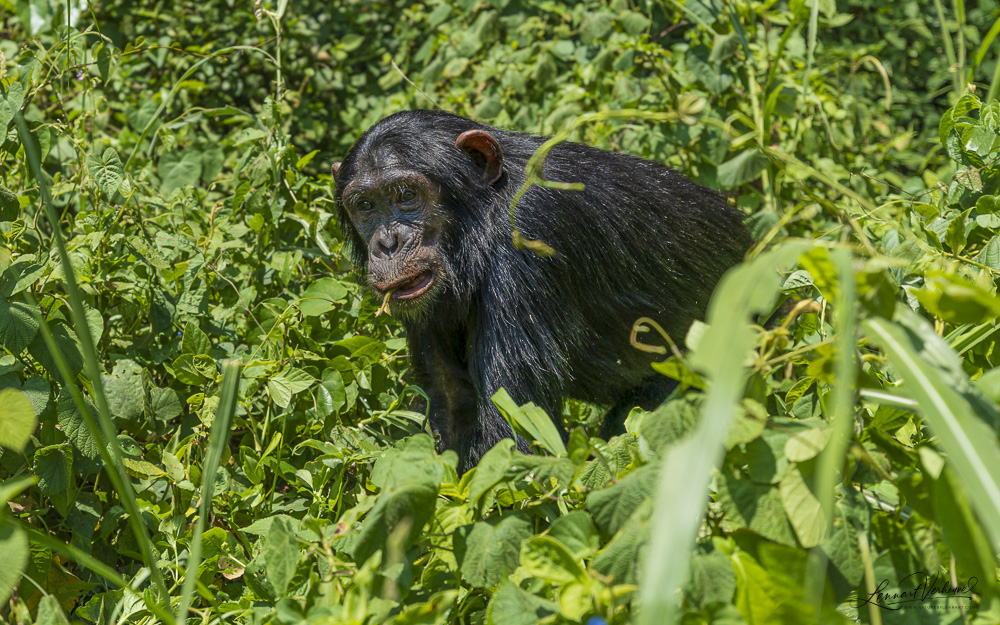
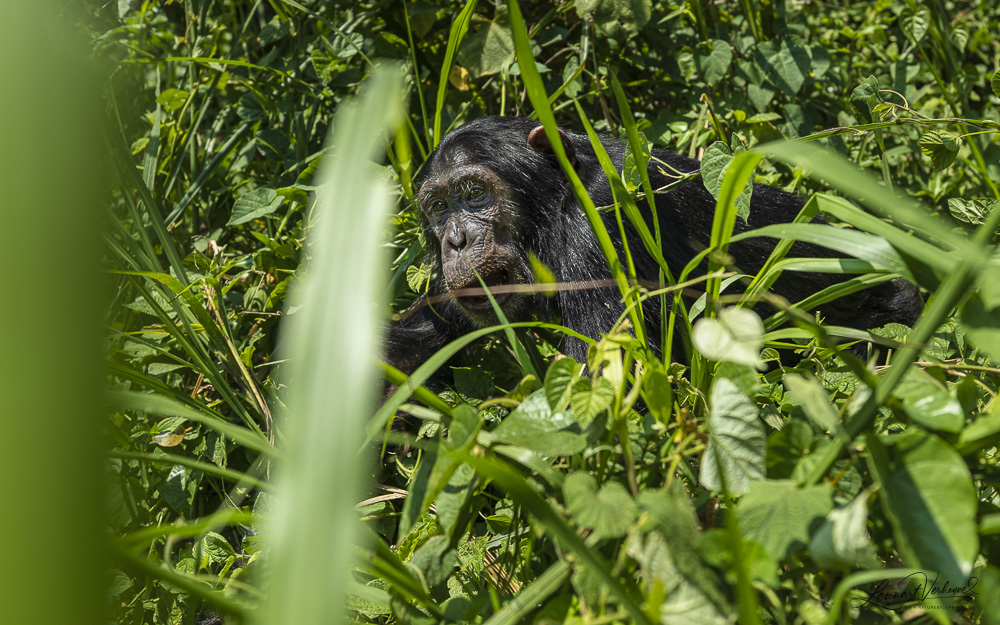
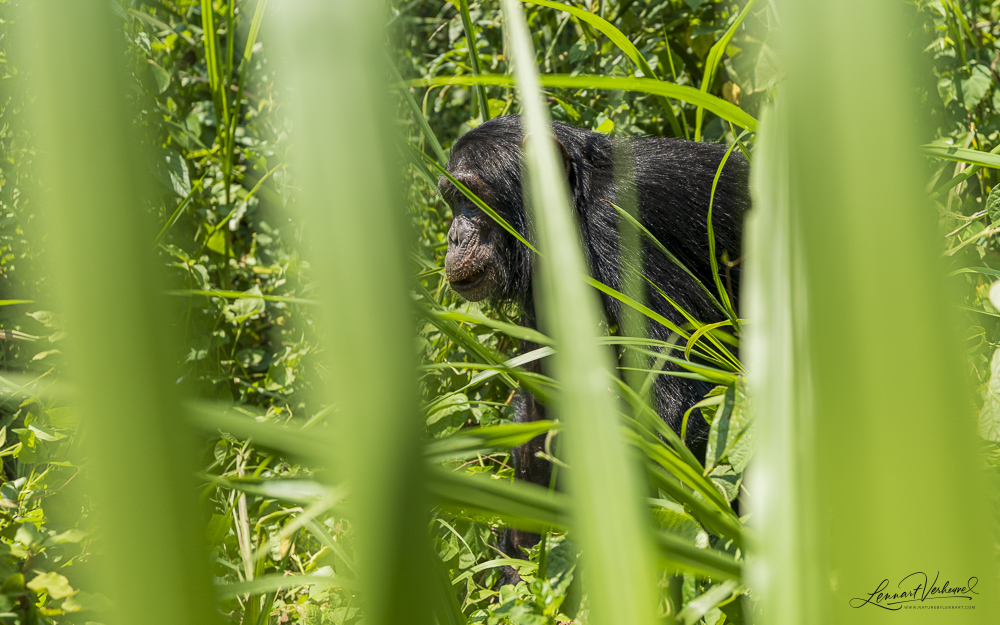
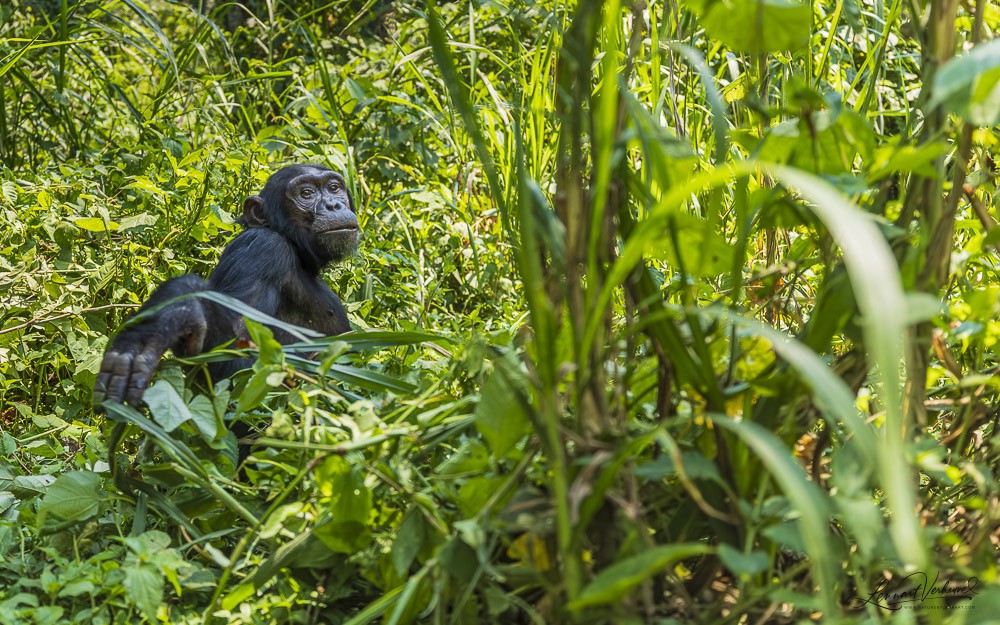
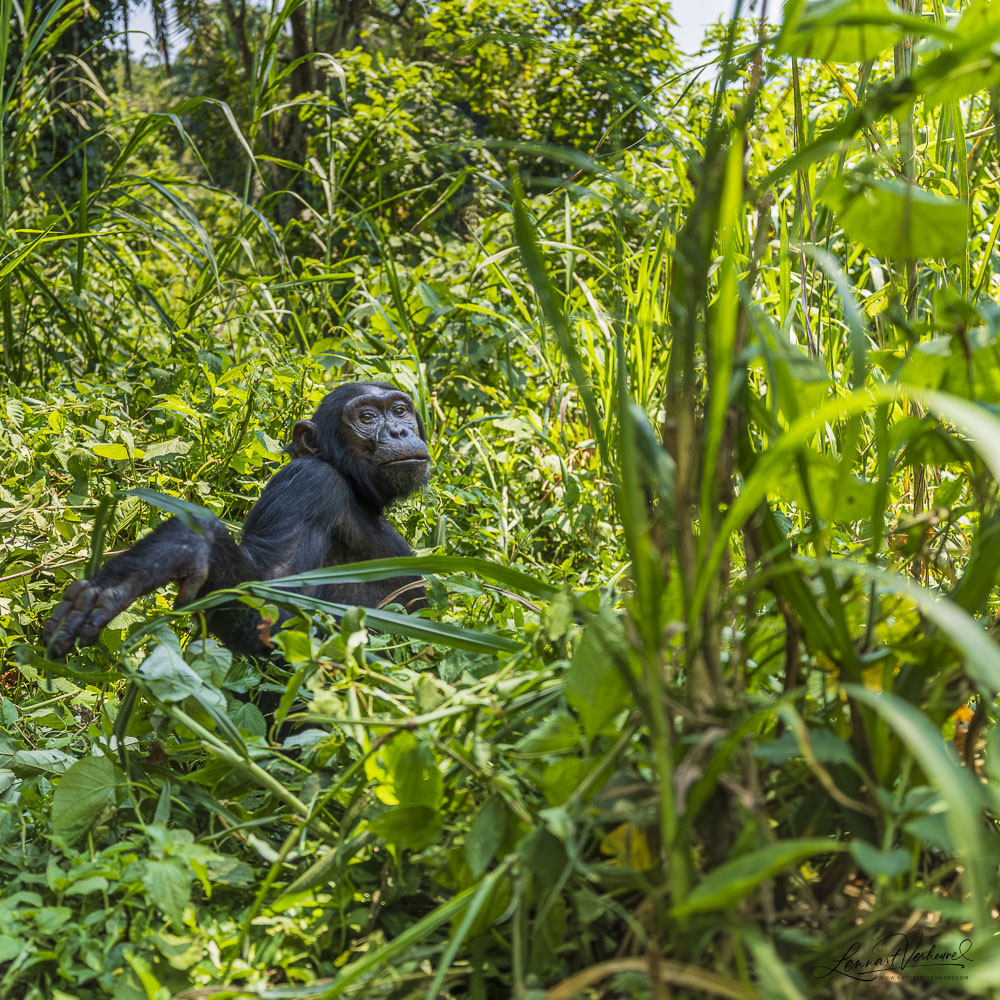
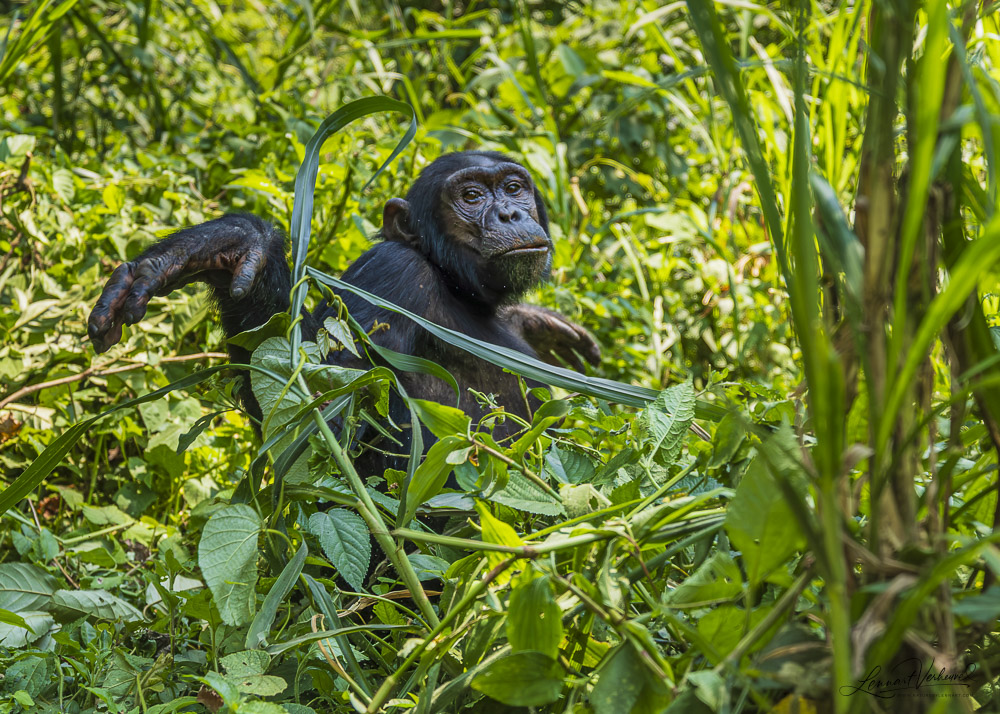
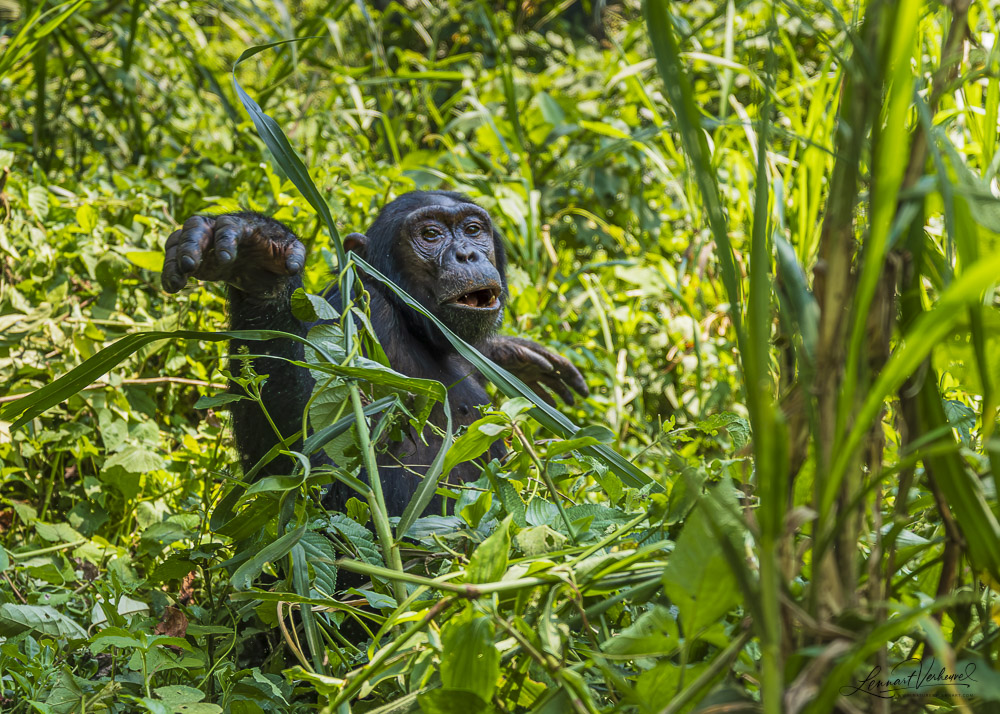
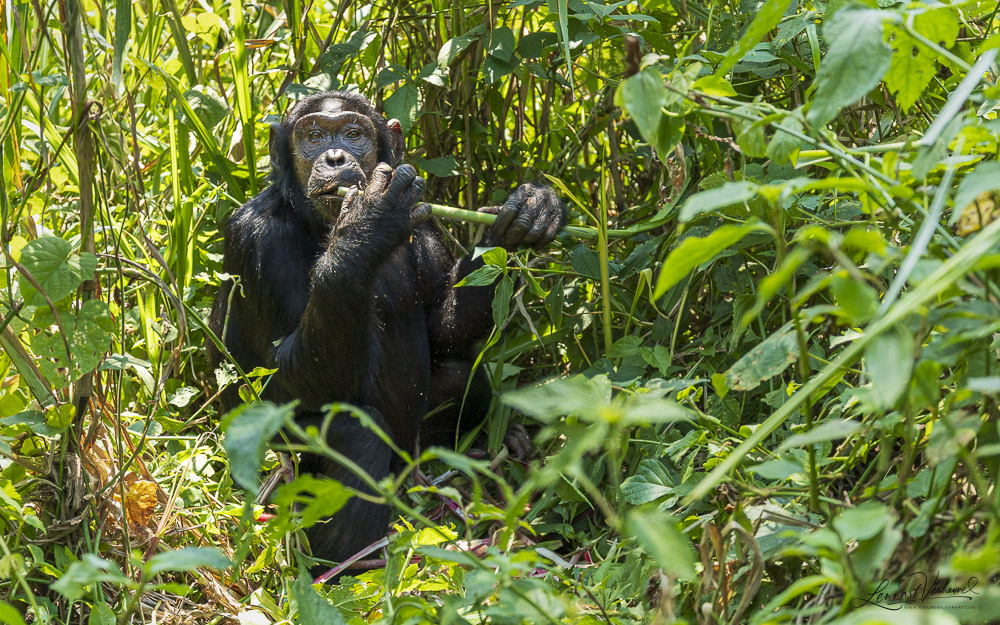
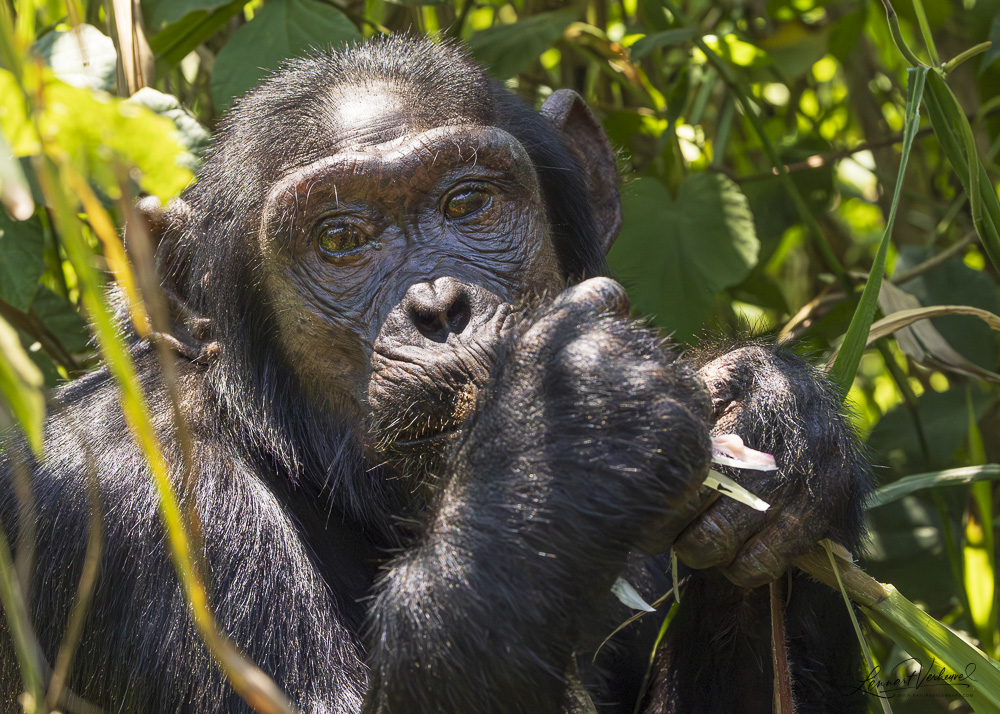
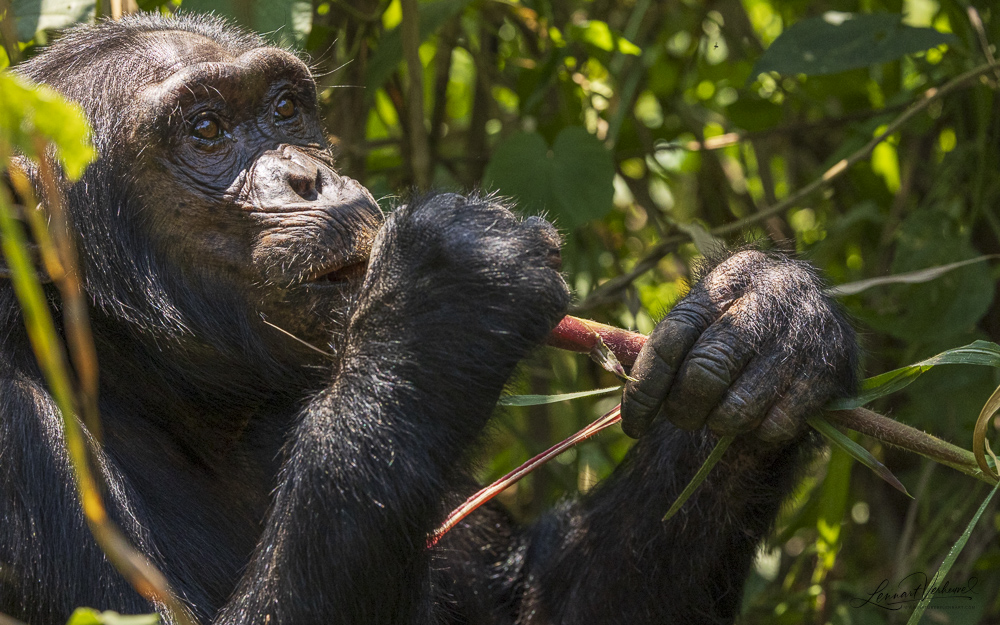
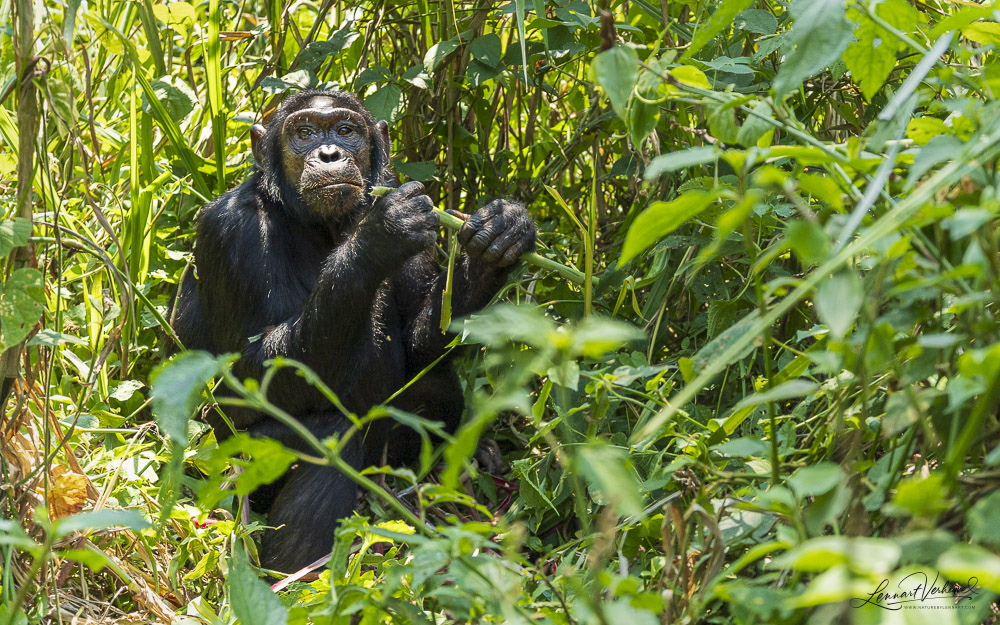
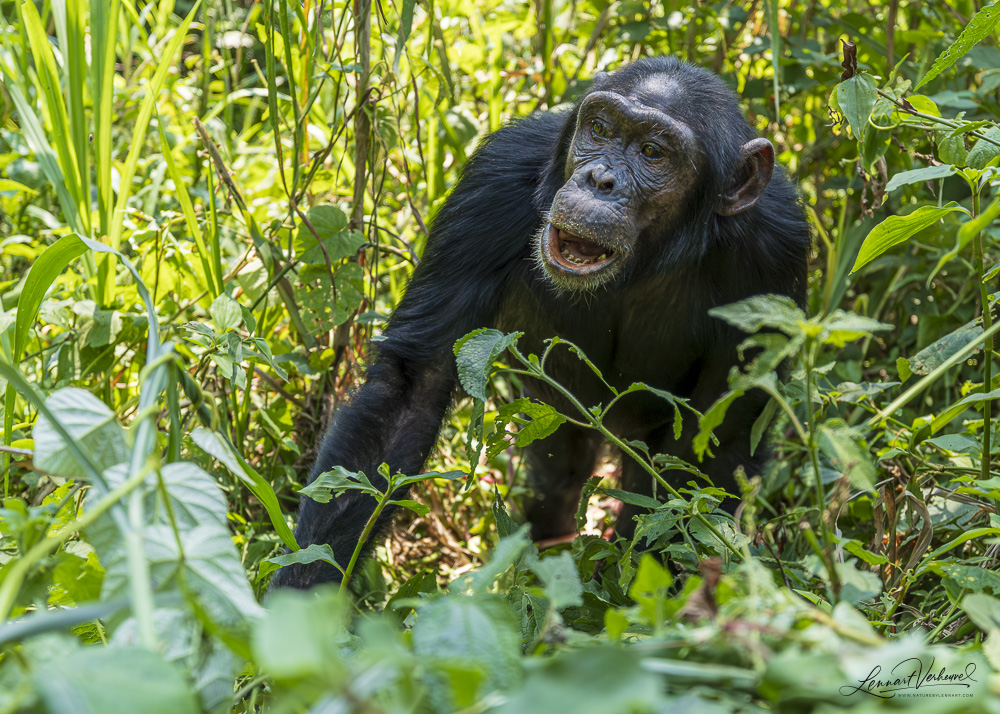
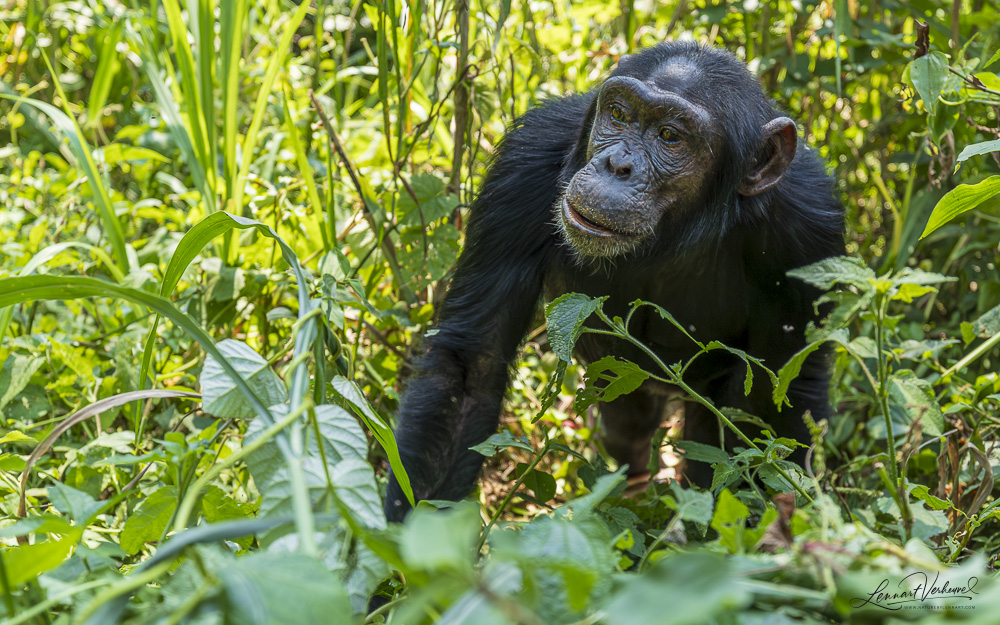
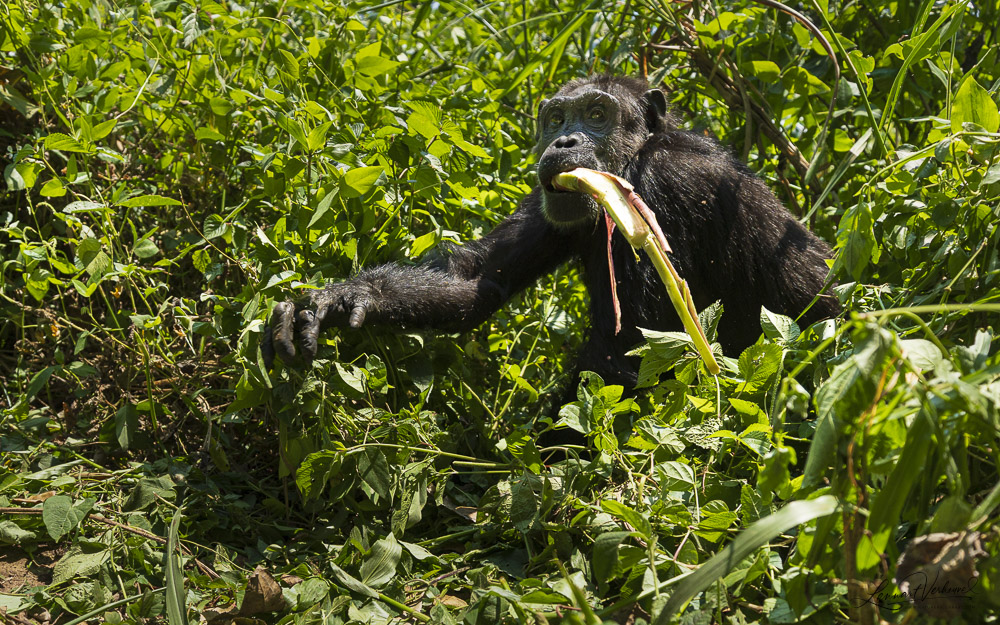
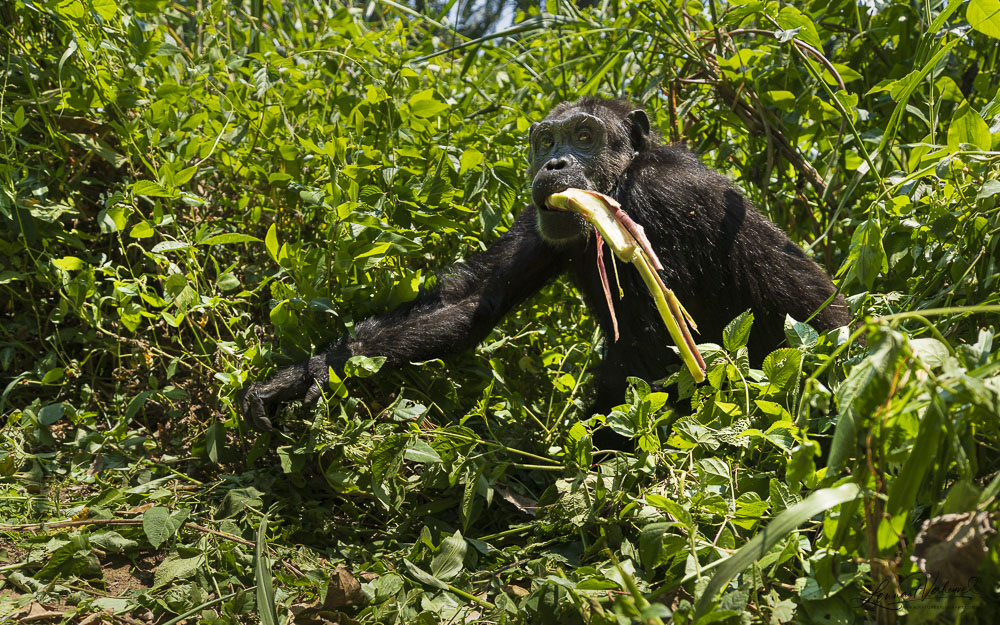
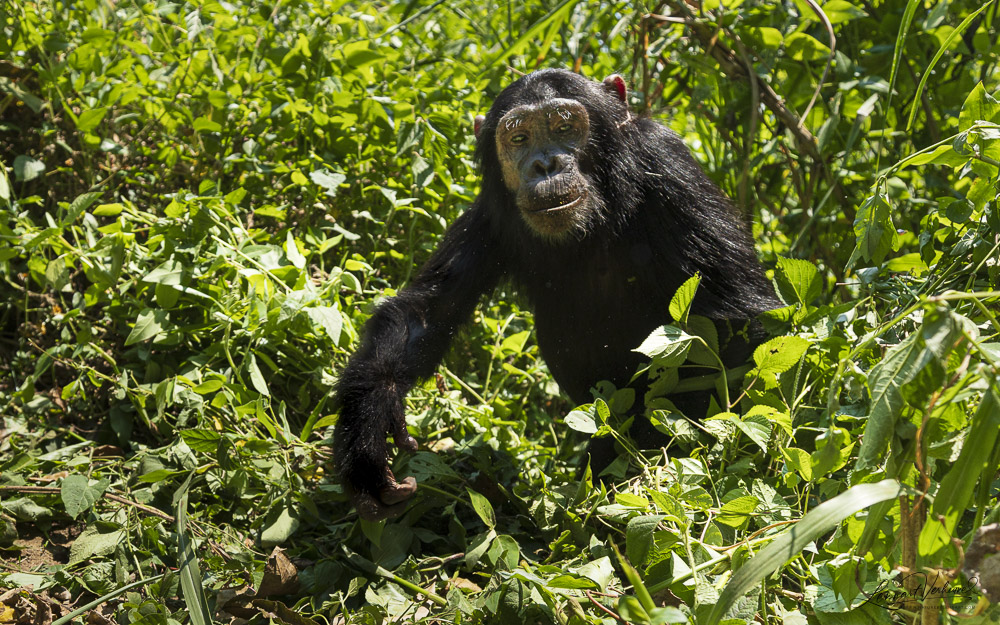
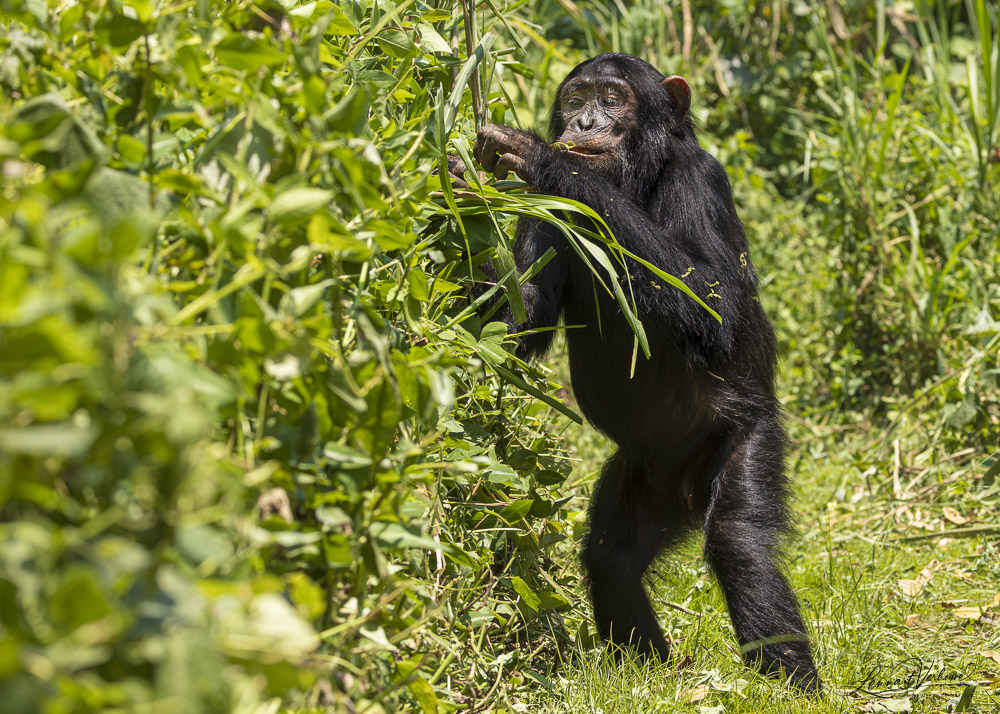
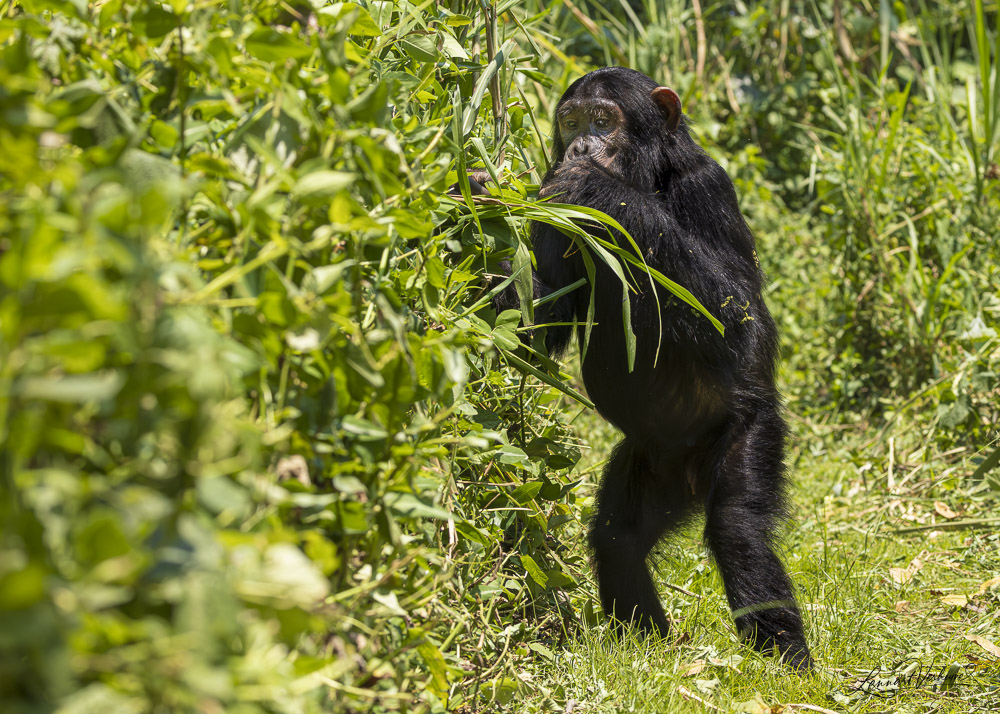
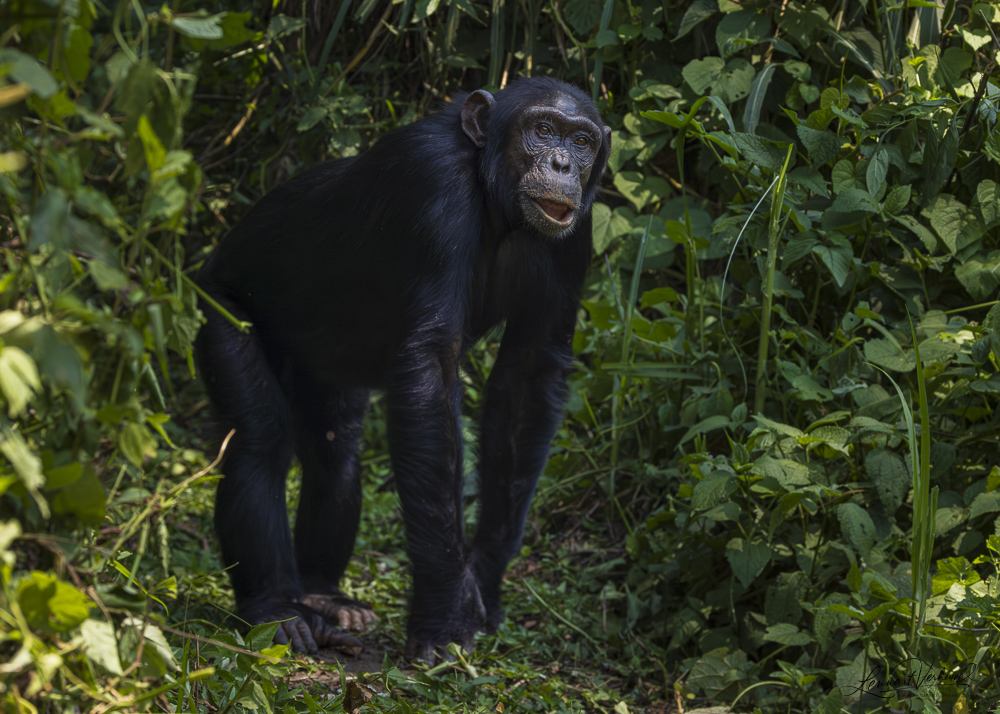
Chimpanzee
All in all, the Chimp Trek was a fantastic experience—easily on par with the Gorilla Trek.
The Day Continues
The day was already excellent, but a birder’s work is never done. In the afternoon we headed back into the forest for more birds. Soon we found another iconic species: the Crowned Eagle. This powerful raptor specializes in hunting monkeys and is the African counterpart to the Harpy Eagle in South America and the Philippine Eagle in the Phillipines. We first saw it in flight, then found it perched. Not a new species for us, as we had already seen one in Bwindi National Park, but still impressive.
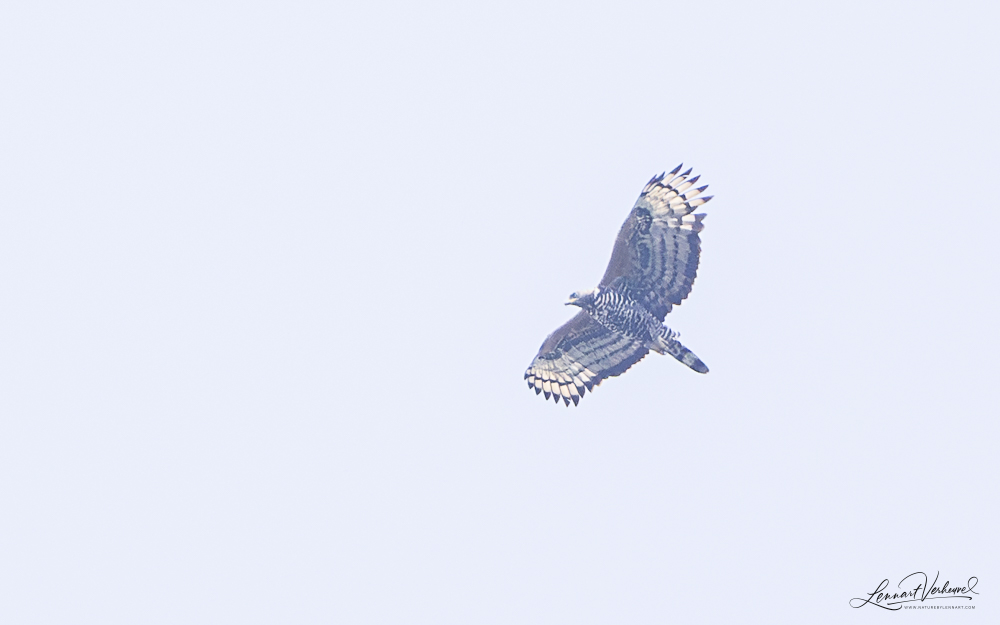
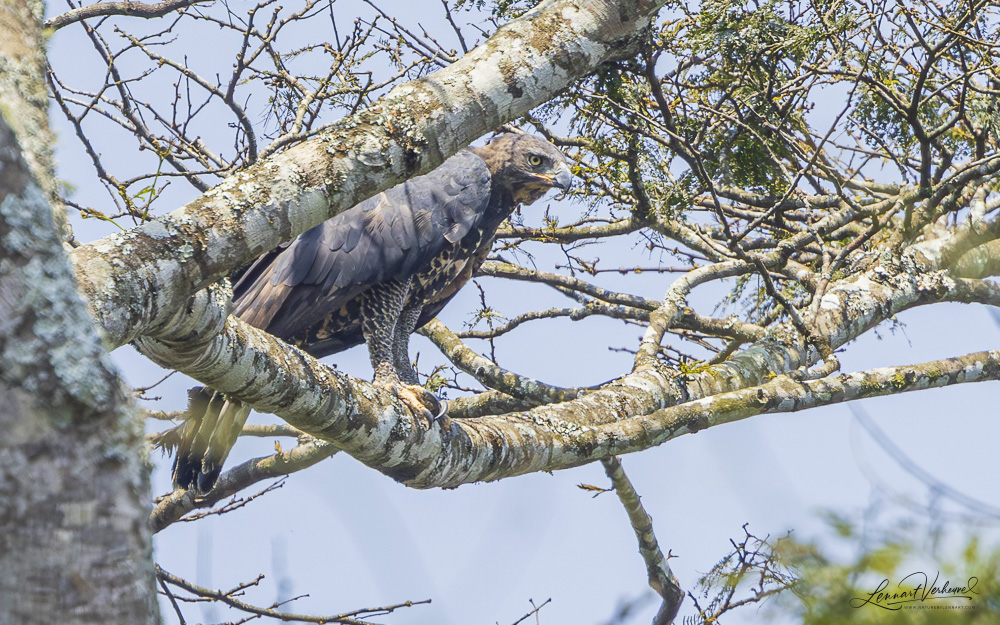
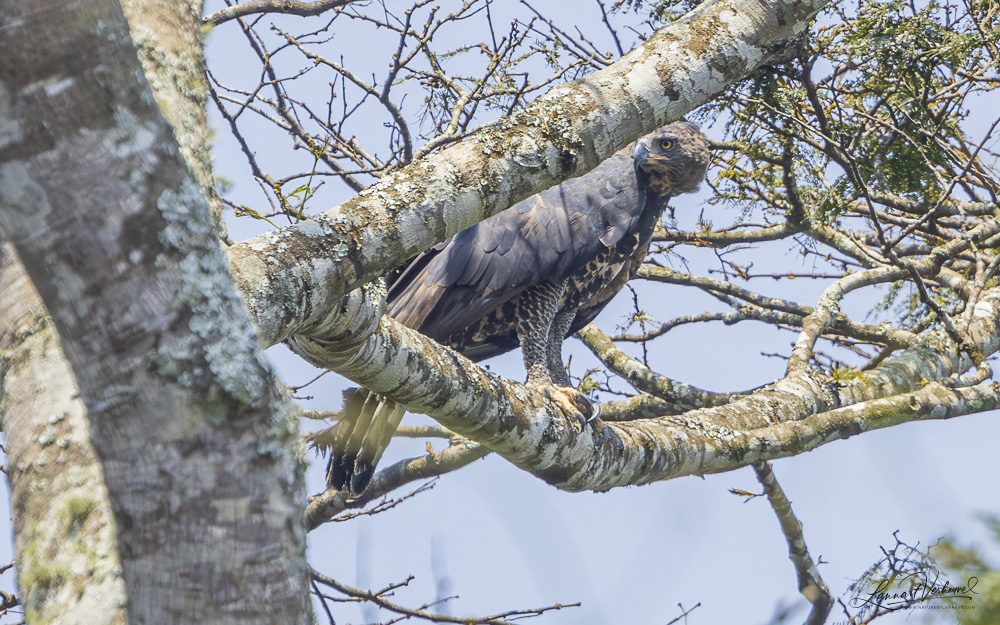
Crowned Eagle
Other new bird species followed, and we also spotted two Weyn’s Duikers, though views were poor. A bird we were particularly happy with was the Blue-throated Roller. Unlike other rollers, that can often be easily seen in savannah habitat, this one specialises in rainforest which can make it difficult to spot. We enjoyed excellent views.
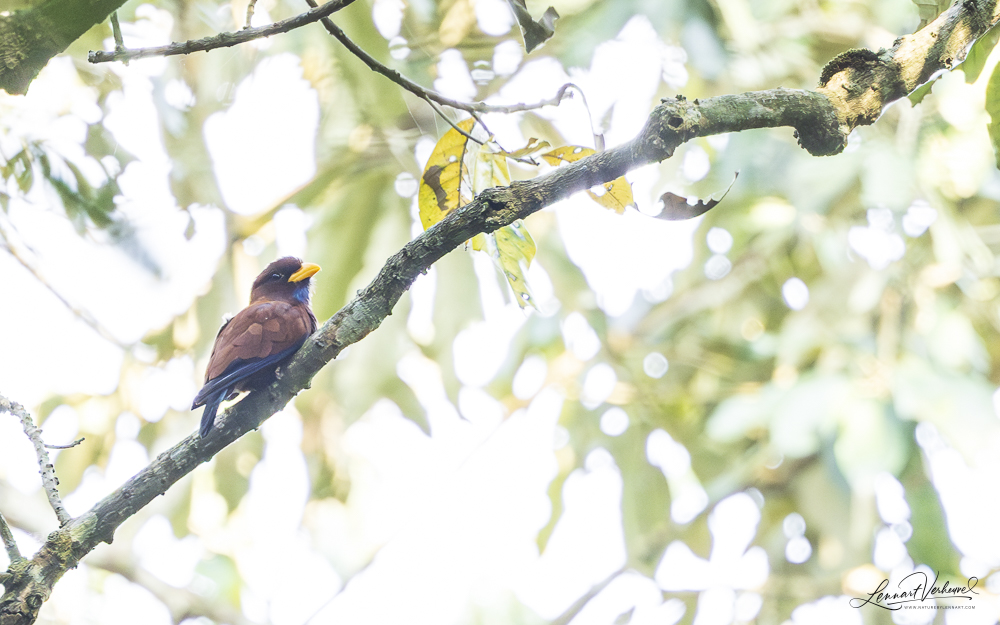
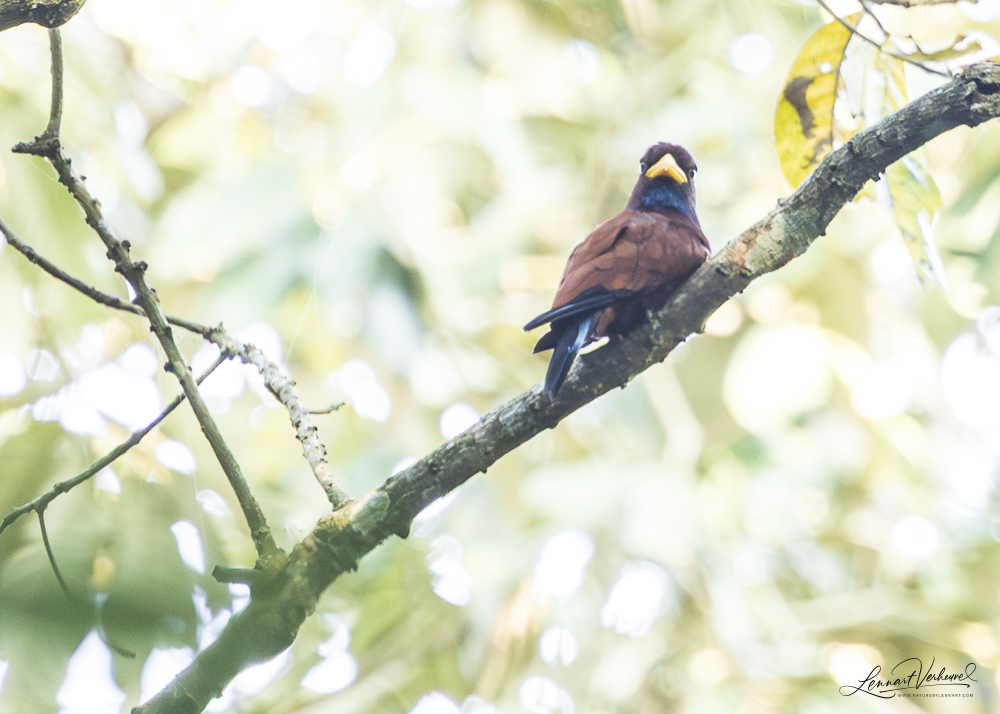
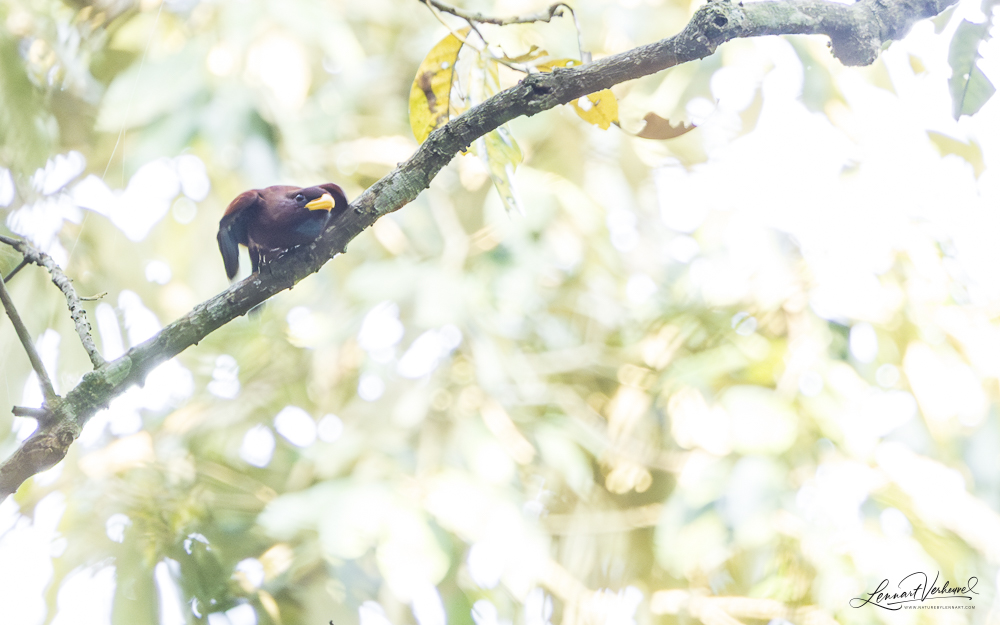
Blue-throated Roller
A true highlight came later in the day when we were surprised by a herd of forest elephants crossing our path. The African Forest Elephant is recognized as a distinct species, separate from the more familiar African Savanna Elephant. Forest elephants are restricted to African rainforests, though savanna elephants sometimes enter the forest—and hybrids exist.
One distinguishing feature is the position of the tusks. In our case, they looked good for forest elephants, though it’s hard to rule out any mixing. Good enough for me! I had thought we’d need to run at the sight of elephants, but it turned out to be calmer than expected, giving me the chance to take photos.
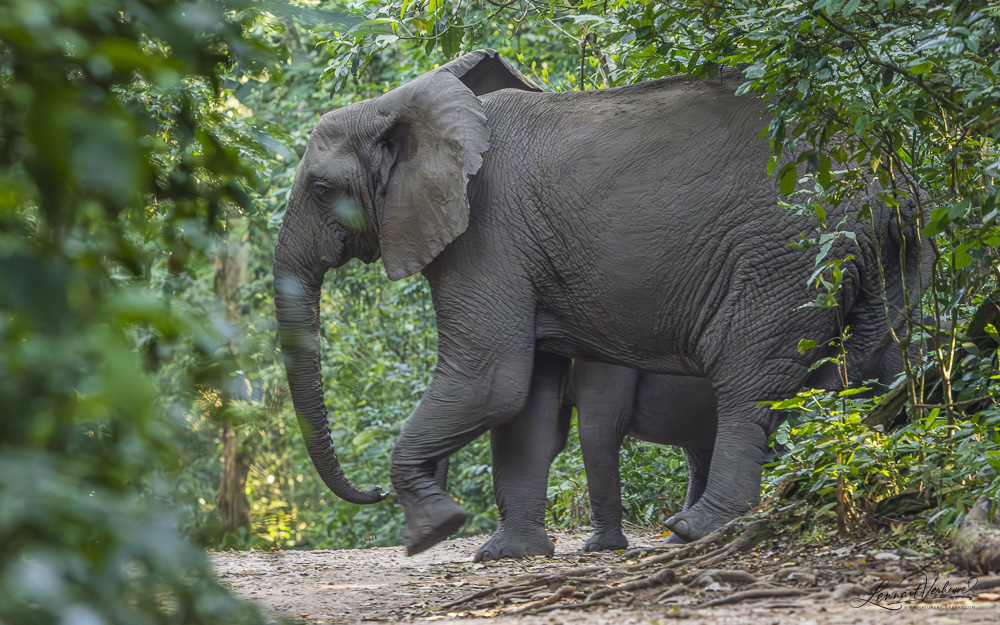
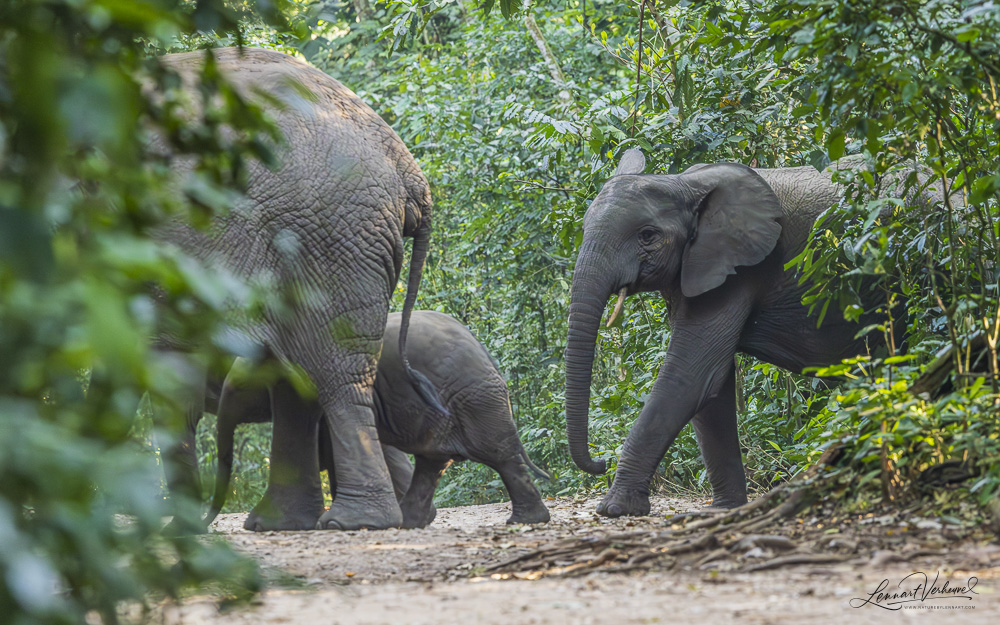
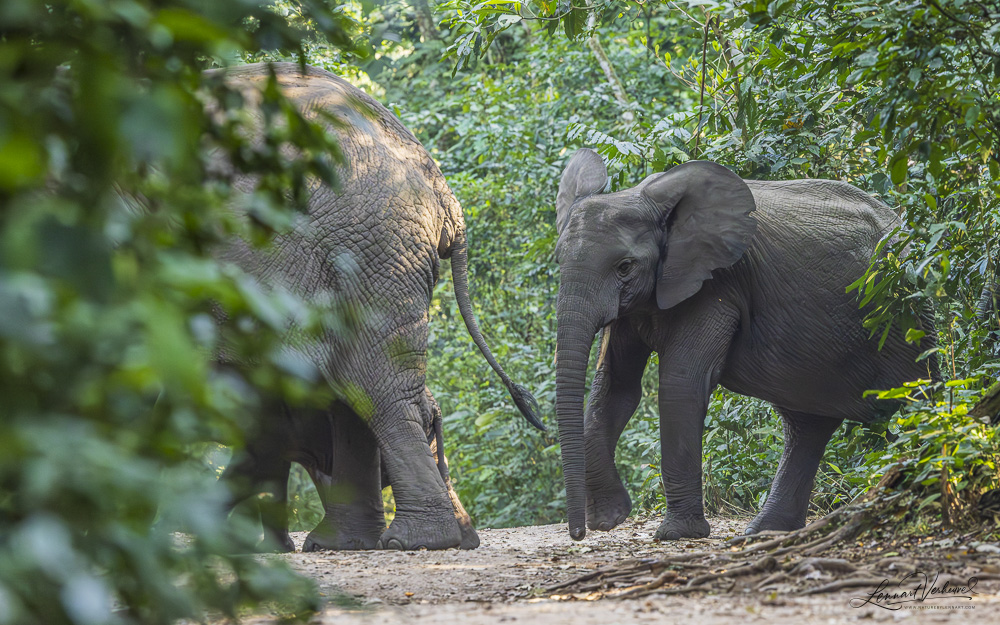
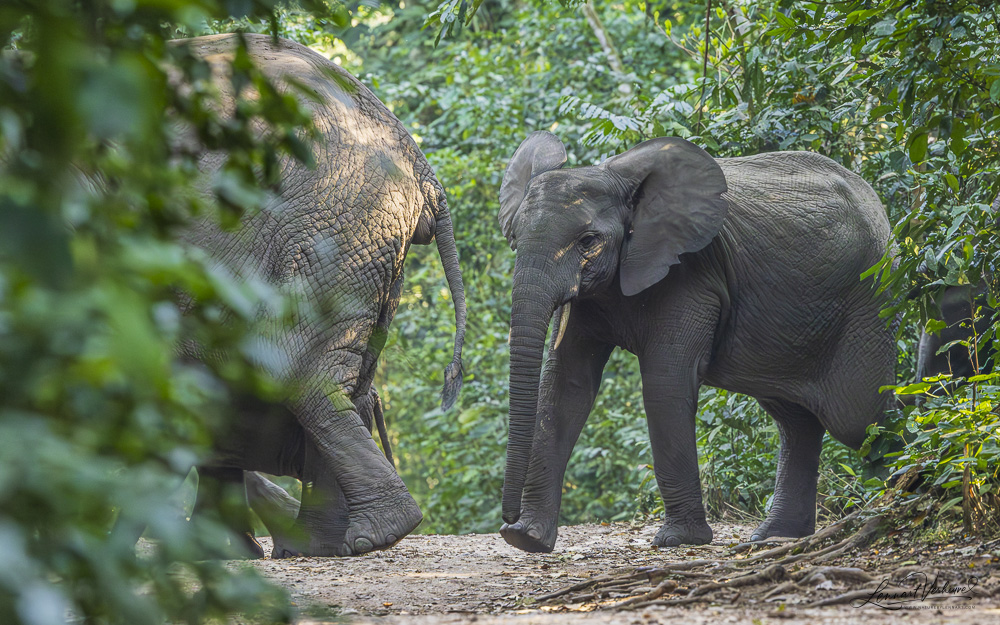
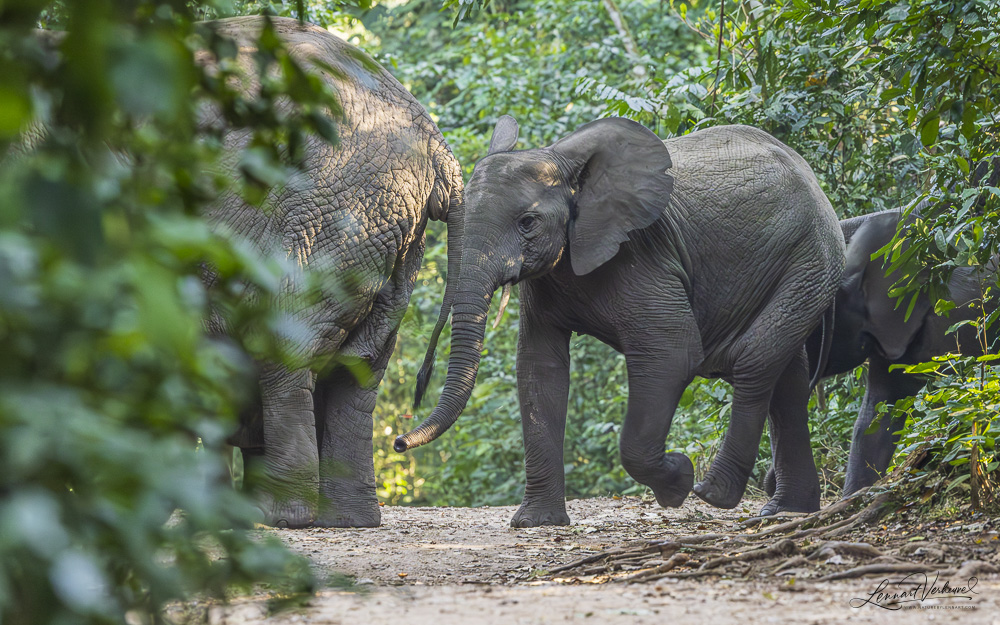
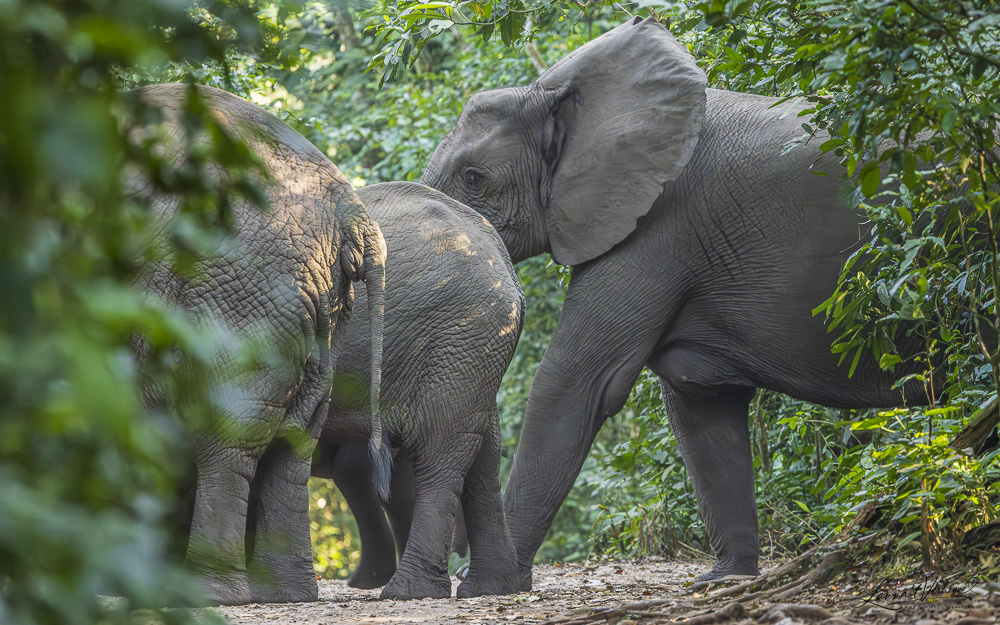
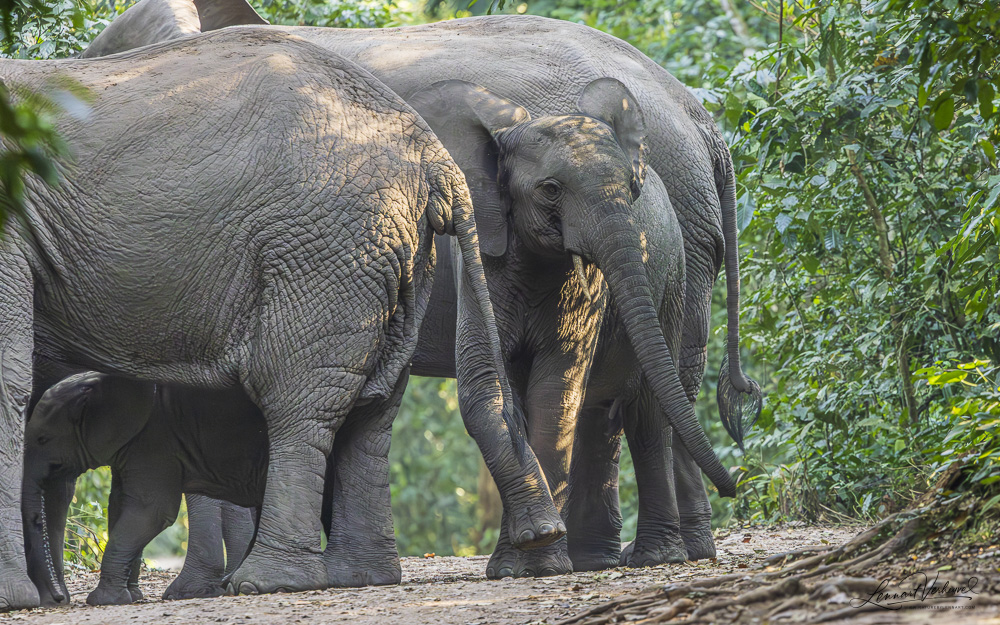
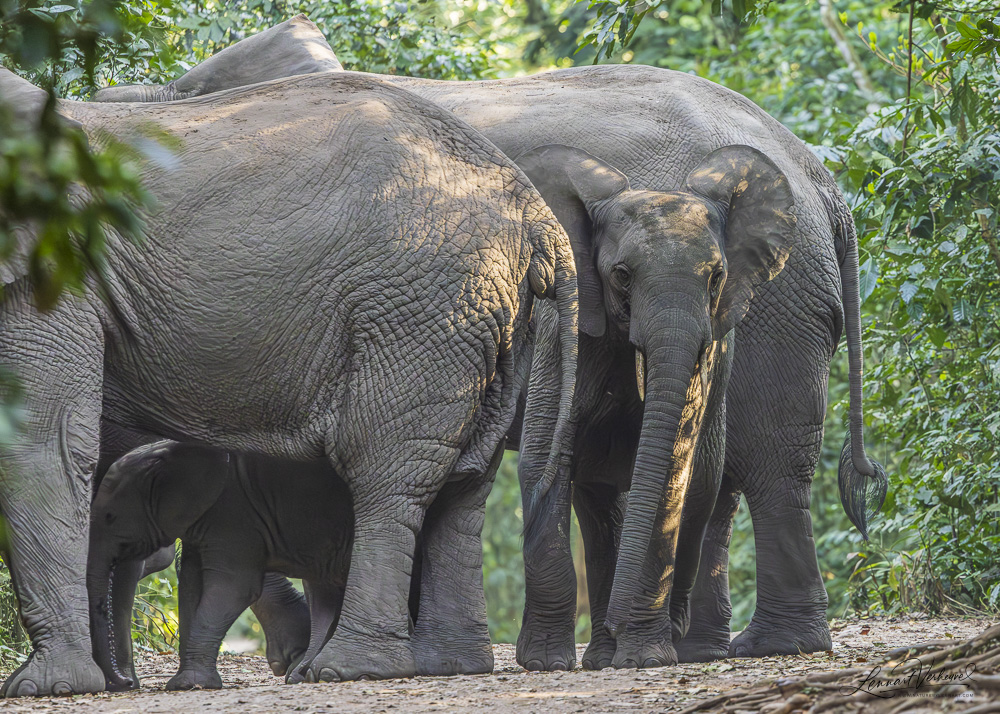
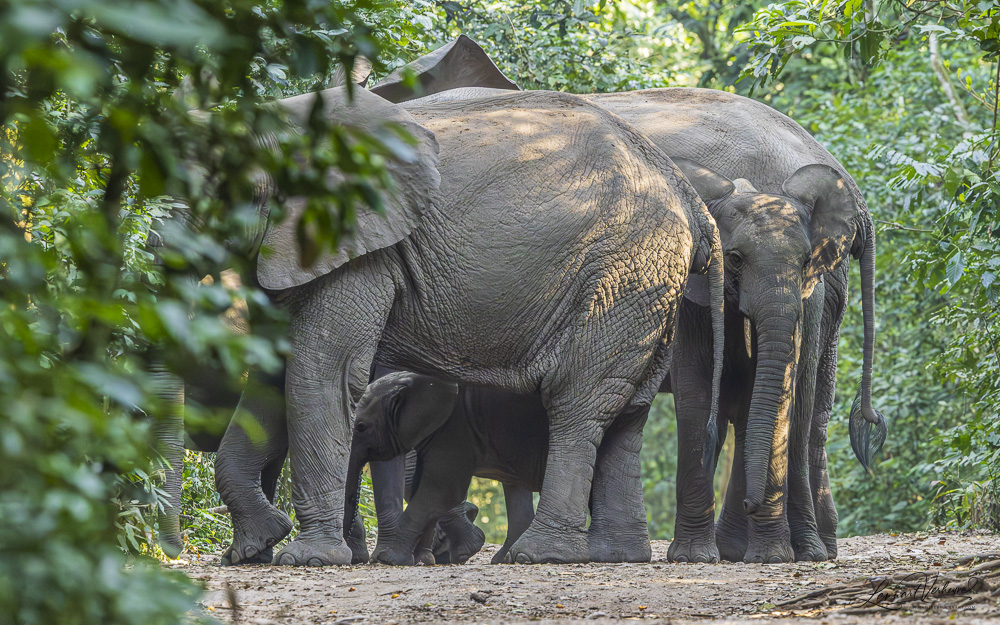
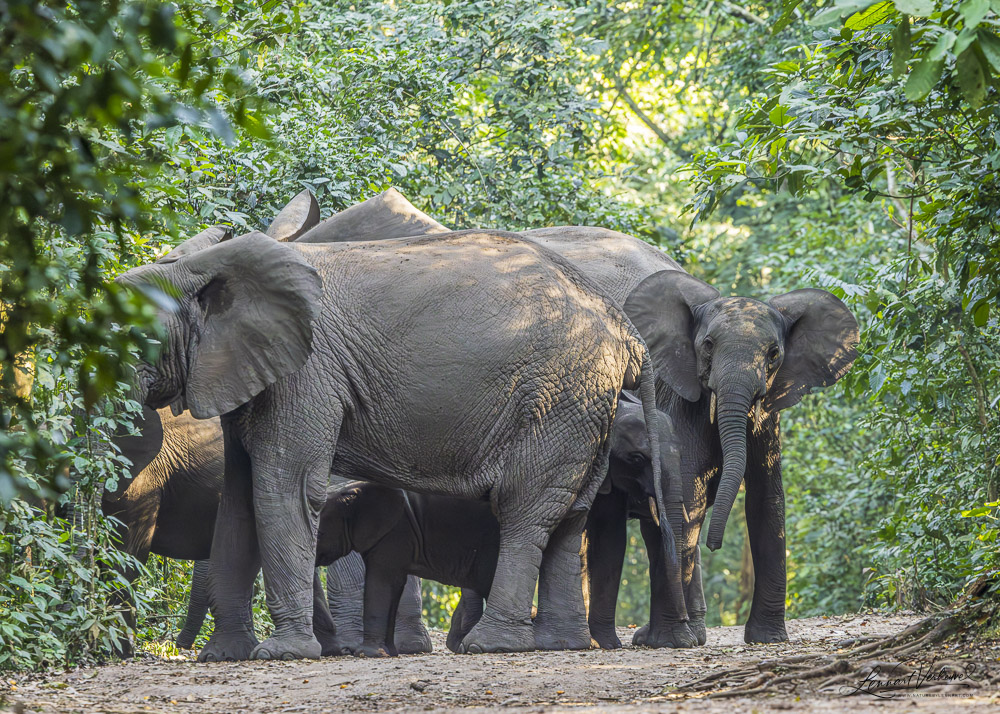
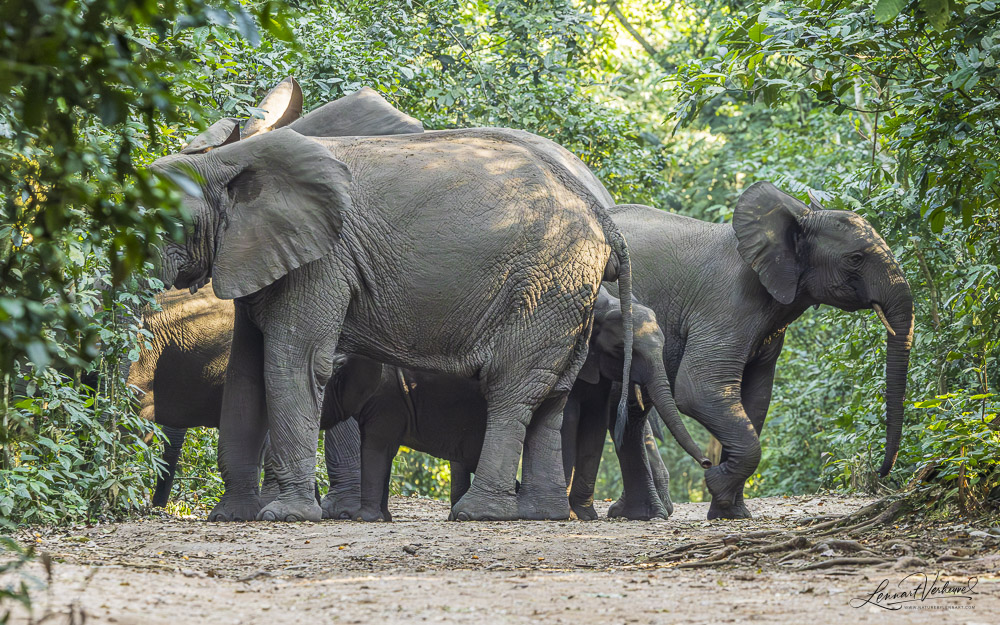
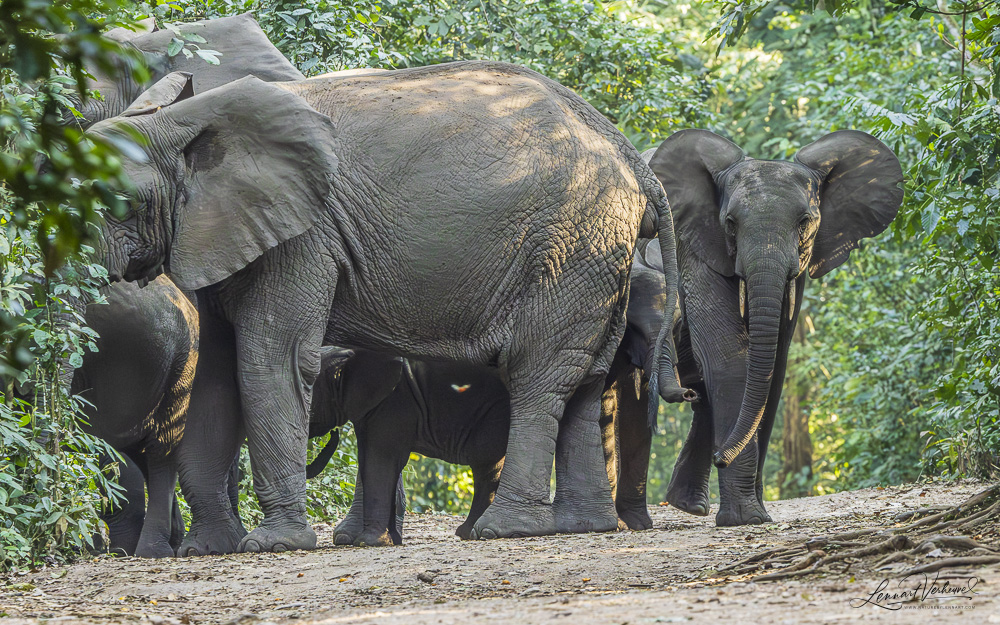
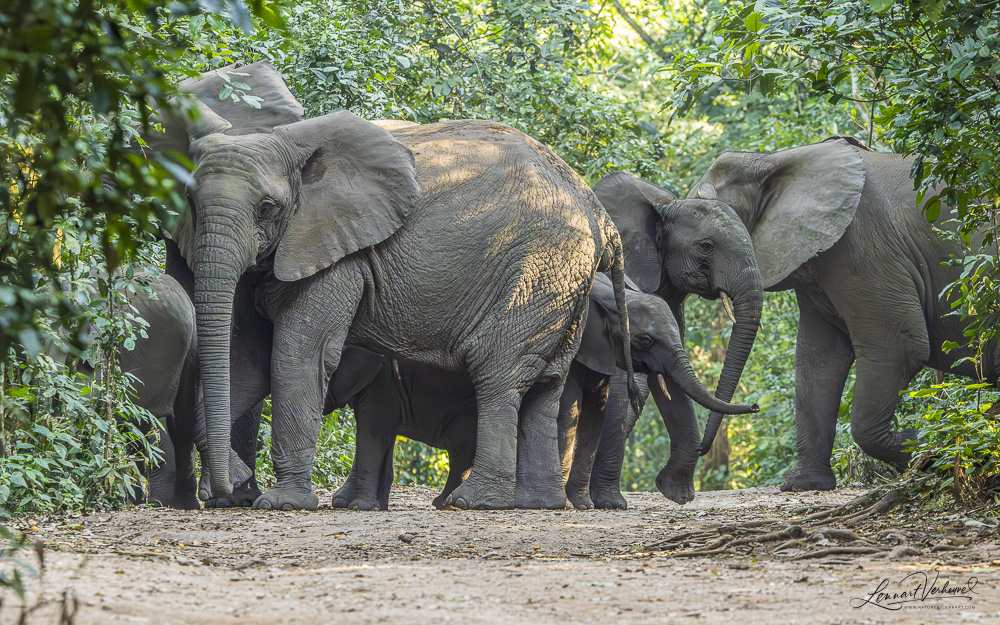
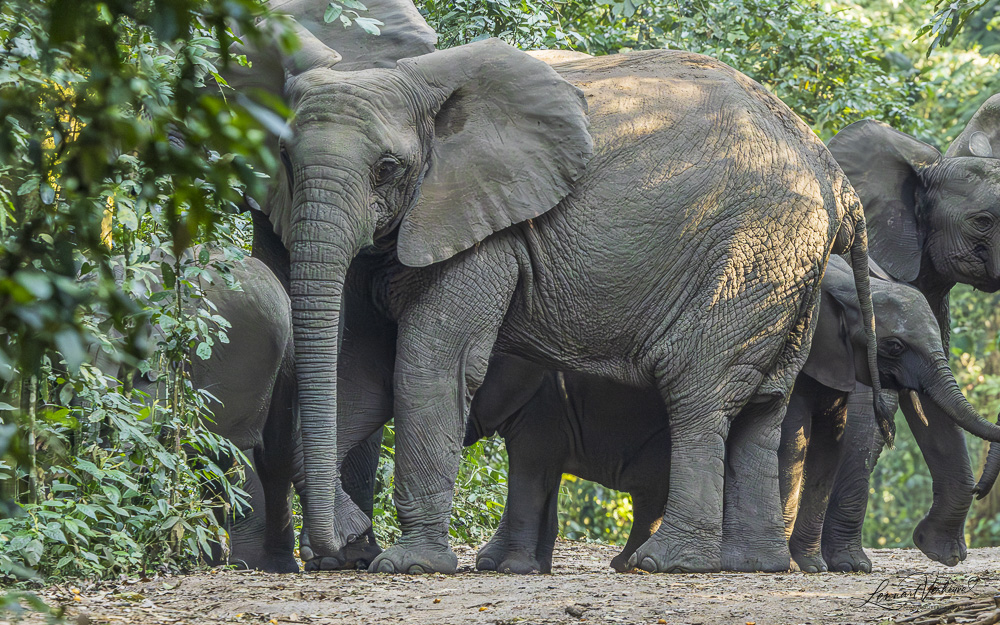
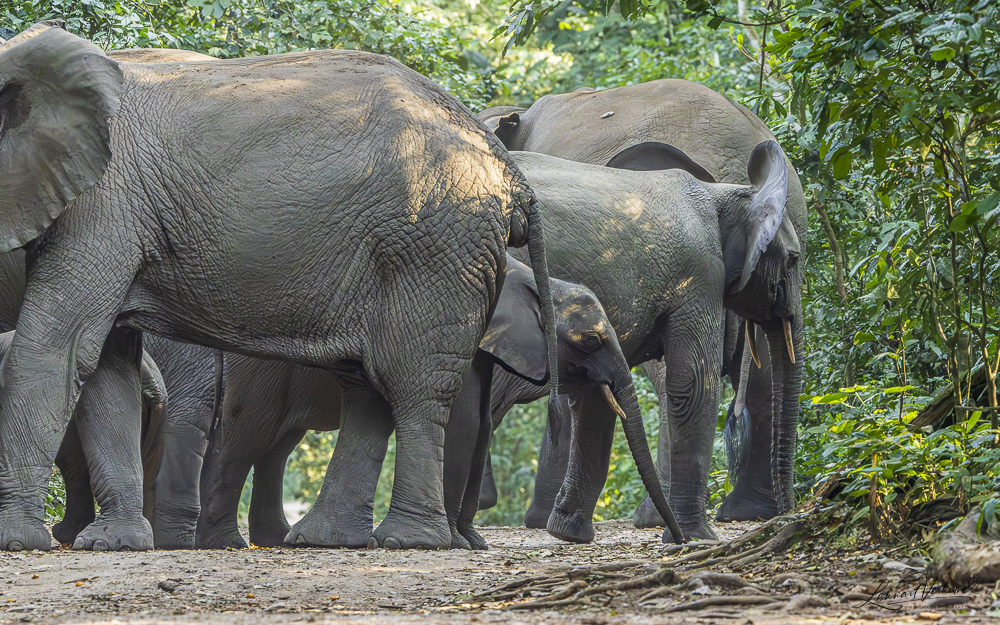
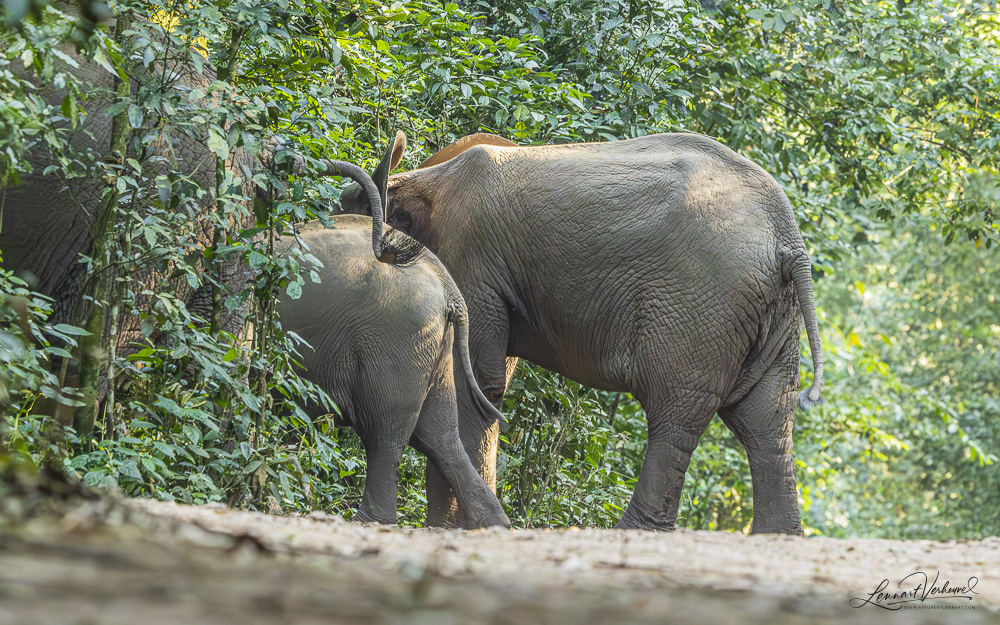
African Forest Elephant
A little further on we even came across some “bonus” chimps sitting along the roadside and climbing trees.
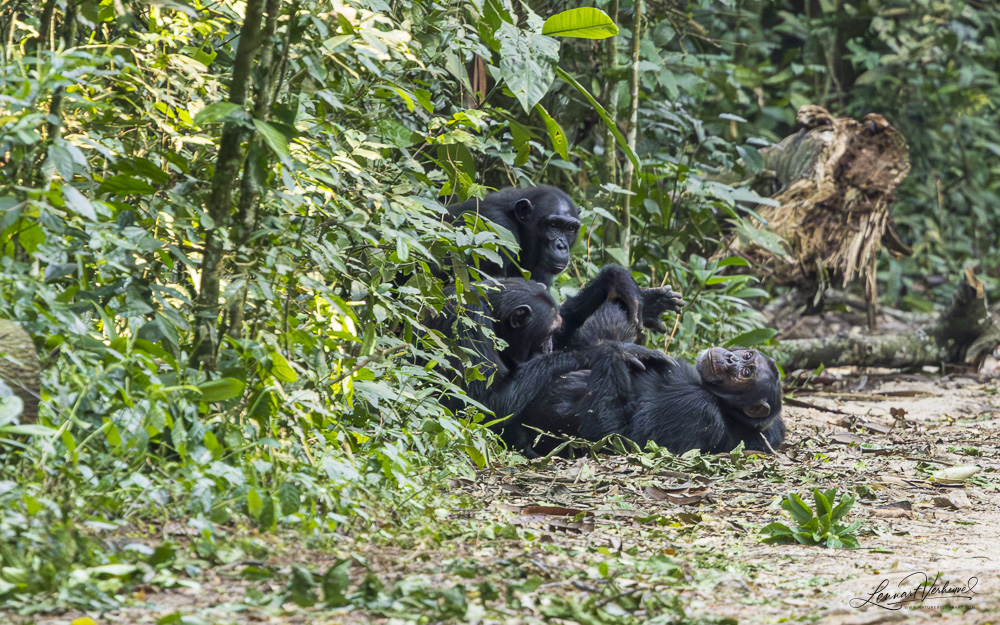
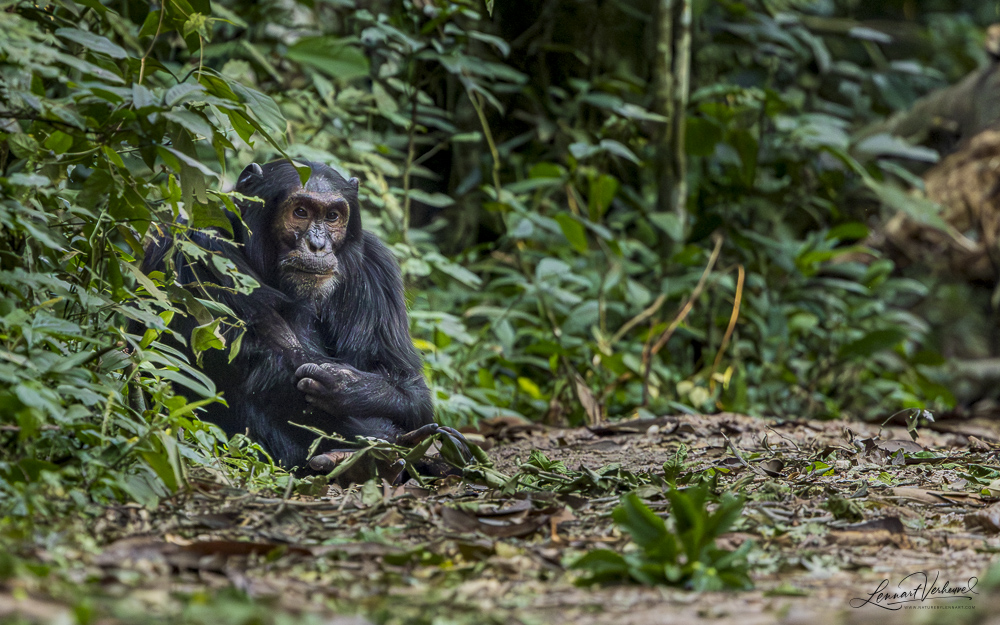
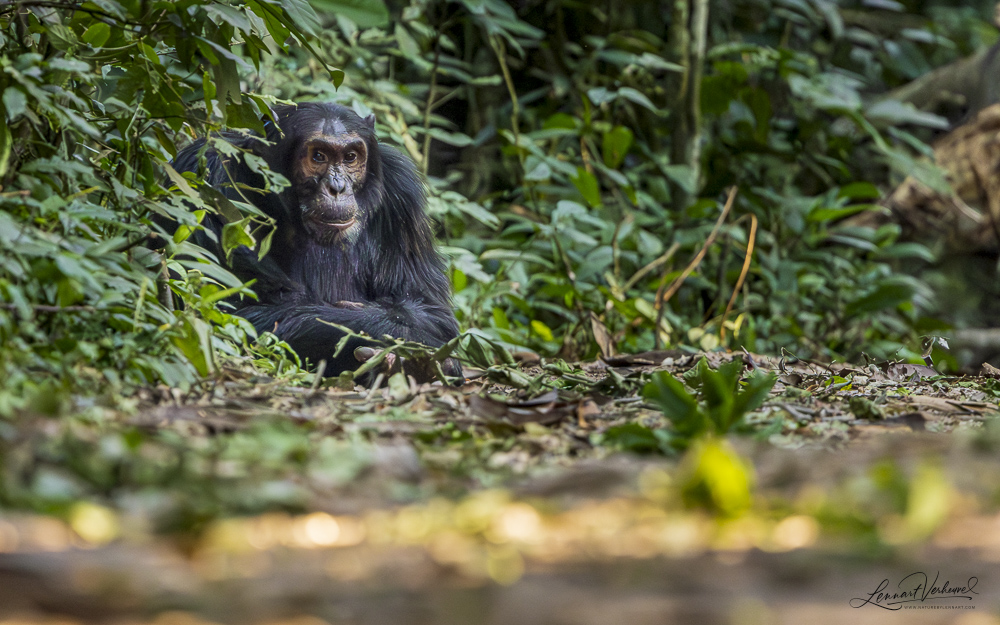
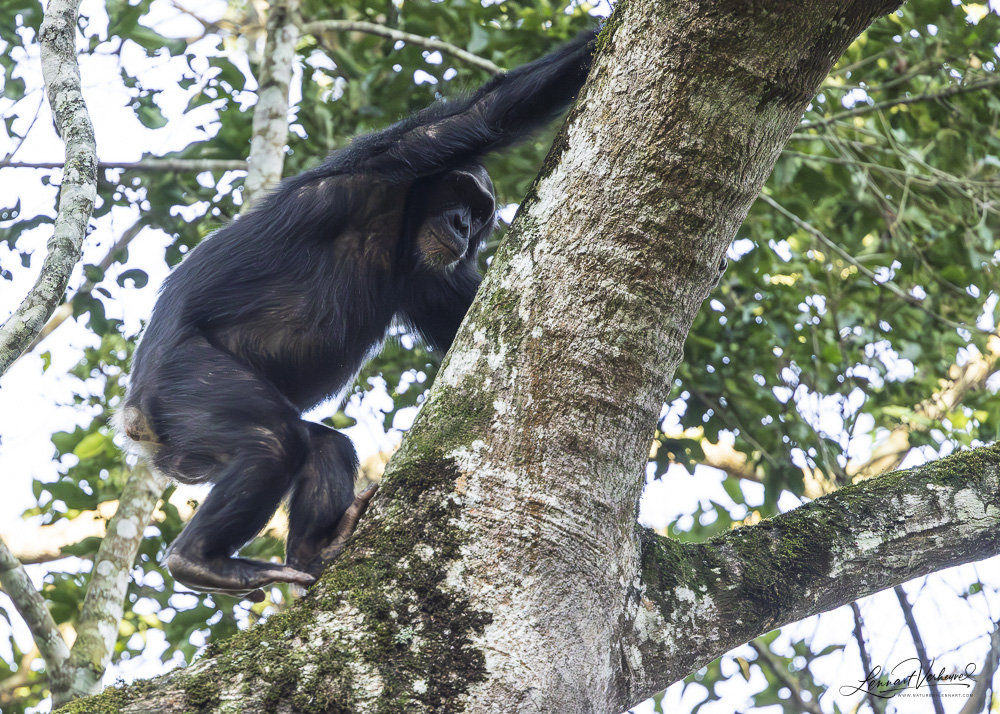
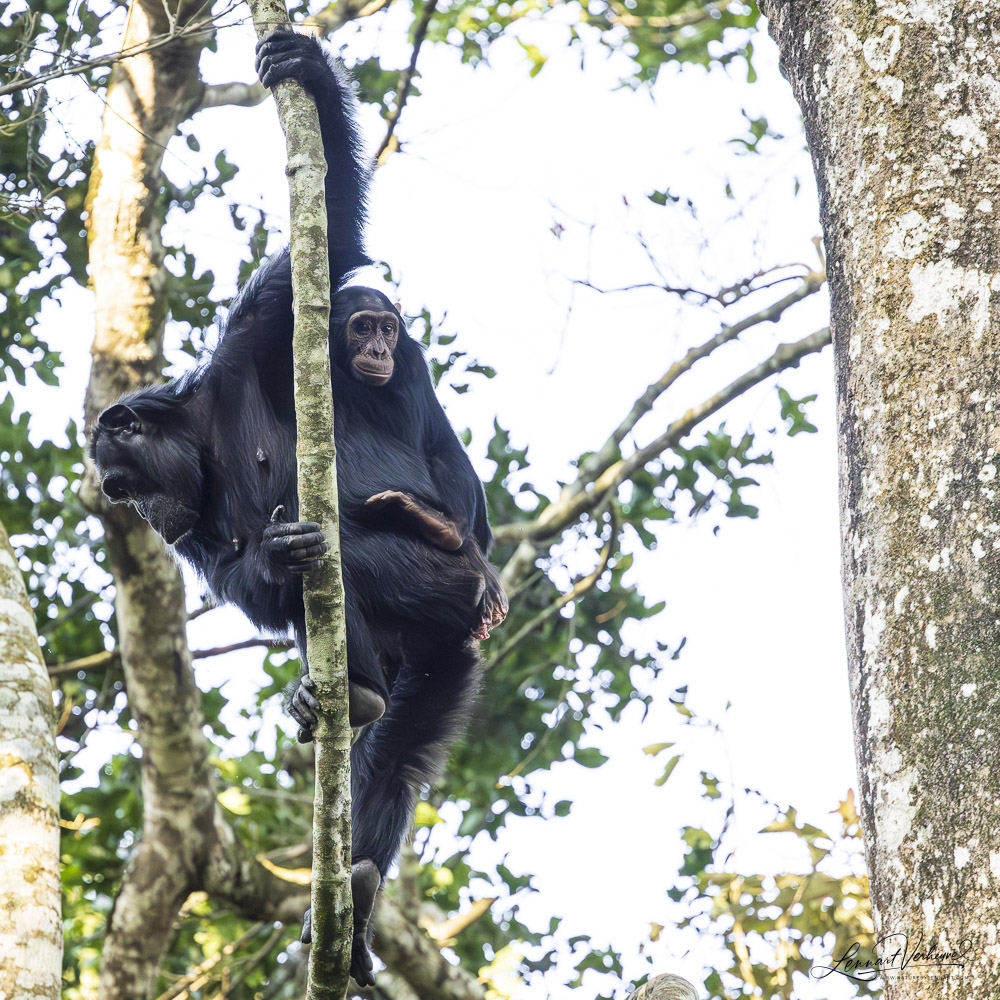
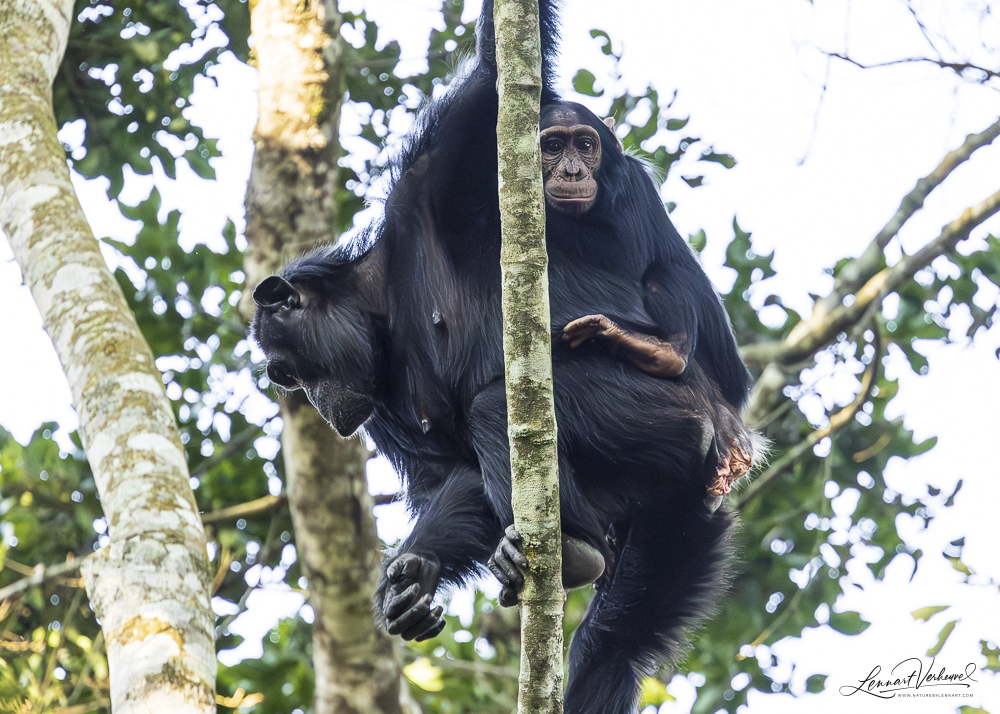
Chimpanzee
And so we had a very succesful day. One of my best in Uganda in fact. And it wasn’t over yet—we still had a night drive planned. First we tried for a new nightjar species, which we eventually saw, though only briefly. The African Wood Owl was much better: a lifer for me, and owls are always special.
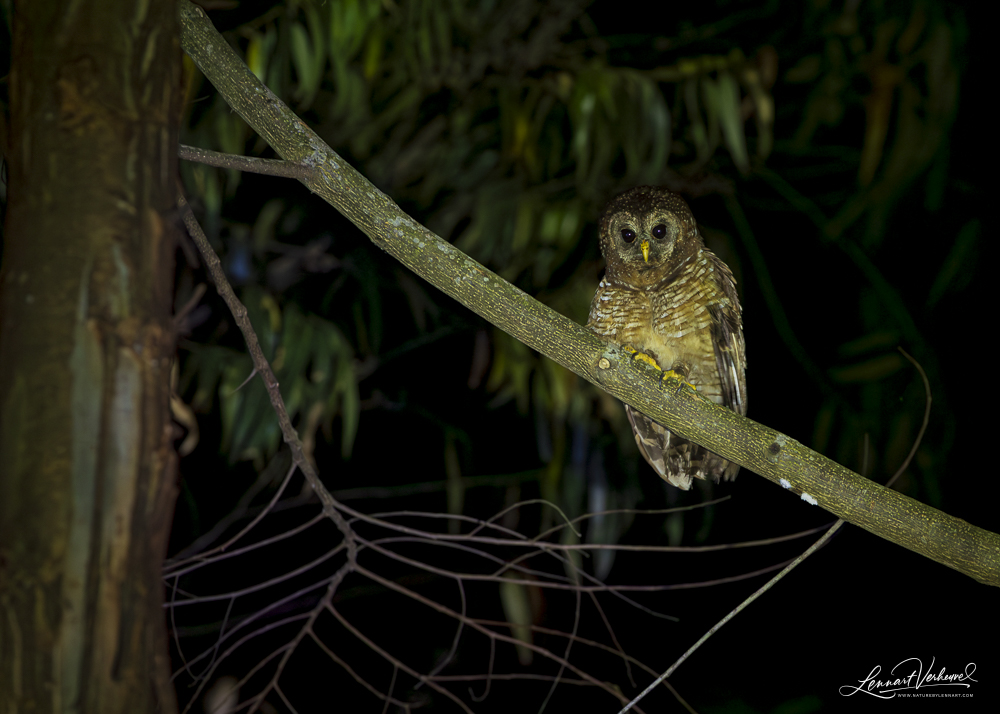
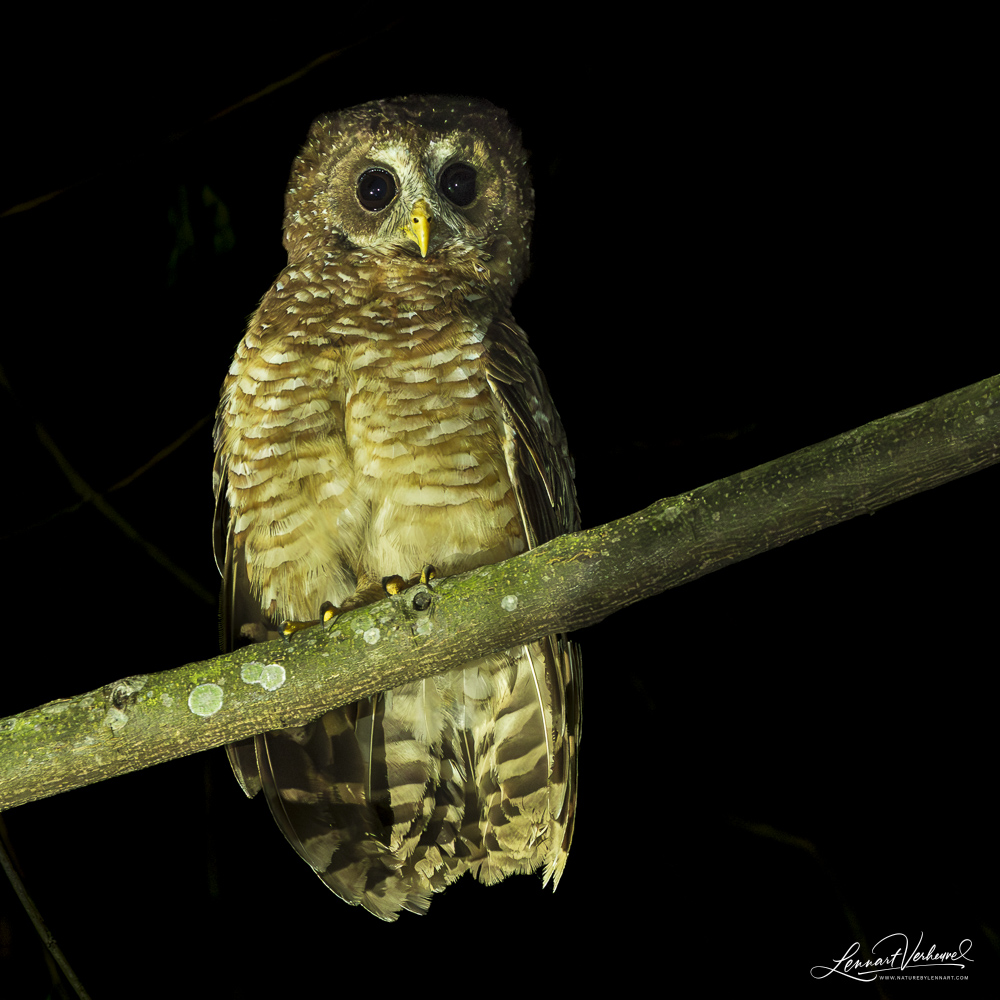
Another beautiful day in Uganda!
I also made a videoreport of this day, which you can watch on Youtube.
Want to see more from my trip to Uganda?
Read about it’s number one attraction: The Gorilla Experience!
Also read how we saw one the worlds best birds: the Shoebill!
Furthermore our visit of a special area with special species: Semliki!